Croatia Travel Guide: Things To Know Before Traveling To Croatia
Welcome to our Croatia Travel Guide where you will find all the information you need for planning a trip to Croatia.
When I think of Croatia, I associate it with small, safe, sublime, pebbles, islands, sea, and countryside. The country has over a thousand islands , 8 national parks , 11 nature parks, over 6.000 km of coastline, and ten World Heritage sites .

From Paklenica climbing sites , beautiful beaches of central Dalmatia , the great food of Istria , Croatia’s fabulous wines, partying on the islands, and sailing the Adriatic , Croatia has much to offer its visitors.
We’ve dedicated this entire website to this wonderful country. Vera was born and raised in Croatia, and I moved here in 2005. We’ve been traveling around Croatia extensively. And here at our blog, we share the best of Croatia just as we discover it.
Visitors to Croatia can find useful travel tips , in-depth destination guides, things to do , places to stay , and lots of information on Croatian food and restaurants. I also sometimes share my musings on ex-pat life in Croatia .
Table of Contents

Where is Croatia located?
Before moving forward, let’s get the basic facts sorted out. Croatia is located in Europe! It is a Central European and Mediterranean country, bordered by the Adriatic Sea to the west. Croatia shares borders with Italy, Slovenia, Hungary, Serbia, Bosnia & Herzegovina, and Montenegro. It shares The longest land border with Bosnia and the longest sea border with Italy.
Below you will find the location of Croatia on the map.

Do you need a visa?
Most foreign visitors don’t need a visa to enter Croatia, including, but not limited to, EU countries, the UK, the USA, Australia, Canada, and New Zealand.
Foreign citizens of those countries can enter Croatia and stay here for 90 days within 180 days.
Citizens of EU countries can enter Croatia using only their ID cards; all others need to travel with a valid passport to enter Croatia.
If you require a visa to enter Croatia but hold a valid Schengen visa, as well as visas for Cyprus, Romania, and Bulgaria, you don’t need a separate visa for Croatia. You are free to travel to Croatia under the condition of your current visa from the above-mentioned countries.
If you require a visa for Croatia, you can print and fill out the application forms here and submit them along with the requested documents to the Croatian Embassy, Consulate, or an accredited tourist agency.
To apply for a Croatian visa, you’ll need a valid passport issued less than 10 years ago with an expiry date at least three months after the intended departure date from Croatia.
All questions regarding visa you can send via [email protected].
Weather in Croatia

Croatia has three distinct climates: the continental climate in its interior, the Mediterranean along the coast, and the mountain above 1200 m.
Along the coast, you can expect dry, hot, and sunny summers and mild, although sometimes wet, winters. Weather along the south Adriatic region of Dalmatia is generally drier and sunnier than in the northern Adriatic region of Istria. Daily temperatures can differ up to 5°C (40°F).
Although the average summer temperatures are around 22°C (72°F), in July and August, you can expect over 40 days with daily temperatures of over 30°C (86°F). Average winter temperatures are around 10°C, with January being the coldest month with daily average temperatures of less than 10°C (50°F). The average sea temperature varies from 12°C (54°F) in winter to 25°C (77°F) in summer.
Croatia’s interior has a moderate continental climate. Winters are cold and wet, with lots of fog, while summers get hot and dry. Average winter temperatures are around 4°C (40°F), while the average summer temperature is around 22°C (72°F).
Money in Croatia
Croatian currency.
The Croatian currency is Euro, a common European currency, as of January 1, 2023. At the time of writing this article, for 1 $, you get almost 1 € (0,94 to be exact), for 1 £ you get 1,13 €, for 1 CAD, you get 0,70 €, and 1 AUD will get you 0,64 €.
Exchanging the money in Croatia
The majority of the exchange offices advertise a “no commission policy”. While it is true that they don’t charge the typical commission, they do set their own exchange rates. These rates can vary significantly. Beware of these discrepancies, and shop around for the best rate.
ATM machines in Croatia
When withdrawing money from an ATM, try to use official banks’ ATM machines (they should have a sign of one of the Croatian banks like Zagrebacka, Privredna OTP, Erste, or Adikko Bank). These ATM machines are usually near the bank’s branch offices.
In resorts and hotels, you’ll often find Euronet (blue and yellow), Auro Domus ATM machines (yellow and black), or any other non-bank ATM machine. While they are often located at more prominent spots in towns, hotels, and resorts and are thus more convenient to use, they are also more expensive. However, if convenience is more important to you than a few euros here and there, go ahead and use these machines as well. I personally never use them.
Credit cards in Croatia
Although credit cards are widely accepted in Croatia, they aren’t accepted everywhere. One of the first things you will notice in Croatia is the abundance of ATM machines wherever you go. Smaller businesses, as well as some restaurants and bars, prefer cash. A general rule of thumb is that if you see a credit card sticker at the door or near the cashier, you should be able to pay by credit card. But the only safe way to know is to actually ask.
Another thing regarding money that you need to be aware of is the so-called dynamic currency conversion . This basically means that the amount of your credit card transaction is converted to your home currency at the point of sale (rather than by the card issuer).
In hotels or restaurants, or just about anywhere you intend to pay by credit card, the staff will ask you if you prefer the charge in local currency (Euro) or your own currency. While theoretically, you might sometimes profit from being charged in your own currency by a merchant on the spot, it rarely happens in reality. You will just end up paying more than you otherwise would. So, always choose to pay in local currency . Or ask for the exchange rate and compare it with the one you find that day on the internet.
When is the high season in Croatia?
The high season in Croatia is from mid-June to mid-September. The peak travel time includes the last week of July and the first two weeks of August.
However, the busiest time is not always the best time to visit Croatia.
Best time to visit Croatia
The best time of the year to visit Croatia is in June and September . There are far fewer people around (definitely no queues, traffic jams, or crowded beaches), the weather is still warm and sunny, prices are more affordable, and the sea is warm enough to swim in. Another tip: The Sea is usually warmer in September than in June.
Also, remember that Croatia is extremely popular among Germans and Austrians, especially the northern Adriatic regions of Istria and Kvarner. So, crowds (and accommodation prices) tend to increase around German school holidays (like Corpus Christi – it’s either in mid-May to early June or late May to mid-June; it changes from year to year). Ha, but this also means that in the year when German school holidays are in May, hotels often offer special discounts for June. And vice versa.
What to bring to Croatia
We all have our own rules and tricks when it comes to packing. However, we’ll give you a few ideas on what to bring and what to wear in Croatia.
Croatia has four seasons and three distinctive climates: a Mediterranean climate along the coast, a mountain climate on its rugged mountains, and a continental climate inland.
This means that if you are visiting Croatia during the summer, most of your clothes should be light. Nevertheless, a windbreaker jacket, a pair of long pants, and leggings always come in handy. For the rest, take a couple of shorts and tops that you can mix and match or a few casual summer dresses. Don’t forget your beachwear, including swimsuits and cover-ups, water shoes, sunglasses, and a microfiber towel. A pair of sandals and a pair of walking shoes are also a must, as well as a travel money belt .
Also, with luggage restrictions and weight limits, it’s worth investing in lightweight luggage to travel to Croatia.
As for the rest, don’t forget your photo equipment (with plenty of extra batteries), waterproof phone bag, adapters, converters, and other small things you will find indispensable in Croatia. Croatia uses 220V, 50 Hz frequency, and type C & F plugs. Both are similar plugs with two round prongs with 19 mm between them.
Here is our full post on what to bring and what to wear in Croatia.
Getting to Croatia
Traveling to Croatia from anywhere in Europe is quite easy. From April through September, many airlines have direct flights from all over Europe to all major Croatian towns. Besides, Split and Zagreb are connected by plane with the rest of Europe throughout the year. For detailed information on flights scheduled to Croatia, consult the CheapOair website.
We’ve also recently found out about Scott’s cheap flights program . They basically search for airline mistakes or intentionally great deals and email them to you. We haven’t used it, but it seems worth a try (they have a free plan too).
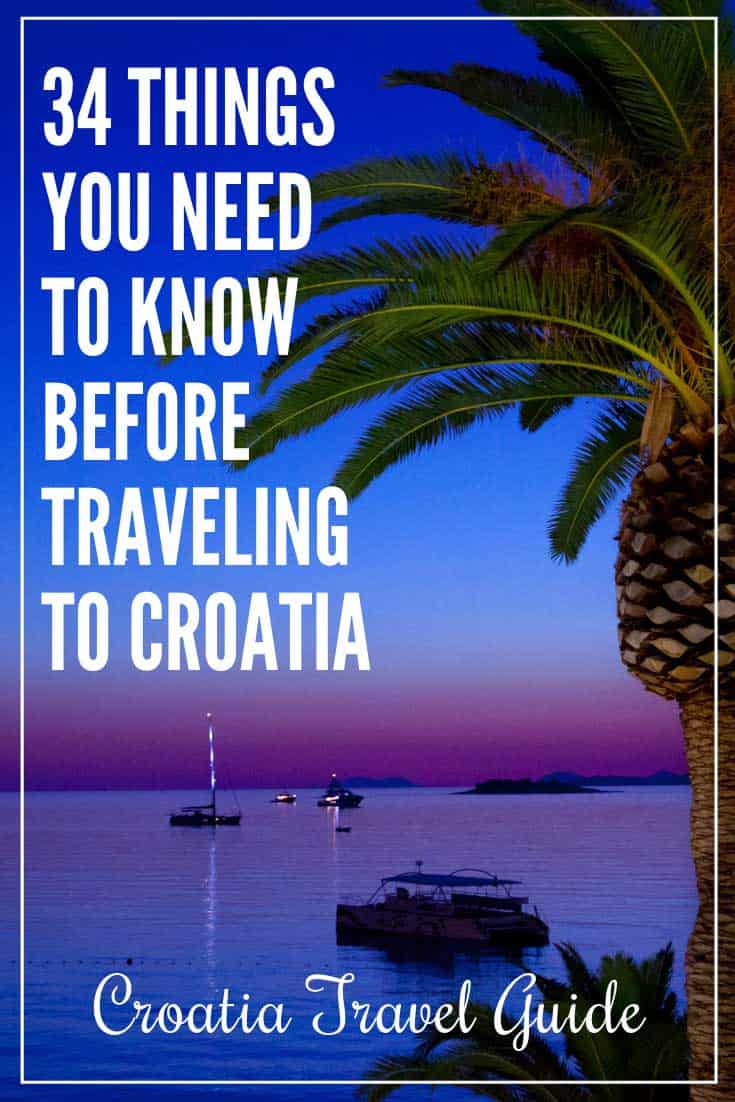
You can also travel to Croatia from other European towns by bus . Bus schedules are a bit harder to search for as many bus companies run the service. However, if you want to travel by bus, we highly recommend using the GetByBus website to check and book intercity buses in Croatia and beyond.
You can also check with a local bus station once you are at your destination and can physically walk there. Getting information over the phone or email can be impractical and expensive (yes, they still use automated phone machines that make you wait forever and charge you a fortune for waiting!).
Find out more here:
- Zagreb Bus Station
- Split Bus Station
- Zadar Bus Station
Train connections to and around Croatia are quite limited, and we generally don’t recommend traveling by train to Croatia. However, if you really have to, you can find more information on the Croatian Railways website .
International ferries connect Croatia and Italy. Directferries’ website is the best place to check ferries schedules and book tickets online. Jadrolinija operates Bari to Dubrovnik, Split to Ancona, Split to Bari, and Zadar to Ancona car ferry lines, while Venezialines passenger ferry connects Porec, Rovinj, and Pula with Venice.
Our favorite way to travel around Europe, and to Croatia as well, is by car . Whether it’s your own car or a rental car , it’s the most convenient way to move around Europe.
Getting around Croatia
The best way to travel around Croatia is by car . Croatia is a small country with great roads and nice little villages , totally worth a detour. The only way to really discover the country is to travel by car. We’ve written a full post about driving in Croatia and car rental in Croatia .
Another excellent way to travel around Croatia is by bus . Buses are modern, fast, affordable, and frequent. The islands and Istria are the only places we wouldn’t recommend bus traveling . For the rest, if you can’t travel by car for whatever reason, hop on the bus and enjoy the ride. Use BookAway to check lines and schedules and to book your bus ticket online.
Ferries are still the most popular and sometimes the only way to get to the islands. The main ferry ports include Rijeka, Zadar, and Split, but ferries also depart from smaller coastal towns like Brsecine, Makarska, Drvenik, Orebic, Ploce, and Prapratno. Jadrolinija is the largest ferry operator in Croatia, and its ferries cover most of the routes. You can also book your ferry tickets for some routes online through the Bookaway website .
Public transportation in bigger towns is reliable and efficient. Split, Rijeka, Zadar, Pula, and Dubrovnik use city buses, while Zagreb has an extensive network of electric trams and city buses. Public transport costs around 2€ per ride.
Taxis are generally pricey (except in Zagreb and Rijeka), but since Uber entered the market in 2015, cab rides have become more affordable. UberX is available in most popular tourist towns like Zagreb, Split, Rovinj, Dubrovnik, Zadar, etc… Uber and Cammeo Taxi are the cheapest taxi options in Croatia. However, both companies also adjust their rates to demand dynamically, and rates generally increase during the main tourist season.
Croatia holiday destinations
One of the most common questions is where to go in Croatia . Many visitors who travel to Croatia for the first time tend to visit the main tourist towns and attractions, like Zagreb, Split, Plitvice, Hvar, and Dubrovnik. However, Croatia has many hidden gems , charming villages , wonderful natural sites , and beautiful beaches .
Where to go depends heavily on the type of traveler you are, the things you want to do , the time you plan to spend in Croatia, and your budget .
We have written extensive travel guides on the following holiday destinations in Croatia:
- Split Travel Guide
- Dubrovnik Travel Guide
- Zagreb Travel Guide
- Plitvice Lakes Travel Guide
- Hvar Island Travel Guide
- Rovinj Travel Guide
- Porec Travel Guide
- Rabac Travel Guide
- Pula Travel Guide
- Brac Island Travel Guide
- Peljesac Peninsula Travel Guide
- Dalmatia Region Travel Guide
- Dubrovnik Region Travel Guide
- Istria Travel Guide
National parks
Croatia is a small country with a surface of just over 56.000 m2. However, due to its geographical location, geomorphological and ecological conditions, and climate, in terms of biodiversity, Croatia is one of the richest countries in Europe.
The nature here is divine: from the Adriatic sea and high-rising mountains to the plains of Slavonia and the rolling hills of Istria and Zagorje.
The country has eight national parks, ten nature parks, and two strict reserves. Almost 10% of the country’s territory is protected. The national parks of Kornati, Brijuni, and Mljet are located on the islands and are characterized by rich marine life. The Risnjak, Northern Velebit, and Paklenica national parks cover mountainous areas. They all feature interesting limestone rocks, meadows, and vast forests.
Plitvice Lakes, Croatia’s most visited national park, and Krka national park are famed for their lakes, streams, rapids, and waterfalls.
Unesco World Heritage Sites
Croatia doesn’t lack cultural and historical sites. Even ten of them made it to the Unesco World Heritage Sites list.
These sites include The Euphrasian Basilica in Porec, St. James Cathedral in Sibenik, the old town of Trogir, Diocletian Palace in Split, Dubrovnik old town , Stari grad planes on the island of Hvar, Plitvice Lakes, the Venetian Works of Defence from the 16th and 17th centuries in Zadar and Sibenik, Stećci Medieval Tombstone Graveyards in Cista Provo and Konavle, and Ancient and Primeval Beech Forests in national parks Paklenica and Northern Velebit.
With the exception of the Plitvice Lakes, all other sights are located along the coast. Here is our list of 10 Unesco World Heritage Sites in Croatia not to be missed.
Accommodation
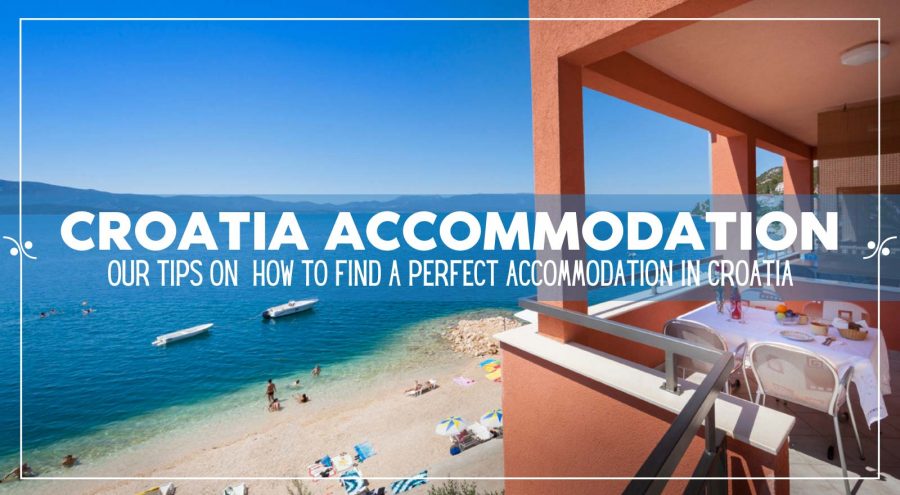
We often get asked about the best type of accommodation in Croatia. For this reason, we’ve written a full post on different types of accommodation in Croatia , with their pros and cons.
Croatia offers a variety of accommodations to choose from: hotels, hostels, apartments, villa rentals, and campsites. Which is right for you depends heavily on your travel style and budget.
Croatia is mostly seen as a 4-star family destination . However, some destinations are fancier than others. This is particularly true for Dubrovnik, Hvar Town, and partially Rovinj.
We’ve written extensive guides on accommodation in the following destinations in Croatia:
- Where to stay in Split
- Where to stay in Dubrovnik
- Accommodation in Zagreb
- Where to stay in Rovinj
- The Best Hotels in Rovinj
- Where to stay in Porec
- Plitvice Lakes Accommodation
- Where to stay in Pula
- The 12 Best Makarska Hotels
Hotels in Croatia
A good choice of 5-star hotels you’ll find in Zagreb, Dubrovnik, Rovinj, and Losinj Island. Although some hotels offer an all-inclusive formula, all-inclusive resorts aren’t popular in Croatia. All-inclusive Croatia mostly refers to a full board meal plan with unlimited selected drinks at mealtimes. Many hotels in Croatia offer a half-board meal plan , and dinner often comes cheap when purchased as a part of a room rate.
Booking.com is by far the most popular website for browsing and booking hotels in Croatia. They offer the most flexible booking policy and offer the most choice of properties. You can also check the hotel’s official website. Sometimes hotels offer special deals available only through their website.
Apartments in Croatia
Many Croatians rent apartments to tourists. Apartments are a good alternative to hotels. They are cheaper, offer more space, and come with a fully-equipped kitchen.
Apartment rentals, just like hotels, need to be licensed and get an official star rating. The most popular websites for apartment rentals in Croatia are Booking.com and Airbnb.
Villas in Croatia
Another popular and emerging type of accommodation is villa rentals . Mostly located off the big tourist resorts, these villas offer peace and quiet, and lots of privacy. Besides, villas come with a pool where you can chill all day long.
Croatia is also a very popular camping destination . There are lots of campsites all along the coast, and just a few of them are in continental Croatia.
Popular campsites in Croatia include Lanterna in Porec , Valkanela in Vrsar, Polari in Rovinj, Park Umag, and Zaton near Zadar. The best place to make yourself familiar with Croatian campsites is the Camping.hr website, an official website of the Croatian Camping Association.
Many of our readers reach out to us with a question about driving in Croatia, road condition, and safety on Croatian roads. Croatian roads are in very good condition. A fairly new multi-lane motorway connects Zagreb to the north and Rijeka to the northwest with Ploce in the south.
Tolls apply on all multi-lane motorways named with the letter A, as well as on some tunnels (eg. Ucka tunnel between Rijeka & Istria), etc. A one-way fee from Zagreb to Split (approx. 400 km) costs 24 € (25 $)*.
Besides motorways, you can also travel on toll-free state roads. These roads are also in good condition, but a single carriageway road, with a single lane for each direction, and some of them, particularly a coastal road D1, are winding.
*prices checked in January 2023
Renting a car
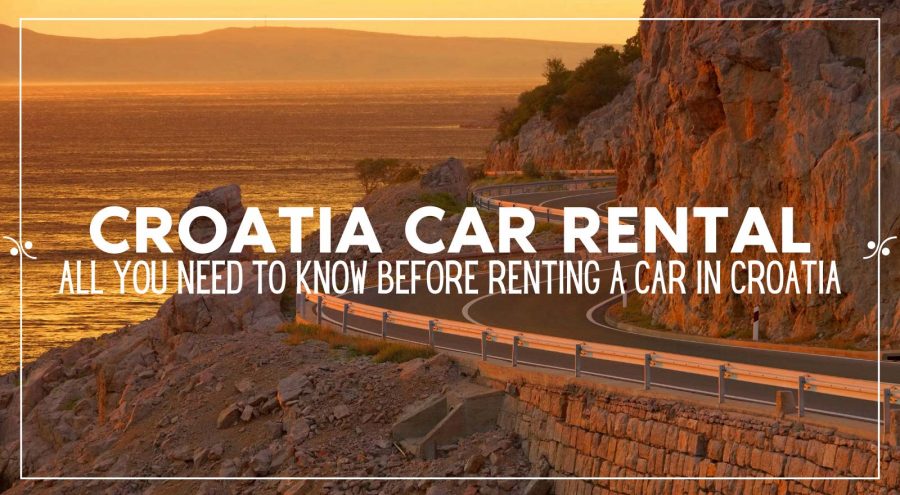
The best way to explore Croatia is by car. And if you don’t travel in your own car, don’t shy away from renting a car in Croatia. You’ll be able to take in the sights; travel off the beaten path; see more in less time, and have the freedom to stop wherever and whenever you feel.
Car rental in Croatia is very seasonal . This simply means that you’ll need to secure your car rental well in advance if you plan on visiting Croatia in July and August. This also means that rental prices increase dramatically in these two summer months. We recommend using Rentalcars.com for your car rental in Croatia.
Tourist registration
All tourists staying in Croatia need to be registered at a local tourist office. And non-EU citizens will also be automatically registered with the police.
This is the reason why during the check-in process at any hotel, private accommodation, or campsite, you’ll be requested to show (and often leave until the next morning) your passport or an ID card.

We love food in Croatia. It’s varied, fresh, local, and tasty. In continental Croatia, people eat lots of meat, while a diet in coastal regions is heavily based on fish, other seafood, and green veggies.
As a traveler, you might also make some false assumptions based on food offered in touristy restaurants along the coast. These restaurants often offer what tourists ask for, and not necessarily typical Croatian dishes.
One of the most popular posts on our blog is our post on must-try Croatian dishes . Make sure to read it so you don’t miss some of the local specialties.
We also give a couple of tips on where to find local, delicious, and cheap eats in Croatia .
And don’t miss our ultimate list of the best places to eat in Croatia . Istrian restaurants rank the highest on this list.
Tap water is safe to drink in Croatia. However, if you still prefer to drink bottled water, bear in mind that bottled water is extremely expensive here. For instance, a 1.5 L bottle of natural water costs around 0.9 € in a supermarket, three times more expensive than in Italy. You can find cheaper bottled water in Lidl, and Eurospin supermarkets.
The legal drinking age in Croatia is 18. Among alcoholic drinks, wines, beer, and spirits are very popular in Croatia.
Drinking usually takes place at cafe bars, serving any kind of drinks, from coffee, and tea, to wine, beer, and any alcoholic drinks. Cafes work all day, opening as early as 6 am, and closing usually around midnight. Nightclubs, pubs, and some bars work until 4 am.
Local wines are good. In the last two decades, many small, family-run wineries have set high standards in the production of quality wines made of indigenous grape varieties, like Malvazija, a dry white wine produced in Istria , or Plavac Mali, a red variety dominating vineyards of the southern Dalmatia .
Croatians also drink lots of beer , but you’ll hardly find an exciting choice of beers here in Croatia (not the case any longer, the craft beer scene in Croatia is now super exciting! ). The most popular mass-produced local beers are Karlovacko and Ozujsko, both light-lager types. In recent years many microbreweries started putting on the market a more appealing craft beer, like San Servolo , LAB, or Zmajska Pivovara .
Spirits are very popular in Croatia, and they come in a variety of flavors. Here they are called rakija . The basic one is most often produced from grapes (called Loza), but then they are flavored with different ingredients. The most popular are travarica (herb brandy), medica (honey brandy), orahovaca (walnut brandy), visnja (cherry brandy), mirta (myrtle brandy), and rogac (carob brandy).
Travel Insurance
Travel insurance covers all kinds of situations if things go wrong: from luggage loss, to trip cancellation, to medical assistance.
If you are an EU citizen then your European Medical Insurance Card covers your basic medical needs and emergency medical care. However, it doesn’t cover emergency transport to your home country.
Non-EU citizens are advised to check with their embassies for what level of medical care they are covered in Croatia, as it heavily depends on the bilateral and reciprocal agreement between the countries.
For other damages like document and baggage loss, loss of belongings, and trip cancellation, you’ll definitely need to purchase travel insurance. There are many travel insurance companies offering different insurance options and packages. You can compare all your options using a website like Travel Insurance Review .
We recommend buying travel insurance from Safety Wing . Available to people from the majority of countries (only sanctioned countries are exempt) it’s designed for all kinds of travelers. And it covers overseas medical, evacuation, baggage, and a range of travel misadventures and delays. And, one child up to 10 years of age is included in an adult’s policy free of charge. You can buy it and claim it online , even after you’ve left home.
Tours and activities
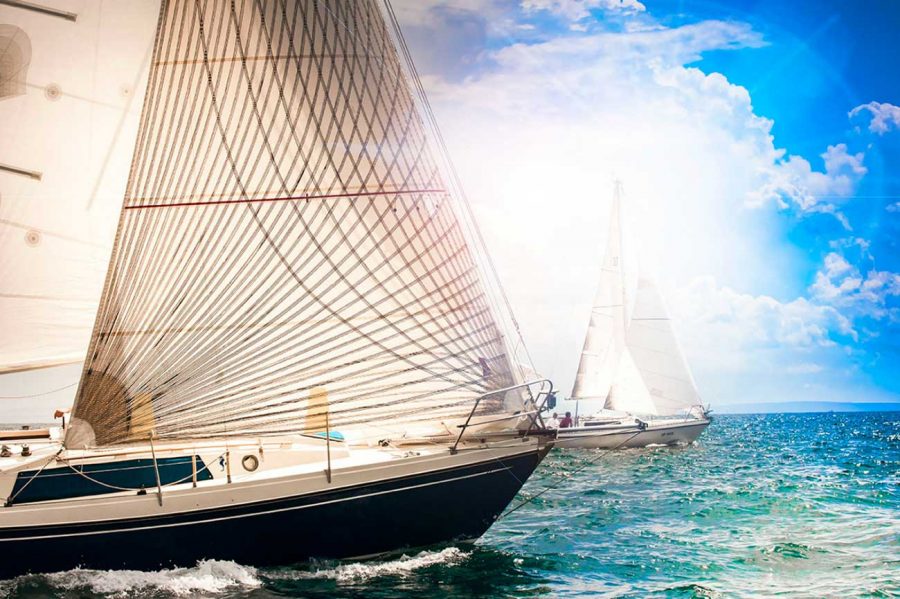
Croatia offers a lot of activities to do for all ages and all year round. The country is rich in history, natural beauty, ancient towns, wonderful architecture, pristine beaches, and rugged mountains.
Foodies will enjoy exploring restaurants in Croatia, especially in Istria, Zagreb, Dubrovnik , and Split . Croatia produces some of the world’s best extra virgin olive oils (if you wonder why you should care, read Tom Mueller’s book Extra Virginity: the sublime and scandalous world of olive oil ). There are lots of places where you can go for an olive oil tasting , and learn how to distinguish the real stuff from the crap. A visit to a winery is a must in Croatia, particularly in Istria.
Tisno on the island of Murter, Novalja on the island of Pag, and the town of Hvar offer 24 h partying for the young and restless.
Outdoor enthusiasts will love Omis, Paklenica, and Cicarija. They all offer an endless choice of adventures to enjoy.
We’ve written a full post on things to do in Croatia . You can also check the Get Your Guide website for a full list of tours and activities in Croatia.
Itineraries
We are often asked to suggest or revise a proposed itinerary for Croatia. So here are a few things to bear in mind when planning your Croatian itinerary.
Although the country is relatively small, it’s long (from Umag in the northwest to Dubrovnik in the south there is over 700 km), and it’s not that quick to travel from north or west to the south.
If you plan to visit Croatia for less than a week , we highly recommend you pick up one destination and stick to it. Do day trips from there , but don’t pretend to visit the entire country in less than a week. Also, in July and August, you need to take into account possible traffic jams, and congestion on the roads, as well as queues for ferries.
If you stay a week or ten days , you can include a few highlights in your itinerary, like Zagreb, Plitvice, Split, and Dubrovnik.
Suggested week itineraries
a | Zagreb – Plitvice Lakes – Split – Hvar – Dubrovnik
b | Dubrovnik – Peljesac Peninsula – Korcula – Split – Zagreb
c | Zagreb – Plitvice Lakes – Istria
Suggested two-week itineraries
a | Zagreb – Opatija – Istria – Plitvice Lakes – Zadar – Krka Waterfalls – Split – Brac Island – Korcula – Peljesac – Dubrovnik
If you prefer to join a group tour, we highly recommend checking tours proposed via Tour Radar. They have a classical coach and boat tours, but they also have a great choice of adventure, cycling, and various themed tours.
Here are a few suggested group tours found on Tour Radar:
Croatia & Adriatic Cruise
This 11-day tour gives you the best of continental Croatia and the Adriatic. The tour starts in Zagreb, and ends in Split, with a visit to 10 other destinations in between. We like that this tour takes you to the Peljesac Peninsula, one of our favorite regions in Croatia. You also get to see Korcula, Hvar, Elafiti Islands and Mljet islands. The small cruise ship can fit 30 passengers in air-conditioned cabins.
Check availability and prices!
Best of Croatia and Slovenia
This 11-day discovery coach tour starts in Zagreb and ends in Dubrovnik. However, it’s packed full of exciting destinations in Croatia, and neighboring Slovenia including Ljubljana, Bled, Rovinj, Opatija, Plitvice, Trogir, Split, and Peljesac peninsula. You will get to see many great destinations in a short period of time, while still having ample time on your own. The tour also includes one special “Be my guest” dinner where you get a chance to experience a traditional meal with a local family.
Croatia Island Hopper from Split
This 8-day island hopping tour operated by G Adventures is one of the most popular tours in Croatia on Tour Radar. The boat tour starts and ends in Dubrovnik with stops in Hvar, Mljet, Korcula, Brac, and Solta.
Cycling the Dalmatian Coast
A small group tour takes you from Split to Dubrovnik in 8 days on your bicycle. The tour provides accommodation, meals, and transportation. You’ll get a chance to test your cycling abilities in Hvar and Korcula Island, along the Peljesac peninsula and Dubrovnik. The tour is intended for all levels of cyclists. The scenery along the route is lovely.

When you think of shopping, Croatia doesn’t necessarily come to mind. However, there are a couple of awesome things to buy in Croatia.
Croatian artisan olive oils are some of the best in the world. Croatian design and concept stores are also making momentum; check the Take Me Home store in Zagreb or Prostoria in Rovinj for some original souvenirs, accessories, unique clothes, bags, and jewelry.
We’ve written a full post on the subject: Croatian souvenirs: fun, cool, and authentic . Don’t forget a high-end tie store – Kravata Croata .
Open markets , where you can buy fresh produce, are popular in Croatia. The largest national supermarket chain is Konzum. Other popular supermarkets in Croatia include Lidl, Kaufland, Plodine, and Spar.
Supermarkets are open throughout the day, Monday to Saturday. On Sunday some shops are open all day, particularly in shopping centers, while downtown shops often close at 1 pm or 3 pm. In summer, along the coast, shops are open seven days a week, and often as late as midnight.
Is Croatia a safe place?
Croatia is a very safe country with very little street crime and almost no violence. However, as everywhere, take care of your belongings, especially when using public transport.
Land mines are still present but in remote areas where tourists rarely visit anyway.
Croatia travel guide: Internet
The Internet in Croatia is widely available. WiFi coverage is pretty good, with many towns offering free wifi hot spots at prominent places in a town. Most of the private accommodations, as well as hotels, and even campsites, offer a free WiFi internet connection.
However, the broadband internet in Croatia isn’t as fast as you are perhaps used to. At least it’s not as fast everywhere in Croatia. In bigger towns, the internet is fast, easily available, and reliable. According to Speedtest.net , Croatia has the 22nd fastest download speed for mobile internet in the whole world. But, the fixed broadband is pretty slow (Croatia takes 89th place on the global scale).
The average internet download speed in Croatia in March 2023 was 71,16 Mbps for mobile, and 45,61 Mbps for fixed broadband.
Roaming charges
Since the summer of 2017, roaming surcharges within EU countries don’t exist longer. This means that, if you are with any EU mobile provider, you will pay the same prices for data, calls, and SMS as you would pay back home.
How free is free? You need to check with your provider what’s the amount of roaming data within the EU. For example, we have a flat rate for internet data in our mobile phone rate package. But, when we spent two months in Spain in the winter of 2022, we realized that we have only 10 GB of data free of charge in other EU countries.
So while the roaming data is free in the EU, the free data isn’t unlimited. Anyways, 10 GB is pretty enough, unless you are binge-watching Netflix shows for hours at times. I hope you don’t do that on vacation!
However, roaming charges for other countries are still pretty high. You can purchase some of the mobile operators’ packages either in your home country or in Croatia.
In Croatia, Telemach sells 10-days unlimited surfing for less than 11 € while T-com sells 7-days unlimited surfing for 11€ . It includes nano, micro, or SMS card. You can buy these packages at gas stations, newsstands, T-com or Telemach centers, and Croatian post offices.
The Airalo eSim packages are a good alternative to local SIM providers. We always use Airalo when traveling abroad.
Is Croatia part of the EU & Schengen visa regiment
As of January 1, 2023, Croatia is a member of Schengen, and thus it is a part of the Schengen visa regiment. This means that there aren’t border or customs controls between Croatia and other Schengen member countries for people crossing the borders by road, rail, or water. However, border and customs controls at the airports will stay in place until March 2023.
If you have a valid Schengen visa, you don’t need a separate visa to visit Croatia and vice versa. This also means that visiting Croatia and the days spent here will count toward 90 days maximum stay within 180 days for your Schengen visa.
When crossing into and out of the non-EU, and non-Schengen countries, you’ll still need to show your documents at the border, and vice versa. These include Bosnia and Herzegovina, Serbia, and Montenegro.
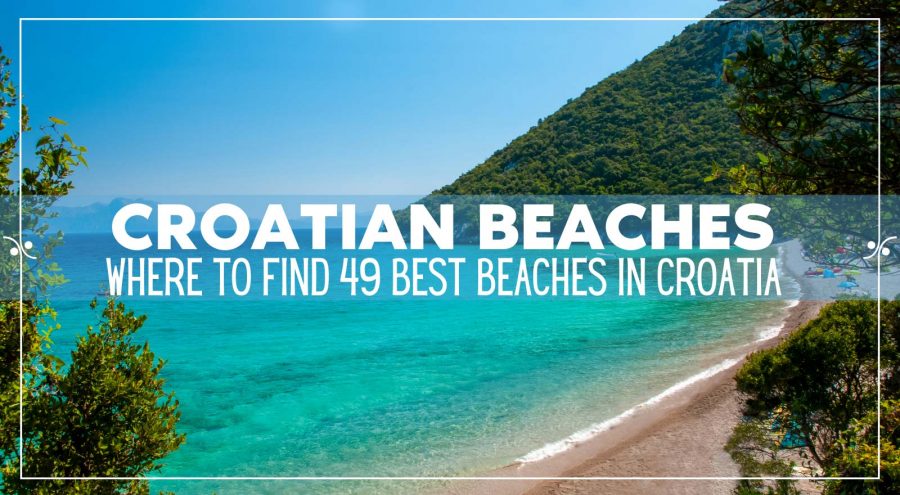
The sea and sun are still two main reasons for so many people to visit Croatia. Croatia has over 6.000 km of coastline and over 1.000 islands. The two most popular coastal regions are Istria to the north and Dalmatia to the south.
The Croatian coast is mostly rocky with pebble beaches mostly formed in coves and bays. Makarska Riviera, located in central Dalmatia, offers the most beautiful beaches in all of Croatia . Perfectly round and small pebbles that feel almost like sand but that don’t stick on you forever.
The sea is limpid and clear, you can often see the seabed from far away. My in-laws have a seafront property in Komarna , in southern Dalmatia, and I can see the fish swim in the sea from the third floor of their house.
So, if you search for that perfect sandy beach, you might get disappointed with the beaches in Croatia. Although there are some sandy beaches here too, they are simply not a Croatian thing.
In Istria, the coast is a bit rougher than in Dalmatia, and pebbles are rare to find. However, the beaches here feel less crowded, due to the well-preserved coastline.
Parking in Croatia
If you travel to and around Croatia by car, you might wonder about the parking situation in Croatia. Generally speaking the majority of hotels and private accommodations offer a parking spot free of charge.
However, bear in mind that city centers are usually car-free zones or have limited car traffic. If your accommodation is within the city center enquire about parking before booking.
There are three types of parking: garage parking, open-air parking lots, and street parking. Expect to pay around 1.1 € to 1.6 € per hour in town centers. However, some parking is more expensive, like parking at Riva in Split which cost 4 € an hour; then, in Dubrovnik, where you will pay for an hour of parking in Zone 0 as much as 10 €.
We talk more in-depth about parking in our destination guides . Don’t forget to check them once you decide on your destination .
Do people speak English in Croatia?
You don’t speak Croatian? No worries, most Croatians speak at least some English, and many speak at least another foreign language. Besides English, German and Italian are the most widely spoken languages in Croatia.
Is Croatia expensive to travel to?
Croatia isn’t a cheap place to visit. It’s more expensive than the neighboring countries, like Bosnia & Herzegovina, Serbia, or Hungary.
Generally speaking, continental Croatia and Zagreb, in particular, keep prices moderate to, I would dare to say, even cheap. However, the coast is mostly expensive, and the prices tend to increase year after year.
That said, if you travel on a tight budget, you can still keep it under control. Stay away from top destinations (visit them but sleep somewhere else), come in the off-season, explore places off-the-beaten-path, forget hotels, choose instead an apartment with a fully-equipped kitchen and prepare your own meals, ask locals for good value restaurants, etc.
Check our budget tips for traveling in Croatia , and also a post on the total Croatia trip cost .
Tipping in Croatia
People often ask us what’s tipping etiquette in Croatia. In short, tipping isn’t necessary but it is widely appreciated and accepted.
The majority of Croatians, in bars and restaurants, simply round up the bill. We on the other hand, out of habit, always leave around 10%, and only if we are satisfied with the service.
If you are taking a group bus tour, someone will usually collect the tips for the driver and the guide at the end of the tour. Here, usually, people chip in on what they feel is appropriate.
What time zone Croatia is in?
Croatia belongs to the Central European Time Zone, meaning it is one hour ahead of GMT (Greenwich Mean Time), and two hours ahead of GMT when daylight saving time is observed.
Daylight saving time makes us move our watches one hour ahead. It takes place from the last Sunday in March until the last Sunday in October.
Find here the time differences between some major towns when compared to Croatia:
- Barcelona: 0
- London: – 1 hour
- Montreal: – 6 hours
- New York City: -6 hours
- L.A.: -9 hours
- Chicago: -7 hours
- Tokyo: +7 hours
- Sydney: +8 hours
If you are traveling from overseas, you will certainly experience jet lag when visiting Croatia. You can check this no-jet lag homeopathic remedy to ease your symptoms.
How much is VAT in Croatia and is it refundable?
At the moment, VAT in Croatia is 25% for the majority of products. If you are a foreigner without permanent or temporary residence in Croatia, you can ask for a tax refund for all purchases above 100 €.
Ask the salesperson for the tax-free form at the moment of purchase. Fill it up, get it stamped right there, and then again at the airport, or at the border by a customs officer. You have six months from the purchase date to claim your VAT return by mailing it back to the shop where you originally bought the item.
Another way to achieve a VAT tax refund is to look for shops that are part of the Global Blue Tax-Free service . They all have a sign displayed in the window along with the working hours, and credit cards that they accept. The procedure is similar (fill up the tax-free form and get it stamped at the shop, and at the airport), but the refund is quicker and can be obtained already at the airport, in Global Blue’s office.
Croatia plugs, adapters, and converters
Croatia uses 220V, 50 Hz frequency, and standard European type C & F plugs. Both are similar plugs with two round prongs with 19 mm between the two.
If the plugs of your devices are different, you will certainly need an adapter in order to charge them. You can find one here.
While adapters will help you use your plugs in Croatia, converters will help transform voltages from higher to smaller or vice versa. If you need a converter you can easily buy one on Amazon .
Recommended travel guides
- Fodor’s Croatia Travel Guide (we are co-authors!).
- Lonely Planet Croatia Travel Guide
- Rick Steves Croatia & Slovenia
Further reading from our Croatia travel guide
- Croatia Travel Guide: Things To Do In Croatia
- Ultimate Guide To Accommodation In Croatia
- Packing List For Vacation In Croatia
- How To Choose Your Destination In Croatia
- Where to go in Croatia: best places to visit in Croatia
- Car Rental In Croatia
- Driving In Croatia
- Cost of Travel To Croatia
- Croatia On Budget: Money-saving Tips
- Outdoor Activities in Croatia
- 49 Awesome Beaches In Croatia
- Snorkeling In Croatia
- White Water Rafting In Croatia
- 20 Must-Try Foods In Croatia
We hope you’ve found our Croatia Travel Guide useful. Is there anything else you’d like to know? Let us know in the comments below.
Frankaboutcroatia.com is a participant in the Amazon Services LLC Associates Program, an affiliate advertising program designed to provide a means for sites to earn advertising fees by advertising and linking to Amazon.com and affiliated sites. This post might also contain affiliate links to other sites, like accommodation or activities. And if you purchase anything using these links, we earn a little commission with no extra costs for you. Thank you for supporting our blog! Read full disclaimer here.
Home / Croatia Travel Tips / Croatia Travel Guide: Things To Know Before Traveling To Croatia
48 thoughts on “Croatia Travel Guide: Things To Know Before Traveling To Croatia”
Love your blog. A lot of useful info.
We’re thinking of coming in mid-October to November 4. Will tourist sites still be open in that first week of November?
Thanks for your input.
I am Croatian and I must say, epic post!
Hi we plan to travel to Croatia in July 2020. I am trying to convince my husband to rent a car but he is worried about driving in a foreign country. Can you give any opinion on this topic? I am more worried about the inconsistency of travelling by train and having to wait and plan with the transportation schedules, as well as carrying luggage everywhere.
Hi Marcia, this is the exact reason why we suggest that you take your charges in Kuna. Because your credit card doesn’t charge you a transaction fee. If you take it in your home country, then Croatian bank will charge the transaction fee, or rather they will use the less favorable exchange rate, so they make money. Just keep it in the local currency, even more so if your credit card doesn’t charge these fees. Hope this helps.
You stated that it is probably best to request credit charges be made in kuna, rather than US currency. If my credit card does not charge a foreign transaction fee, would that still be true?
Firstly, congratulations on your brilliant web site, so helpful to first time visitors to Croatia. We are staying on Korcula at the end of September, would you recommend booking the ferry, and if so which is the best web site to use?
It all depends. Zagreb is ok for a day or two, Split for two or three, the same goes for Dubrovnik, or Rovinj.
Thanks for all the info. We are coming from Canada for a 10 day stay beginning of July. We fly in & out of Zagreb but want to see Split & go up north for a bit too to see some family birthplaces. How much time do you recommend for each city stay & absolute must sees while we are there?
Epic post Frank! I’ve spent the last couple of summers sailing around Croatia and think it’s incredible. Favorite island is most probably Kos. Have some great memories of playing cricket with some of the locals. Cant wait to get back!
What is the best option to travel from Zagreb to Venice
This was amazing and super helpful! For first timers going to Croatia (about a week) where do you recommend going? Was planning for a July trip, but your post sort of scared me to be mentally prepared ha!
Do you ever work with readers to come up with an itinerary?
This was super helpful! Thanks!
Great info…thank you very much. My Bride and I will be in Croatia from Sep 11 to Sep 20. We will arriving in Dubrovnik and leaving from Zagreb. We are planing to stay 3 days in Dubrovnik, 3 in Split and 2 in Zagreb. Would you recommend any changes to this and what places around those three cities are a must? We will have a car. We love waterfronts, small (Mom & Pop) licensed restaurants, some beach time and sightseeing. Any suggestions would be appreciated. Mário & Fatima Sousa…….Mississauga, Canada
Hi Frank! Thank you for all of the info. I am a bit overwhelmed. My husband, 2 adult daughters and I are planning our trip to Croatia in late May/early June 2019 for a week to 10 days. We love adventures! What itinerary would you suggest?
Great info, thank you. We are planning our trip for Sept/Oct 2019, touring around Croatia and neighboring countries for 2 weeks. Planning on staying just outside of Zagreb, Split and Dubrovnik. We are travelling from Canada, renting a car and booking Apartments and BnB’s. Wondering if there would be any significant differences between September and October for weather, costs, tourism, crowds, etc. Thanks in advance.
Your blog is really helpful.
We are from India and we are planning to visit croatia in the last week of february, 2019. And we are majorly looking to cover North (Alps, Gorski Kotar) and South (the beaches and other popular places).
Since we are not fully aware of the weather conditions in Feb, I wanted to ask whether it is decent enough to travel in feb? without any complications brought in by weather?
I am planning a week-long trip to Croatia in September with 8 young adult family members. Is it best to go from city to city staying in a hotel, rent a villa one place and do day trips or rent a boat and go down the coast? Amy
In Septemeber everything should still be open. No worries.
I always go with 10% when in restaurants. As for the rest, you give what you feel. Normally, you collect from the entire group and you give it at the end of trip if you were happy with the service. I am not aware that there is a tipping rule for drivers and guides as for how much should you tip. You basically tip what you feel they deserve.
There is plenty things for kids to do. If I knew where exactly you go, I could have provided more info
Porec, Rovinj, Bol, Brela
thanks for sharing, Lynn! Great clip, it shows well what to expect. However, most of the video is made in the northern part of the road, between Rijeka and Zadar.
Thanks for reading, May! Hope you had a great time in Croatia.
Haven’t been there, Kass. Sorry!
great! let us know if we can help with anything
Have fun, and drop us a line if you have a question
You can stay in Zagreb for a day, Plitvice either for a day or in transit from Zagreb to Split, Hvar for 2-3 days if you want to visit the entire island; otherwise book an island tour from Split. So if you only want to stay in two or three of these towns, make it Zagreb, SPlit and Dubrovnik, because they are best located to do day trips elsewhere.
Thanks for all the great advice. For a two week holiday, can you suggest which towns to stay in? I’d love to visit Zagreb, Plitvice, KrKra, Split, Hvar and Dubrovnik. I’d like to stay in two or three places and do the rest from there.
Great blog. Thanks for the info. We – fellow Canadians – plan to spend Jan to Mar 2019 in Croatia, basically in the Trogir area. We’d appreciate any further thoughts you’d wish to pass on.
I would like to know about tipping in Croatia for bus drivers and tour guides. Our travel club is bring a group to Croatia in May 2019.
Hi..We are planning to visit next year..Have children who will be agedelivered 11 and 13..are there things for them to do?
Hi there. Thanks for all the information. So useful! Question re timing. I would head over in the September holidays to beat the crowds but want to check most of the bars etc are still open all year round. Sometimes in countries like Japan where we lived for 8 years they are very strict on seasons and so going outside (even slightly) means u go to a great beach bar only to find it closed. Thanks
Thank you for your blog and the very valuable information you provide. My family (a total of 16 of us) are visiting Croatia at the end of this month. 3 of us are from BC Canada so it has been even more exciting to hear what you have to share.
Hello Just found your blog and its just what i,m after, so much information. I am visiting Croatia next month with my son, we are staying near Trogir. I was going to take kuna but you say most places take Euros? I have rented a car and plan to travel around a bit. Thanks Karl
I am watching the World Cup finaland cheering for the team! I decided to visit the beautiful country in 2019 with my family. Look forward to it!
We’re going in September to visit Lokve, where my husband’s people are from. Have you been there? Can you tell us anything about it? Thanks!
We are currently in Croatia and it is just beautiful. The water shades from turquoise to deep blue and the rocky hills provide a beautiful contrast in the landscape.
We stayed rather in the south and we took the E65 coastal road. If you have time to spare and you are not in a hurry, I recommend this road compared to the highway. I wish I could describe it but I will never be able to narrate the full picture, so I made a short clip on our journey that I wish to share.
It is on YouTube — https://www.youtube.com/watch?v=AKEiQI4NOos&t=60s
Hello, very nice blog of yours! I was wondering what area you would suggest a family of four to stay in. A place that is child friendly and filled with entertainment is something I had in mind, but would like to know what places wold exactly fit my needs. Thank you!
Hi there, me and my husband have been trawling the internet looking for ideas of where to visit with our two children (2 & 9 years) and we’ve stumbled upon your AMAZING site. It’s literally a godsend!! Please could i pick your brains and ask where you would best recommend? We love the beach, history and lovely food!! Any advice would be so gratefully recived!
Hi, loving the information on your website. We are coming to Croatia for 2 weeks from the 6th of September, and are wondering if you think we need to pre-book accommodation or should we be able to book a few days in advance? Cheers, Karen
Hi Frank, just found your website and love it. My husband and I will be vacationing from US to Croatia from Sept. 5 to 19. First time. Don’t plan on seeing the entire country on this visit but would like a few highlights. We will land in Split and leave from Dubrovnik. Are there any and can you recommend a private tour guide company?
Hi – so glad I stumbled upon your wonderful post ! We are thinking of travelling to valamar island in July . I am concerned it will be very busy and hugely commercial ? X
Hi Colleen, if you would like to receive our newsletter, please sign up for it through the website. Let us know if we can help with anything regarding your upcoming trip to Croatia.
Frank, Please add me to your list. I plan to visit this wonderful country in 2019. Colleen
Hi. Will be in Croatia July 17-31. We’d love to book a 3-5 day sailing or yacht trip around the islands. Possibly start and end in Split. Do you have any recommendations?
I have been to Croatia with my mum last year and this charming country won our hearts, Frank! I still haven’t crossed Dubrovnik off my bucket list, but your post was truly inspiring. I guess now I have plenty of more reasons to explore magnificent Croatia!
Really enjoy your detailed travel guide! My gf and I (early/mid 20’s) are traveling to Dubrovnik, Croatia next week and we plan to rent a car for about 10-11 days. Our plan is do explore the coast of Croatia, spend some time in several cities and eventually make our way to Slovenia where we’ll return the car.
Do you have any advice with regard to having the “luggage” of the car, and doing trips to islands and etc.? We want the car to have the flexibility, but we may not use it EVERY day. We also don’t want to try and pack too much into the week and a half we are in Croatia. There is the potential we stay longer, but we thought it may be neat to make our way up to Slovenia, spend a few days there then make our way to Austria for a week.
Any thoughts would be greatly appreciated.
Hi guys, we love your blog and passion for Croatia. We are a family run business, that runs 3 adventure bases in Croatia. We only employ local staff and follow green responsible policies. We would love to talk about working with you. Whats your best mobile number?
Leave a Comment
- Search Please fill out this field.
- Manage Your Subscription
- Give a Gift Subscription
- Sweepstakes
9 Best Places to Visit in Croatia, According to Locals
Here's how to see the best of Croatia, from under-the-radar islands to stunning forests and hilltop towns.
:max_bytes(150000):strip_icc():format(webp)/Anja-Mutic-2000-836cea090ffd435e94db675a723cf353.jpg)
The coast of Croatia gets all the love — and though I was born and raised in the country, even I set my gaze on the Adriatic Sea whenever I visit. You can't deny the beauty of hotspots like Dubrovnik and Split, but busy locales like these can also mean crowds, stressed-out service, and little sense of discovery, especially during the peak summer season.
Thankfully, Croatia has more than 1,200 islands you can escape to, as well as coastal towns that remain off the radar, plus a majestic interior that spans idyllic pastoral landscapes and mighty mountains where wildlife roams in nature. There's a lot to see and do — and love — beyond the go-to tourist destinations as well. Here's my list of some of the best places to visit in Croatia.
Jadranko Markoc / Getty Images
For the longest time, Croatia's capital was mostly skipped in favor of more popular destinations down south. That started changing a few years ago, when visitors got wind of the numerous delights this pocket-size metropolis has to offer, including its buzzing art scene and the colorful Christmas market that helped put this city on the wintertime map. Advent festivities, typically held throughout December and into early January, feature alfresco merriment, live music, and street food all around Zagreb's city center, including its ancient Upper Town.
For the plushest place to stay, pick the grand Esplanade Zagreb Hotel , which blends Art Deco flair with the latest modern-day comforts, and serves iconic and traditional štrukli (cottage cheese dumplings) at its restaurant, Le Bistro .
Gorski Kotar
GoranStimac / Getty Images
While the country's coast may be one of the best places to visit in Croatia for local residents and visitors alike, general interest in the great outdoors has spiked in recent years. Enter Gorski Kotar, Croatia's answer to Switzerland, a forested expanse of mountain wilderness that lies southwest of Zagreb, en route to the coast of Kvarner.
This verdant region has become the "it" destination lately, especially for city dwellers looking for an easy-to-reach pocket of pristine nature. Wolves, bears, and the endangered Eurasian lynx can be spotted roaming through Risnjak National Park . Gorski Kotar also offers a number of chic cabins and lodges to rent, such as the spectacular Casa Nube and the adorable Gorska Bajka . Don't miss the chance to indulge in a meal of wild edibles and game meats at the Vagabundina Koliba (Vagabond's Cabin) mountain hut, where the nettle bread is a real treat.
Wilfried Krecichwost / Getty Images
A string of sweet little seaside towns may line Istria, the heart-shaped peninsula in Croatia's northern Adriatic, but Rovinj steals the show for its storybook beauty. The area is so stunning it tends to get regularly jam-packed with visitors between June and September, so the locals will generally try to avoid it that time of year.
It's best to head to Rovinj outside of that busy season, ideally in October or from April to May. Book a stay at the ultra-sleek Grand Park Hotel Rovinj , one of Croatia's most luxurious properties. An architectural stunner with a cascading structure that slopes down to the sea in a twine of fragrant garden terraces, the hotel showcases impressive views of Rovinj's Old Town , with its cobbled piazzas and steep lanes leading up to St. Euphemia Church , a baroque beauty with a copper statue-topped campanile.
At the hotel's fabulous Albaro Wellness & Spa , try the Batana Bodywork treatment, which involves using a stimulating combination of hemp balm, a traditional Rovinj boat's batana oar, and intense rowing motions to massage your sore spots. A meal at the property's Cap Aureo Signature Restaurant is a sensory adventure, as is a walk around the protected forest park of Punta Corrente (Golden Cape), located nearby. And don't leave without checking out the hotel's secret art room.
Inland Istria
xbrchx / Getty Images
While first-time visitors to Istria , easily one of the best places to visit in Croatia, make a beeline for the coast, those in the know swear by the peninsula's green interior. And as soon as you hit those curvy country roads — winding their way through the woods, vineyards and olive groves — you'll see why. It's easy to swoon over the area's bucolic charm, home to medieval towns strewn across the hilltops, and shady forests where prized truffles hide.
Luxury villa rentals tucked away in the Istria countryside are increasingly becoming popular hideaways. Take Stanzia Vinella , a renovated and formerly abandoned hamlet turned rustic-chic retreat, with Wabi-Sabi–inspired interiors and an infinity pool that overlooks the postcard-perfect town of Motovun on the hill just across the way. For a meal of Istrian mainstays, book ahead at Toklarija , an age-old olive-mill-turned-tavern on the hilltop overlooking the village of Sovinjsko Polje.
ultraforma / Getty Images
Few visitors to Croatia pay heed to the coastal city of Šibenik in central Dalmatia; it usually tends to get overshadowed by Split, located just an hour to the south, and, of course, Dubrovnik. What visitors are missing is a true seaside gem, one of a handful of cities in the world with two UNESCO World Heritage Sites: St. James Cathedral , a domed basilica built entirely of stone between 1431 and 1535, and the Venetian-era St. Nicholas Fortress , situated on an islet across from the old town.
Šibenik is also home to a number of charming heritage hotels, including boutique Armerun , which opened in summer 2021 along the seafront just steps from the cathedral, and Pelegrini , a seasonal restaurant graced with a Michelin star, where owner and chef Rudi Štefan conjures up some of Croatia's most innovative cuisine. Don't miss a visit to St. Michael's Fortress and Barone Fortress , each known for their alfresco concerts and dazzling panoramas.
Close to Šibenik, the island of Zlarin is best known for its exquisite handmade red coral jewelry. It was also the first island in Croatia to eliminate single-use plastics back in 2019; in the summer of 2021, it was joined by the nearby island of Krapanj as part of a special "Archipelago Without Plastic" campaign.
Locals head here for its beautiful beaches, which may have pebbles in place of sand but offer clear, warm waters perfect for swimming, floating, and snorkeling. Other popular waterfront activities include sea kayaking and stand-up paddle boarding, while landlubbers can enjoy hiking, biking, and rock climbing. The island is car-free, giving you the perfect excuse to explore it by bike or on foot. Accommodations are few and far between, with just one hotel and a limited amount of apartments available for rent, so during more crowded times of the year (like summer), it might be worth staying nearby in Šibenik and visiting Zlarin as part of a day trip instead.
_jure / Getty Images
Located just off the coast of Zadar, the island of Silba is a car-free, hotel-free paradise that tends to be frequented by those in the know. You'll note a distinct Boho, offbeat vibe, where the creatives of Croatia prefer to hide away in summertime. It’s also a stellar choice for families, as little ones can run around barefoot and carefree.
Be sure to book your accommodations way ahead of time, as rooms can fill up quickly here. And don't miss the chance to enjoy a sunset dinner of freshly caught seafood at Konoba Alavija . Spend your days sunbathing or playing volleyball, basketball, or tennis at the island's busiest beach, Sotorišce, known for its clear, shallow waters. Under the water, the archaeological ruins of an ancient sarcophagus , estimated to be more than 1,500 years old, can be seen just off the shore of Pocukmarak Bay.
Anton Petrus / Getty Images
Hvar island may already be on everyone's list of the best places to visit in Croatia, but that spotlight mostly shines on Hvar town, which is known for its funky beach party scene. More artsy and low-key, Stari Grad, located along the island's northern side, has been coming into its own lately as an alternative Hvar base — and for all the right reasons.
For starters, Stari Grad has two World Heritage sites: The Stari Grad Plain , with its striking farm landscape that has been cultivated since ancient Greek times, and an old town that dates back to 384 B.C.E. On top of that, Maslinica Bay, just steps from the ferry dock, is home to the chic Maslina Resort , featuring Asian-Mediterranean fusion flair and design and a spa with "garden to skin" treatments that showcase herbs from the resort's organic garden.
Westend61 / Getty Images
Taking a trip to Pag is comparable to taking a trip to the moon. The island is well known for its barren, lunar-like landscapes, as well as for the epic parties that take over the beaches of Zrće come summertime. But beyond the raucous revelry, the island is home to one of Croatia's loveliest family-run hotels, Boškinac , which sports an award-winning winery and a Michelin-starred restaurant within a beautifully renovated stone building surrounded by olive groves and vineyards, just inland from the coastal town of Novalja.
Pag is also known for its fragrant, hard, and strong sheep's milk cheeses. Gligora Dairy , which keeps racking up awards internationally, offers tastings of this local delicacy. While on Pag, check out the Pag Triangle — a mysterious land formation near Novalja that's rumored to be the site of a UFO landing — and the walkway through the ancient olive groves of Lun , where most of the trees are as many as 1,500 years old.
Croatia Travel Guide
The jewel of the Adriatic! Croatia boasts pristine beaches, age-old towns, and a blend of tradition, cuisine, and historic marvels.
Best time to visit Croatia
Best places to visit in croatia, plitvice lakes national park: croatia’s most incredible waterfalls, 9 best things to do in hvar, croatia, rastoke waterfalls: discover the waterfall village of croatia, 9 best things to do on brac island, croatia, map of croatia, weather in croatia.
Following a Mediterranean climate, Croatia’s weather is fantastic, particularly between May and October! Spring and Autumn are prime seasons to explore, offering mild sunny temperatures and fewer visitors.
Cities in Croatia
15 best things to do in split, croatia, 9 best things to do in trogir, croatia, 13 best things to do in dubrovnik, croatia, 10 best things to do in pula, croatia.
Islands in Croatia
Kamenjak national park (croatia’s natural gem), visiting the medieval truffle town of motovun, croatia, 10 best things to do in rovinj, croatia, national parks in croatia, krka national park, croatia: travel guide to the waterfalls, how to rent a car in croatia, best travel insurances.
- Find Hotels via Booking.com
- Find Hostels via Hostelworld
- Find a Rental Car via Sunny Cars
- Find Flights to Croatia via Skyscanner
- Get a Travel Insurance via Heymondo
- Book Tours & Attractions via GetYourGuide
- Book a Bus/Train/Transfer via 12Go
- Get a Visa via iVisa
- How to pack light for your trip
- How to plan your trip our tips
Why is Croatia worth visiting?
Croatia is an absolute gem! From dreamy islands to historic cities, it’s a paradise for adventure seekers. Dive into sapphire waters, savor delicious cuisine, and soak up the Mediterranean sun.
Is Croatia cheap to visit?
Croatia has become more expensive in recent years due to its popularity, particularly in towns like Dubrovnik and Split; however, staying in self-catering accommodation, eating local, and visiting outside of the peak months can help you stay on a budget.
Can I drink tap water in Croatia?
The tap water in Croatia is high-quality and readily available, with beautiful water fountains dotted around many of the cities, so make sure to bring your reusable water bottle.
Do I need a visa for traveling in Croatia?
Most travelers don’t need a visa for Croatia for stays of up to 90 days. Check your country’s entry requirements in advance and make sure to have a valid passport ready for your Croatian adventure.
What language do they speak in Croatia?
While Croatian is the official language, English is like a second language to many who depend on tourism for their livelihood. Enhance your experiences by learning a few Croatian phrases, and the locals will warmly welcome your efforts to communicate in their language.
Do I need travel insurance for Croatia?
Travel insurance ensures peace of mind during your adventure through Croatia, protecting you from unexpected events. Hike through national parks, cliff jump off the rugged coastline, and kayak around beautiful islands with zero worries!
Is Croatia safe?
The crime rate in Croatia is low, and it is generally a very safe country for tourists. Exercise precautions as normal, and you’ll have an incredible trip filled with friendly locals and beautiful landscapes.
What power plug type does Croatia have?
Croatia primarily uses type C and F plugs, the European-style two-pin plugs with a voltage of 230V. Make sure to bring a plug adapter to keep you charged on the go!
Why do people love Croatia?
Commonly known as the Jewel of the Adriatic, Croatia is one of the best holiday destinations in Europe! With an incredible blend of natural beauty, historic charm, and warm hospitality, unforgettable memories are created here.
Travel to Croatia
Croatia, the Jewel of the Adriatic, is a captivating European destination known for its stunning coastlines, picturesque islands, historic cities, and incredible national parks. As one of the greatest vacation destinations in Europe, Croatia offers a diverse range of experiences, from the ancient walled city of Dubrovnik to the lush Plitvice Lakes National Park . Whether you’re a history buff, nature lover, or beach enthusiast, there’s something for everyone, making for an unforgettable vacation in Croatia!
How to plan your trip to Croatia
Follow our Croatia travel guides to plan an unforgettable road trip in this Mediterranean paradise. There are so many amazing things to do in Croatia, including historic cities like Split , natural wonders like Krka National Park, and charming islands like Hvar.
Short on time? Tick off the highlights of Croatia with our ultimate 7-day travel guide , road-tripping through ancient fortresses, UNESCO valleys, turquoise shores, and waterfall villages .
Ready for an incredible holiday in Croatia? The weather varies by season, and choosing the best time to visit depends on where in the country you’re planning to see and the kind of vacation you’d like to have.
High Season (July – August): If you’re dreaming of sunny days and beachfront relaxation, consider visiting between June and August. These are the peak summer months, with warm temperatures, clear skies, and minimal rainfall. The coastlines are at their finest during this period, making it an ideal time for beach enthusiasts, and the party scene is at its best in Hvar , Brac , Dubrovnik, and Split for those looking for nightlife. This period brings crowds of tourists, so booking accommodations and tours in advance, particularly in well-traveled destinations like Dubrovnik, is definitely worth it.
Shoulder Seasons (May, June, September & October): If you prefer a more budget-friendly, less crowded experience, the shoulder seasons are generally the best times to visit Croatia. During these months, the climate in Croatia is pleasant, the tour operators and hotels are open, and the crowds are much more manageable in popular cities. May and June are also the best months to visit the National Parks when the lakes and waterfalls are flowing.
Croatia’s climate can also vary depending on the region. Central Croatia tends to be a little cooler than the coastal areas, so it is always worth packing layers if you plan to explore different parts of the country.
Whichever season you choose for your Croatia holiday, this beautiful country will not disappoint!
Coastlines and beaches in Croatia
Croatia’s coastline along the Adriatic Sea is a paradise. With a diverse range of beaches, from pebbly shores to secluded coves, there’s something to suit every traveler’s taste.
One of the best things to do in Croatia is to explore its stunning coastline, starting with the Dalmatian Coast. This stretch of coastline is famous for its crystal-clear waters and unique pebble beaches. Zlatni Rat, located on the island of Brač , is often referred to as the “Golden Horn” due to its distinctive shape and offers a picturesque spot for sunbathing and water sports.
For a blend of history and relaxation, Banje Beach in Dubrovnik is an amazing spot, only a 10-minute walk from the Old Town. With panoramic views of the city’s historic walls, it’s a unique spot to unwind and enjoy the Croatian sun. This spot is very popular, so come early to rent a daybed or find a spot on the nearby cliffs or visit Sveti Jakov Beach instead, a quieter spot in Dubrovnik closed off to boats, making it one of the best places to visit in Croatia.
If you’re looking for a more tranquil getaway, hop on a boat tour around Hvar Island, exploring the secluded beaches, natural caves, swimming in the crystal blue waters of Budikovac Lagoon, and taking in the picture-perfect scenery.
Whether you’re seeking a relaxing vacation or a crazy backpacking adventure, Croatia’s coastlines and beaches are out of this world!
Food, culture and religion in Croatia
Dive into the heart of this Mediterranean gem, and you’ll discover warm hospitality, distinct regional cuisines, and prominent architecture from its religious influence.
Food: Croatian cuisine is a delicious blend of influences from Central Europe, Italy, and the Mediterranean. As you travel Croatia, your taste buds will be treated to an array of flavors. On the coast, you’ll find food similar to Greek, Italian, and Mediterranean cuisines, with freshly caught seafood from the pristine waters and plenty of olive oil and fresh herbs. Further inland, food is known to be a little more hearty, with warming stews and decadent pastries.
Culture: Croatia has a rich and diverse cultural heritage, with red and white checkered items, known as šahovnica, the coat of arms, featuring everywhere throughout the country, highlighting how proud locals are to be Croatian.
Religion: Religion holds a significant place in the hearts of Croatians, with the majority of the population following the Catholic faith. This influence is evident in the beautiful churches and cathedrals that grace the country’s landscapes, from the Cathedral of the Assumption of the Virgin Mary in Dubrovnik, to St. Stephen’s Church in the small hilltop village of Motovun .
Why you should travel to Croatia
One of the best European vacation destinations, Croatia’s charm is endless, with sun-soaked beaches, captivating cities, pristine islands, and breathtaking natural parks. As you navigate its winding roads, you’ll encounter UNESCO-listed valleys, wander through Game of Thrones Croatia film sets, explore ancient fortress cities, visit breathtaking waterfalls, and relax on the beautiful shores.
The country’s diversity is the standout feature of the country. The Adriatic coastline, dotted with pebble and sandy beaches, offers a seaside paradise for sun-seekers. While the coastline may steal the limelight, picturesque cities like Dubrovnik and Split, with their well-preserved historical architecture, beckon history buffs and culture enthusiasts. Additionally, the numerous islands, such as Hvar and Korčula, provide an idyllic escape from the bustling mainland, offering a laid-back Mediterranean atmosphere. The national parks, including Krka and Plitvice Lakes, display cascading waterfalls, pristine lakes, and lush forests that provide a haven for nature lovers.
Croatia offers an enriching experience whether you’re a backpacking adventurer, a history enthusiast, or a sunseeker in search of the perfect vacation.
Safety and travel advice Croatia
Croatia is generally a safe travel destination, but it’s essential to stay informed about safety measures and travel tips when planning your trip to the country.
Natural Disasters: While Croatia is not prone to major natural disasters, occasional minor earthquakes and forest fires may occur. Additionally, heavy rainfall, particularly during the winter, can lead to localized flooding. To stay updated on potential emergencies during your trip, always follow the local weather and plan accordingly. Outside of the tourist areas, there may be unexploded mines from the past war, so always stick to marked paths.
Crime and Safety in Croatia: Overall, Croatia has a low crime rate. However, in crowded tourist areas, such as city centers and popular coastal destinations, petty crimes like pickpocketing can occur. It’s wise to leave valuables at your accommodation and stay vigilant in crowded places. There have also been several reports of crime in taxis, so if you’re traveling alone, it’s advisable to take a photo of the number of the taxi and send it to a friend or family member.
Traffic and Driving: In the busier towns and cities, Croatia can experience traffic congestion, particularly during the high season. If you plan to drive a rental car in Croatia, always pay attention to traffic signs and adhere to local driving rules. Also, be aware that it is illegal to drive with more than 0.05% of alcohol in your system.
Travel Insurance: It is highly recommended to purchase travel insurance for your vacation in Croatia, ensuring peace of mind in case of unexpected events, such as hiking accidents or lost luggage. Find the best travel insurance to best suit your needs.

19 Top-Rated Tourist Attractions in Croatia
Written by Meagan Drillinger Updated Jul 10, 2023
The world has few places that are quite like Croatia. For thousands of years, Croatia has sat at the crossroads of East and West. It has a history of ever-changing borders and rulers, and much of its history is shrouded in pain.
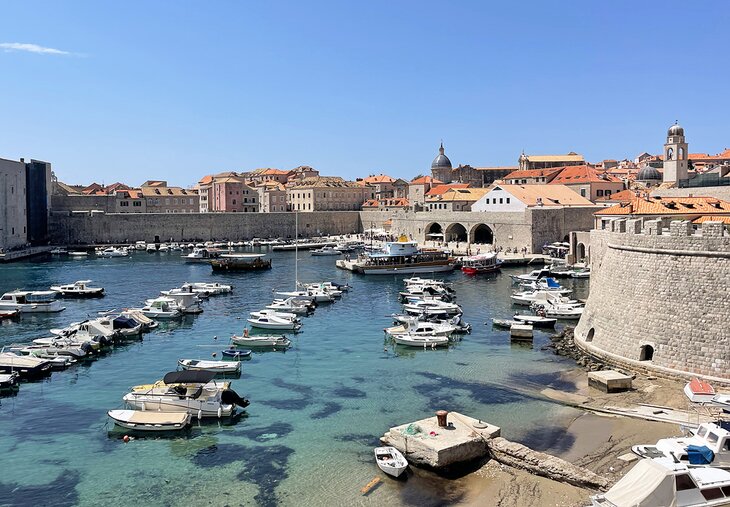
But modern-day Croatia is nothing short of a celebration of life, energy, and natural beauty, with wonderfully warm and welcoming people and thousands upon thousands of places to visit. I first visited Croatia in 2019 and became enamored with the country. So in 2023, I went back to really immerse myself and learn all that I could about this fantastic country along the coast of the Adriatic Sea.
Historic cities and unspoiled nature are some of Croatia's top attractions. The vibrant capital city of Zagreb is home to some of the country's best museums, galleries, restaurants, and shopping.
Along the coast, centuries-old harbor towns are packed with Venetian-era stone buildings, while countless pebble beaches offer things to do such as scuba diving, water skiing, and windsurfing. My road trip from Istria to Dubrovnik was a highlight of the trip, including the stunning scenery and beaches along the Makarska Riviera .
On the Adriatic, Croatia's blissful islands are a haven for yachters and those wanting to simply relax and enjoy the Mediterranean sunshine.
To get the most out of your travel experience in this beautiful country, be sure to refer to this list of the top attractions in Croatia.
1. Dubrovnik Old Town
2. plitvice lakes national park, 3. hvar town, 4. diocletian's palace in split, 6. zadar's romanesque churches, 7. marjan park in split, 8. ride the dubrovnik cable car, 9. pula's roman arena, 10. explore cavtat old town, 11. zagreb's gornji grad, 12. sailing around kornati national park, 13. zlatni rat beach, 14. the pretty town of korcula, 15. mljet national park, 16. brijuni national park, 19. sibenik.
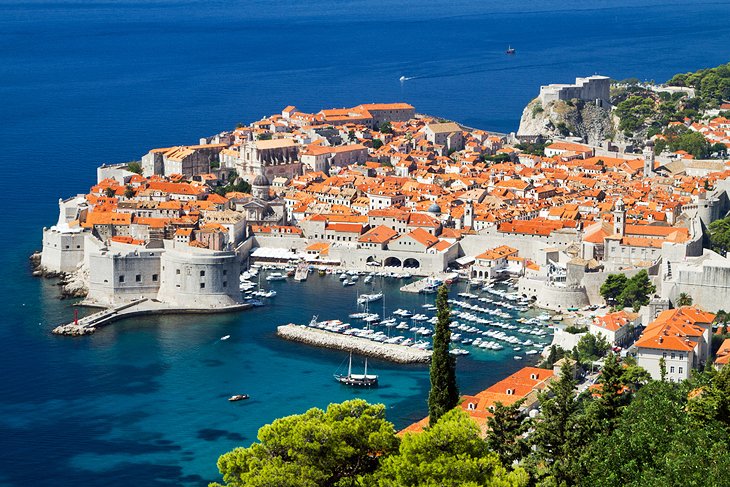
My first foray into Croatia was a visit to Dubrovnik. And it was because of Dubrovnik that I became forever hooked on Croatia. Dubrovnik, Croatia's most glamorous tourist destination and a UNESCO World Heritage site, centers on the magnificent Old Town area, contained within sturdy medieval defensive walls.
Any first-time sightseeing tour of the city should begin with a walk around the Old Town Walls. These sturdy old ramparts (the complete circuit measures two kilometers) incorporate fortresses, towers, and cannons along the way. Keep in mind that tickets to walk the walls are expensive, but if you buy a Dubrovnik Pass for the same price as this one ticket, not only are the walls included, but many of the city's other top attractions, as well.
Of course, the walls are just the tip of the iceberg when it comes to things to see and do in Dubrovnik. The Old Town is a living, breathing museum and feels like a movie set coming to life. That said, it was the actual set of HBO's Game of Thrones and Star Wars: The Last Jedi , which definitely contributed to the surge in tourists.
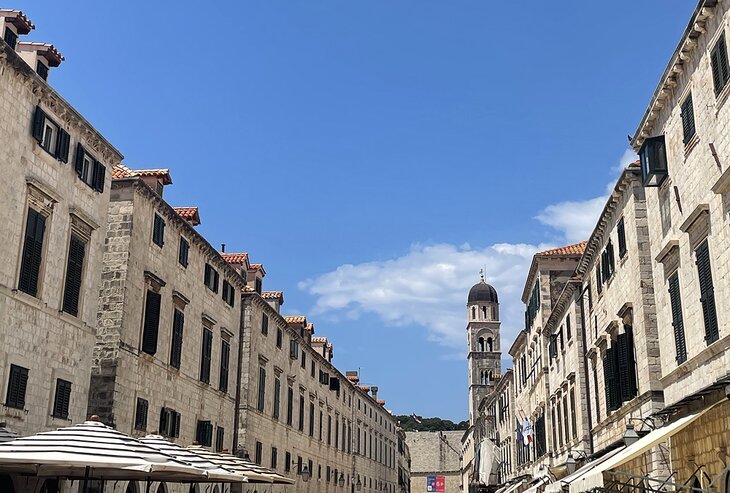
You'll likely enter the Old Town through the famous Pile Gate , built in 1537 and one of the city's most impressive structures. From high up on the walls, you can enjoy amazing views over the Old Town rooftops and out across the glistening Adriatic Sea.
Other fun things to do in Dubrovnik include exploring the Stradun , a wide 300-meter-long pedestrian thoroughfare lined with boutiques, cafés, and restaurants that are famous for their white limestone cobblestones.
Don't miss the attractive cathedral; the spectacular Square of the Loggia, a historic gathering place famous for its lovely old buildings and monuments; and Fort Lovrijenac, one of the country's most important fortresses.
In case I'm gilding the lily here, let me be upfront and say that Dubrovnik is crowded. Crowded may even be an understatement, especially if you're visiting in the summer months when a cruise ship is in port. It will be a slog to get through the narrow streets and forget about finding a place to park. Still, Dubrovnik shimmers with fairy tale magic and is mesmerizing even among the throngs of people.
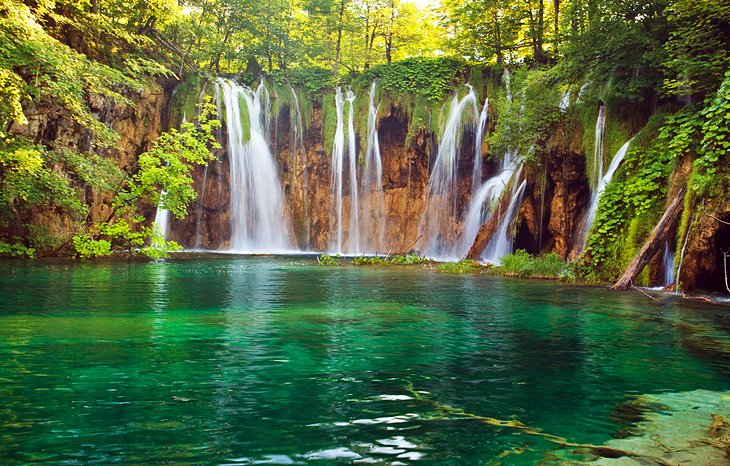
Croatia's most visited inland attraction, Plitvice Lakes National Park (Nacionalni park Plitvicka jezera) encompasses steep forested hillsides surrounding 16 emerald-blue lakes connected by a succession of thundering waterfalls. A network of footpaths and wooden bridges crisscrosses the park (the country's first national park), and the entrance ticket includes boat rides across the lakes.
Thanks to the lush pristine nature, the park is a haven for wild animals, including wolves and bears (though they are timid, so you are unlikely to see them) as well as owls, eagles, and falcons. There are several hotels on the edge of the park should you wish to stay the night. You can visit Plitvice on organized sightseeing tours by bus from Zagreb and Zadar.
If you're planning on visiting without a guide or not as part of a tour, be sure to reserve your tickets in advance-its a very popular tourist attraction that receives over a million visitors a year.
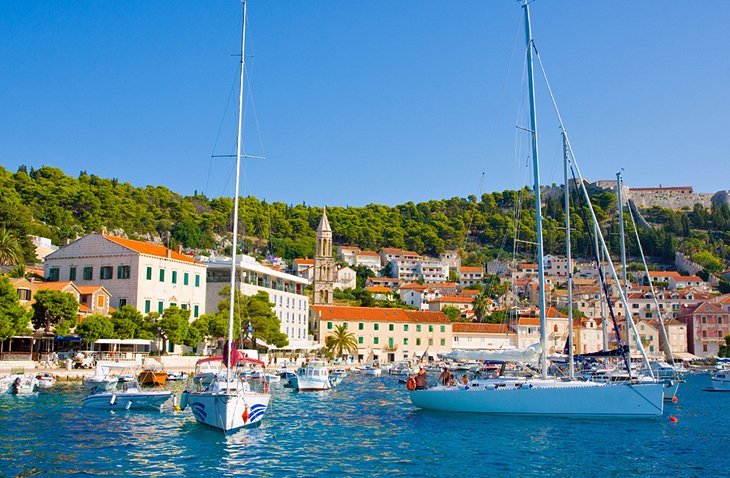
Many tourists visit Croatia to explore the blissful Dalmatian islands , of which the most fashionable is Hvar. Here, the trendy city of Hvar is home to some of the country's top hotels and best seafood restaurants.
Dating back to the years spent under Venetian rule (1420-1797), its car-free Old Town is made up of a spacious main square overlooked by a 16th-century cathedral, a pretty fishing harbor, and a hilltop fortress.
Hvar is popular with yachters and celebrities, as well as travelers who come here to enjoy its beaches and water sports. It is served by ferry from Split.
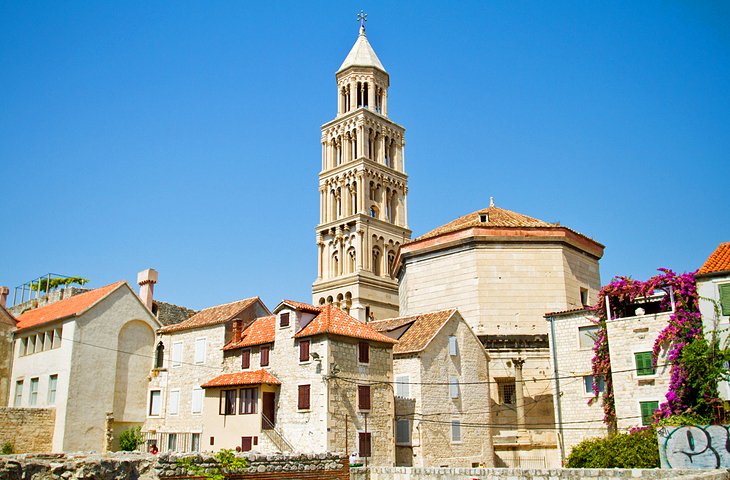
Split, Croatia's second biggest city after Zagreb, was established within the ancient Roman walls of the huge Diocletian Palace (Dioklecijanova palaca). Situated overlooking the Adriatic Sea, it was built by Roman Emperor Diocletian, who retired here in AD 305.
Square in plan – it's more fortress than palace and actually housed the Emperor's personal garrison – the palace has four monumental gates, three accessible from the land, and one that originally opened directly onto the water. Within the walls, things to see include the magnificent Peristyle (an arcaded courtyard), where you'll also find the Cathedral of St. Domnius with its elegant bell tower.
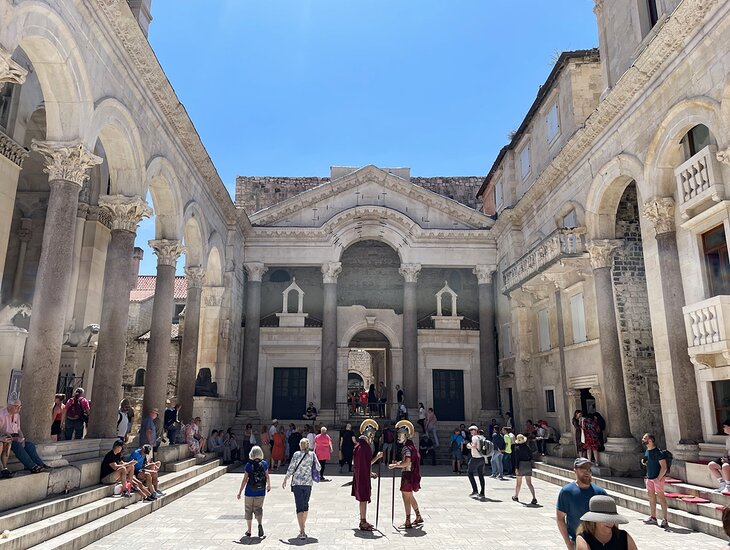
A fun thing to do at night is to visit and enjoy the illuminated ruins, while during the day, concerts and entertainment are frequently held. The Old Town is a pedestrian-only zone and has been proclaimed a UNESCO World Heritage Site.
The best way to access the palace is to walk through the city's southern gate. It's the gate directly in front of the St. Dominic Church. Once you pass through the gate, the palace will be directly on your left.
Be sure to go early in the day. This is Split's most important attraction and the number of crowds can be overwhelming. If you are in Croatia before June, you should have the place (relatively) to yourself.
- Top-Rated Tourist Attractions in Split
- Popular Beaches in Split
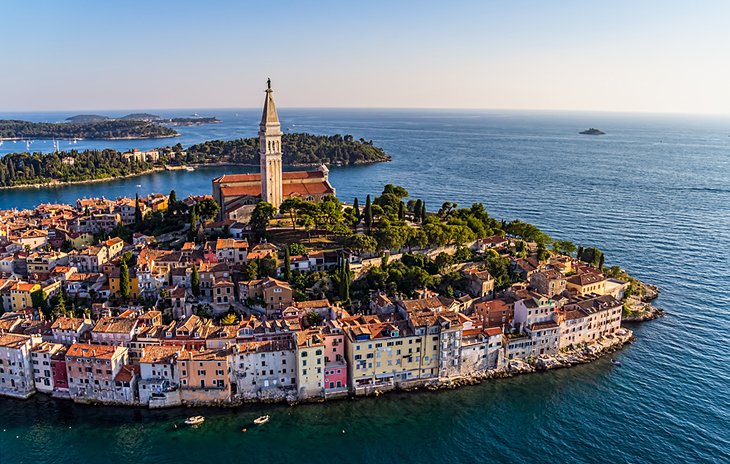
Located in northwest Croatia, on the Istrian peninsula, the Venetian-era seaside town of Rovinj is made up of pastel-colored houses ringing a pretty fishing harbor and presided over by a hilltop church with an elegant bell tower.
Besides the nearby pebble beaches, the main tourist attraction is the Batana Eco-Museum on the seafront, which tells the story of the batana , a type of wooden boat used by local fishermen. There are also plenty of top-rated hotels, up-market seafood restaurants, and art galleries to explore.
Don't miss the beaches surrounding Rovinj , either. These calm and beautiful beaches are perfect for relaxing with a good book and basking on the warm, white pebbles. Some of my favorite Rovinj beaches include Cisterna Beach, Cuvi Beach, and Skaraba Beach.
The locals speak a dialect that mixes both the Croatian and Italian languages. The nearest airport is in Pula.
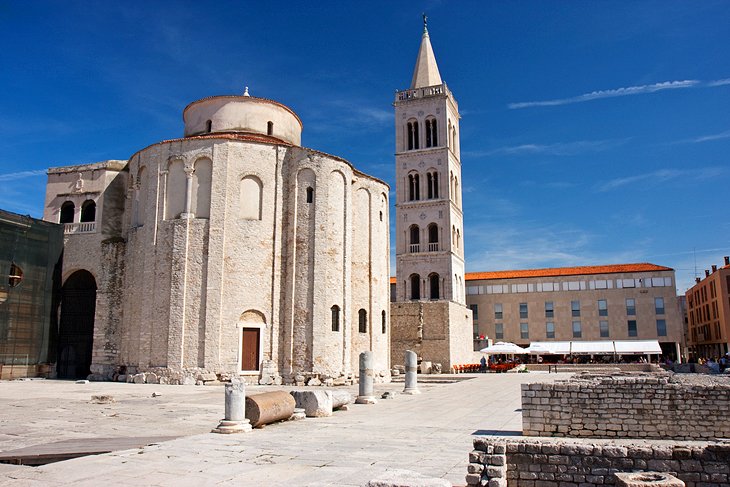
Zadar's car-free Old Town is built on a small peninsula jutting out onto Croatia's Dalmatian coast. Said to be the country's oldest continually inhabited city-it can trace its roots back as far as the Stone Age-its top tourist attractions are its many fine Romanesque churches, most of them built between the 9th and 13th centuries and filled with superbly preserved religious paintings and ornate golden treasures.
Be sure to check out the 9th-century pre-Romanesque Church of St. Donatus ; the 11th-century Church of St. Mary ; the Cathedral of Anastasia and the Church of St. Chrysogonus , both from the 12th century.
Other things to do include visiting the Museum of Ancient Glass , as well as two popular modern installations, the Sea Organ and the Greeting to the Sun , both on the seafront close to the tip of the peninsula.
One of the best free things to do in Zadar is to simply relax on picturesque Kolovare Beach, a stretch of sand and pebbles that backs onto a lovely park area. You'll find several beautiful beaches around Zadar to enjoy some time by the sea.
- Read More: Top-Rated Attractions in Zadar & Easy Day Trips
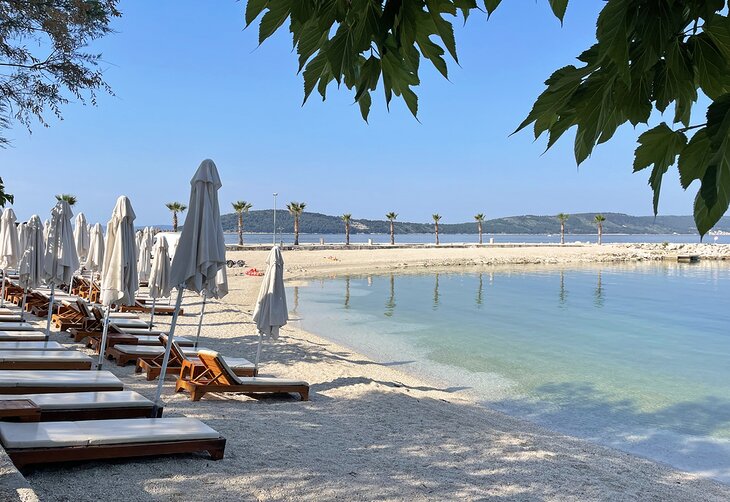
One of my favorite parts about visiting Split is getting the chance to explore Marjan Park. This green, forested peninsula is just north of Old Town and has some of the best beaches in Split . My favorite is Kasjuni Beach — perfect for a quiet morning dip or an energetic afternoon at Joe's Beach Lounge .
Marjan Park also has tranquil meandering trails that wind their way through the dense Mediterranean pine forest. From the shoreline, you'll have beautiful views of nearby islands and the sparkling blue Adriatic Sea.
The park is also home to the Mestrovic Gallery , which is considered to be one of the best museums in Croatia.
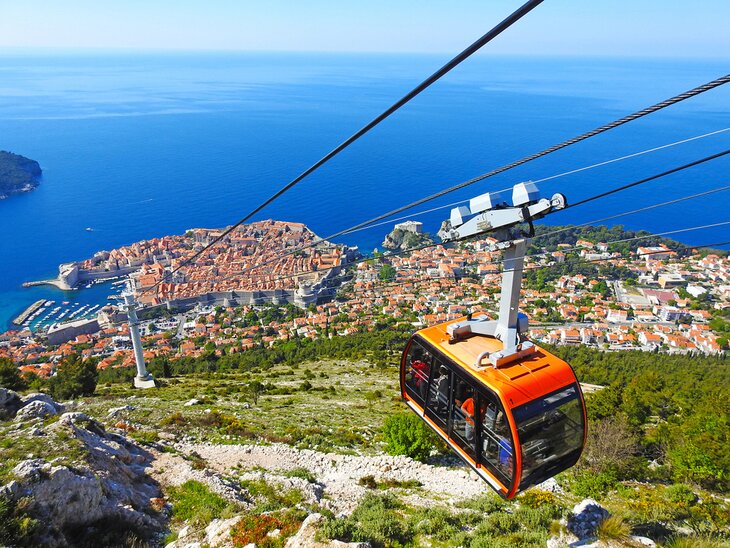
One of the best ways to see Dubrovnik is to hop aboard the Dubrovnik Cable Car . If you swoon over those aerial shots of Old Town, the cable car is a surefire way to take them yourself.
The cable car route travels up Srd Hill, and on a clear day you can see nearly 50 kilometers in the distance. The entire trip is less than 10 minutes and when you are at the top you can explore the top of the hill. Up here, be sure to inspect the 19th-century Imperial Fortress or dine at the restaurant that has views over Old Town.
Keep in mind that the line for the cable car can be quite long during high season.
Address: Ulica kralja Petra Krešimira IV, 20000, Dubrovnik
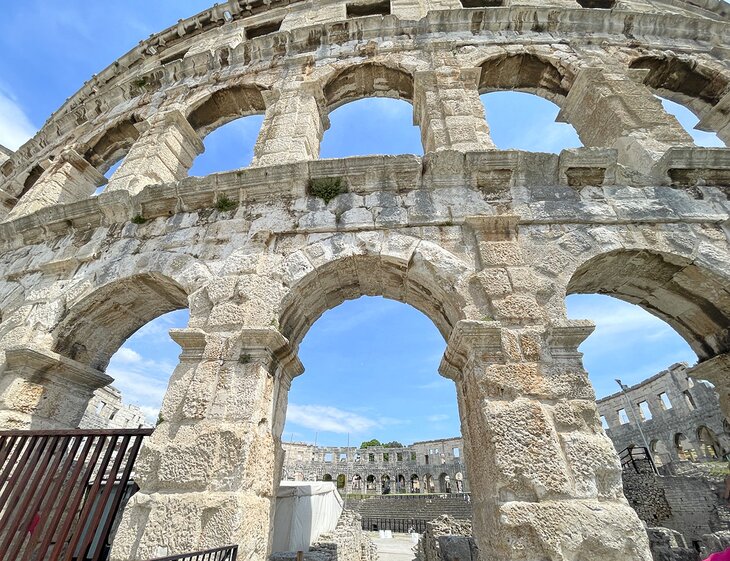
Located on the coast of the Adriatic in Croatia's popular Istria region , the historic city of Pula is well worth including on your travel itinerary. In addition to its lovely seaside setting, including a number of fine beaches, Pula is well known for its well-preserved Roman architecture and makes for an excellent day trip for those staying in other parts of the country.
Though inhabited by humans for tens of thousands of years, it was the Romans over 2,000 years ago who left their mark. Of the numerous examples of Roman buildings that remain, none are as impressive or as big as the Pula Arena (Pulska Arena). Ordered built around the 1st century by Emperor Vespasian, it's one of the largest surviving Roman amphitheaters, rivaled only by its famous cousin, the Colosseum in Rome.
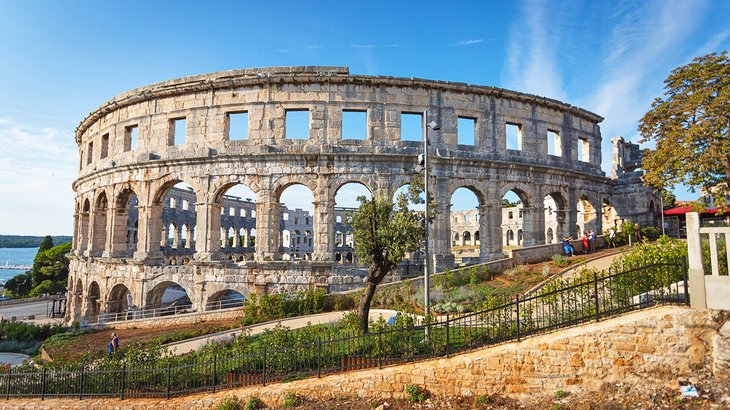
Designed to host crowds of up to 20,000 people, it was used predominantly for entertainment such as gladiator fighting and jousting. Thanks to careful reconstruction, this impressive structure to this day can still host audiences of up to 5,000 visitors during its regular summer schedule of concerts and festivals.
A number of other Pula Roman ruins are also worth seeing. Of these, the best is the Roman Forum, a well-preserved ancient square that for centuries has been at the center of town life. Here, you'll also find the Temple of Augustus (Augustov Hram), a finely preserved columned structure, which boasts a collection of Roman sculptures.
Address: Flavijevska ul., 52100, Pula, Croatia
Read More: Best Beaches in Pula
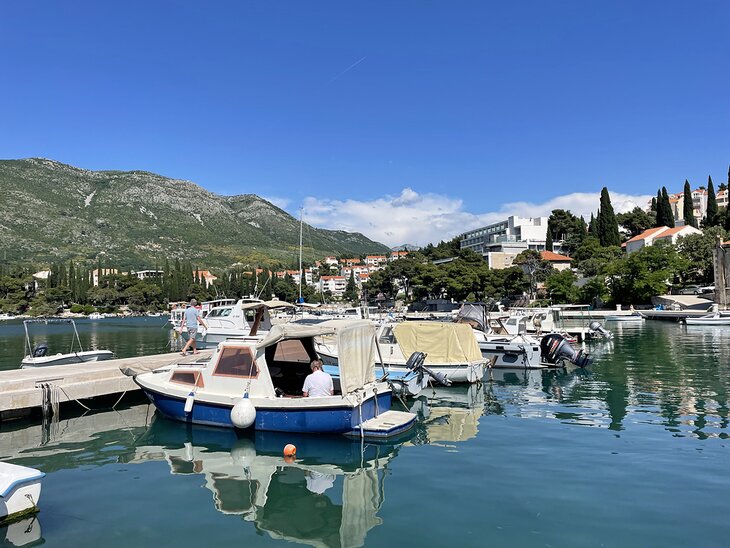
About 20 minutes south of Dubrovnik is the village of Cavtat, which I can only describe as "Dubrovnik light." The city boasts the same beautiful white stone buildings with red-topped roofs, a charming marina, and plenty of narrow alleyways to explore.
But unlike Dubrovnik, Cavtat's tourism numbers are blissfully pared down. Even during high season the city still feels calm, even tranquil, compared to the streets of Dubrovnik.
Cavtat is a wonderful village to come to visit for a slower pace of life. Linger at a waterfront cafe, or stroll along the marina walkways. The views from Cavtat are quite beautiful, as well.
Cavtat also happens to be the gateway to some of the nearby beach towns just outside Dubrovnik — the veritable "Dubrovnik Riviera." You'll find a string of beach towns between Cavtat and Dubrovnik, like Plat, Soline, Mlini, and Srebreno, all of which are known for their lovely, calm beaches.
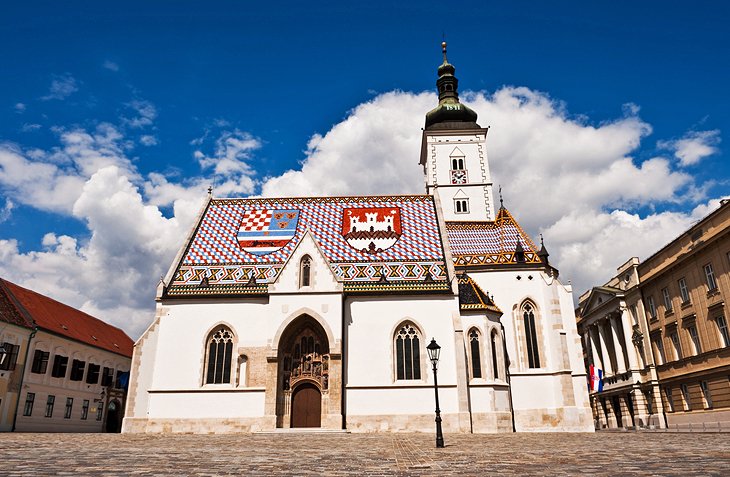
Zagreb's main sightseeing area is the medieval Gornji Grad (Upper Town) district. Here, popular tourist attractions include the cathedral with its neo-Gothic façade, twin steeples, and treasury with its large collection of religious art and artifacts; and the Croatian Parliament (Hrvatski sabor).
Also worth seeing are the Church of St. Mark with its famous colored tiled roof, and the 13th-century Tower of Lotrscak , which you can climb for fantastic views over the city and the surrounding area. Also be sure to catch most people's favorite, the much-loved Museum of Broken Relationships .
- Read More: Top-Rated Attractions & Things to Do in Zagreb
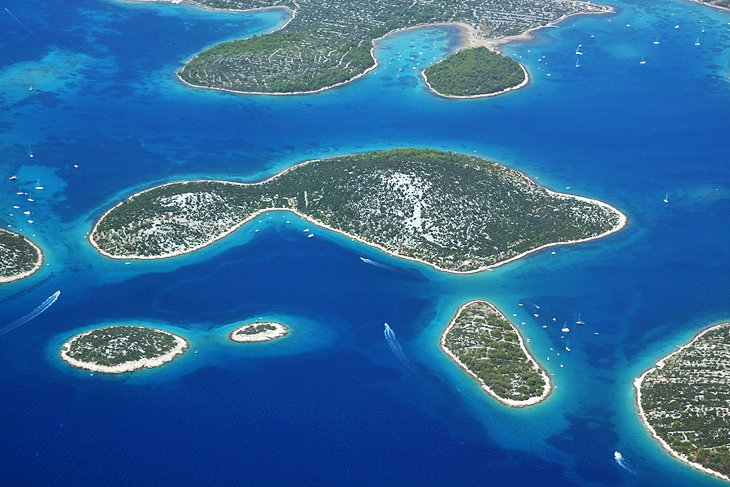
Spreading over an area of some 320 square kilometers-it's 35 kilometers long and 13 kilometers wide-the Kornati archipelago encompasses 89 scattered islets, big and small.
Rocky and arid with little fertile soil, the islets are practically uninhabited, though there are some very basic stone cottages dotted here and there. Originally built as one-room shelters by local fishermen and shepherds, they're now often used as holiday retreats or seasonal seafood restaurants.
The best way to explore this stunningly beautiful coastal region is by private sailing boat, with the nearest charter base being located in Biograd Na Moru. It's also possible to visit the Kornati as a day trip by excursion boat from either Zadar or Sibenik on the mainland. If sailing under your own step, (as it were), you'll need to purchase a valid permit, available online (see the official site below).
Official site: www.np-kornati.hr/en/
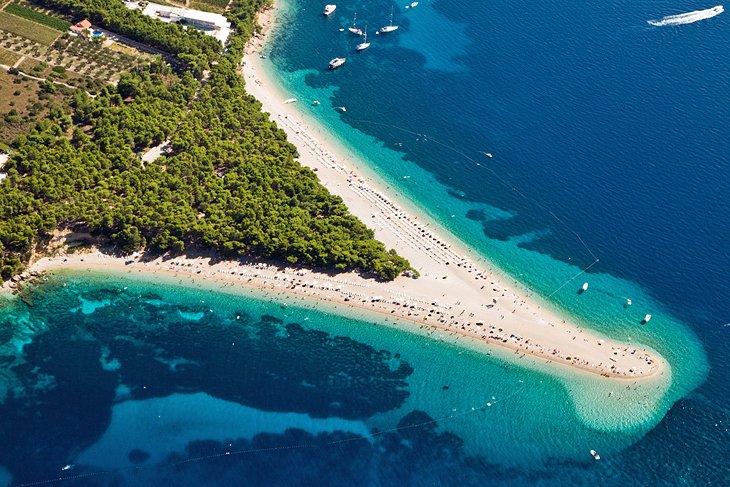
Croatia's most photographed beach has to be the remarkable Zlatni Rat (Golden Horn, or Golden Cape). Located in Bol on the south coast of Brac, this unusual landform, known as a "spit," is made up of fine pebbles and runs 500 meters perpendicular to the coast. Depending on local winds and currents, it moves and changes shape from season to season.
Backed by a cluster of pine trees offering shade and overlooked by the rocky heights of Vidova Gora mountain , it is lined in summer with sunbeds and umbrellas. Widely considered one of Europe's top beaches, the sea is warm enough to swim from June through September, and some people even manage to stretch the bathing season out to May and October, too.
Extra attractions on the beach include water sports such as paddle boats, sea kayaks, and banana boat rides. Zlatni Rat is also Croatia's top windsurfing destination. Brac is accessible by ferry and catamaran from Split.
A number of top luxury hotels are located nearby for those wanting to enjoy an extended stay here.
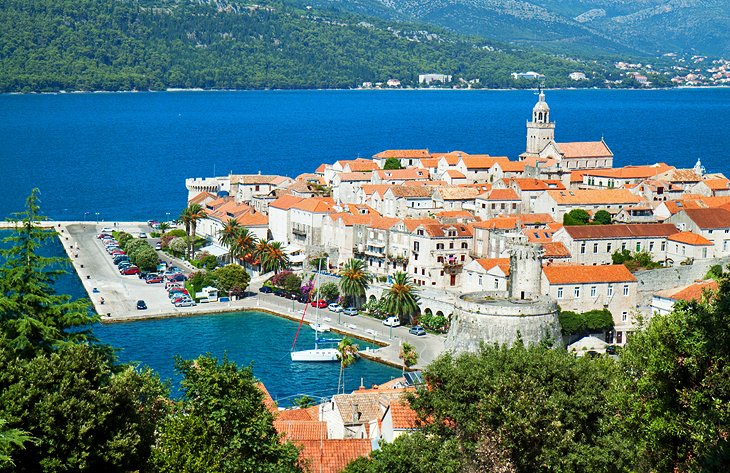
The town of Korcula, the chief settlement on the island of the same name in South Dalmatia, sits snugly on a tiny peninsula. Protected by medieval walls and towers, its car-free stone alleys are laid out in a herringbone pattern so as to give shelter from the prevailing winds. Packed with centuries-old aristocratic stone buildings, Korcula was built at a time when the island was under Venetian rule.
The top points of interest include Marco Polo house , said to be the birthplace of the renowned 13th-century explorer, while one of the best things to do is catch a performance of the moreska sword dance , a traditional dance staged for tourists just outside the town walls on summer evenings.
For a truly special experience, you can reach Korcula's historic town center by catamaran from Split (daily) or Dubrovnik (summer only).
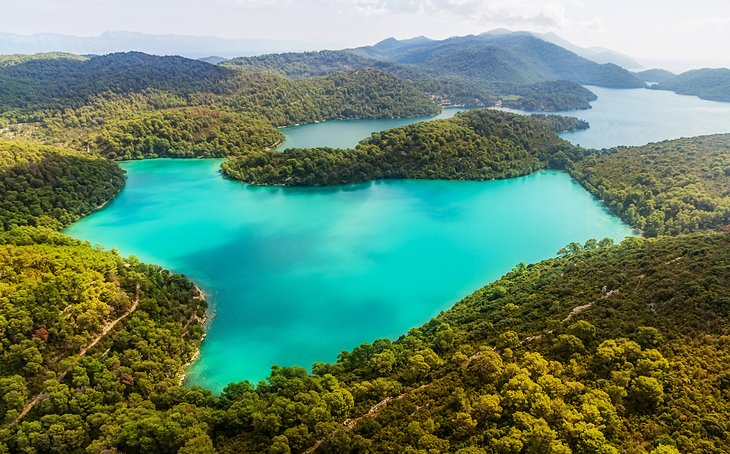
The western third of the island of Mljet has been designated as a national park. Largely covered by dense woodland, it centers on two interconnected, turquoise saltwater lakes, one of which has an islet capped by a 12th-century Benedictine monastery, which you can visit by taxi-boat.
Popular with nature lovers, the park offers plenty of things to do, including exploring the numerous paths that run through the woodland. There's also a nine-kilometer trail that runs around the perimeter of the lakes, making it ideal for walking or mountain biking. The area is also popular for swimming and activities such as kayaking (kayaks can be rented to explore the lakes).
There's only one hotel on the island, but local families do rent rooms to visitors in summer, and a number of reputable campsites are also available. Mljet can be reached by ferry or catamaran from Dubrovnik.
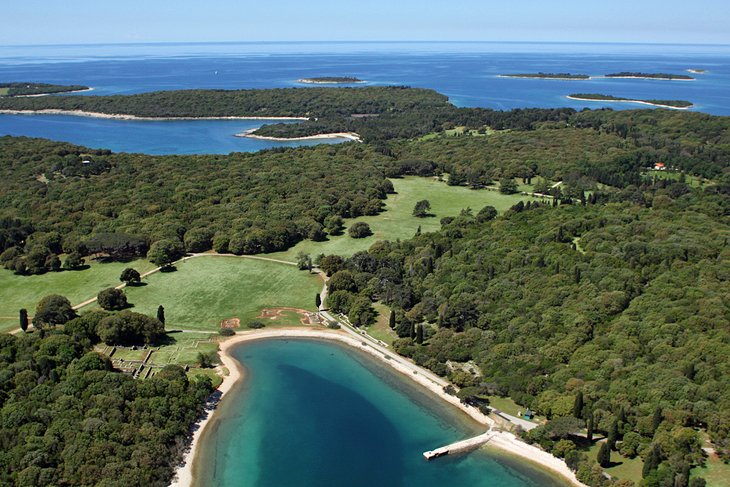
Lying off the Istrian peninsula, this archipelago of scattered pine-scented islets has been designated a national park ( Nacionalni Park Brijuni ). The largest island, Veli Brijun , is covered with beautifully landscaped parkland and is open to visitors year-round.
The former President of Yugoslavia, Tito, used to entertain visiting foreign dignitaries here, and some of them brought him exotic animals as gifts, the descendants of which are now on show in the small safari park: elephants from India, antelopes from Zambia, and zebras from Guinea are the main attractions.
The island is also home to an abundance of unique flora and fauna, along with evidence that dinosaurs once roamed here. The island has two hotels, along with a golf course and the ruins of a Roman villa. To get here, catch the national park boat (reservations essential) from Fažana on the mainland, seven kilometers north of Pula.
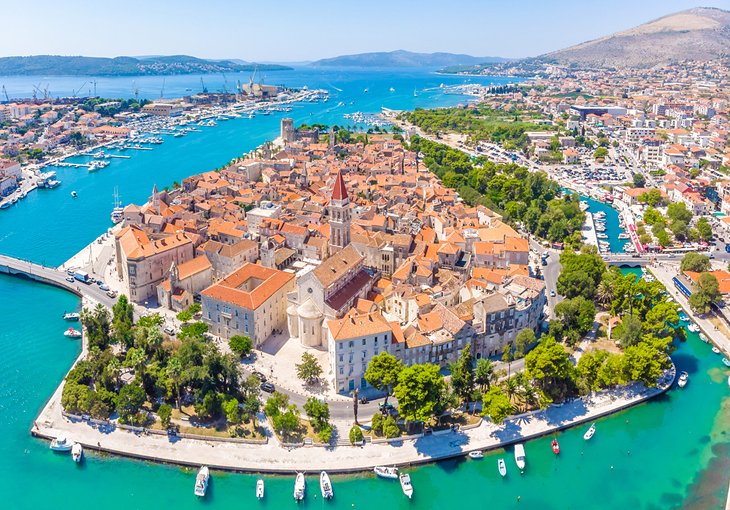
Widely regarded as one of the top places to visit on Croatia's spectacular Dalmatian coast, the attractive seaside town of Trogir is a delightful vacation destination to explore. With a rich history that dates all the way back to its founding in 380 BC, Trogir has at various times been ruled by the Greeks, Romans, Hungarians, and Venetians.
Trogir became my home base for almost two weeks while I was exploring Croatia's Dalmatian Coast. It is an extremely livable city, from the history of Old Town to the naturally beautiful beaches of Ciovo — the island just across the water from Old Town. You'll also find a delightful farmers market, and plenty of creature comforts in the way of grocery stores, fitness centers, and shopping.
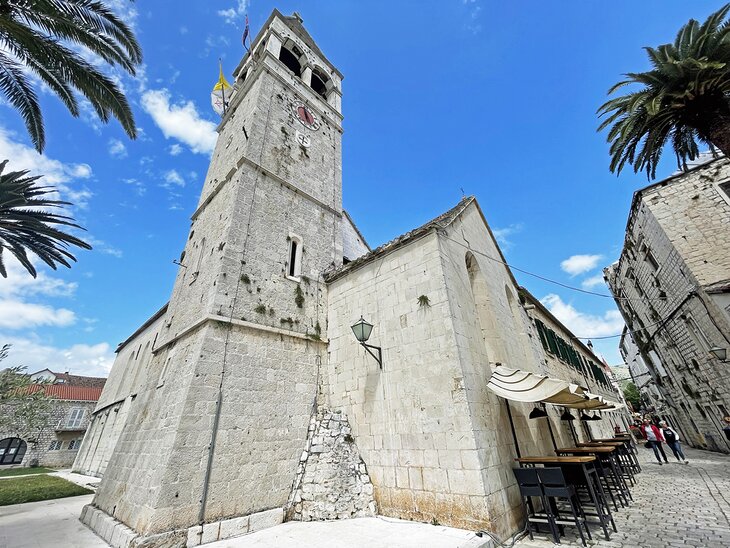
But Old Town Trogir is where the magic really lives, especially if you're only able to visit for a day. Now a UNESCO World Heritage Site – an honor bestowed on the town in 1997 – Trogir offers tourists no end of fun things to do . In addition to its many top hotels and accommodation options, visitors are spoiled for choice when seeking a good seafood restaurant or getting in some souvenir shopping.
Thanks to the careful preservation of its many old buildings, history buffs, and sightseers alike have plenty of attractions to visit, most of them to be found within the confines of the town walls dating back to the 1400s.
Examples of elegant Romanesque and Renaissance-style architecture can be seen everywhere along the town's medieval streets or lining the attractive waterfront promenade. Notable among these are Trogir Cathedral (the Cathedral of St. Lawrence), Cipiko Palace, and the Church of St. Peter.
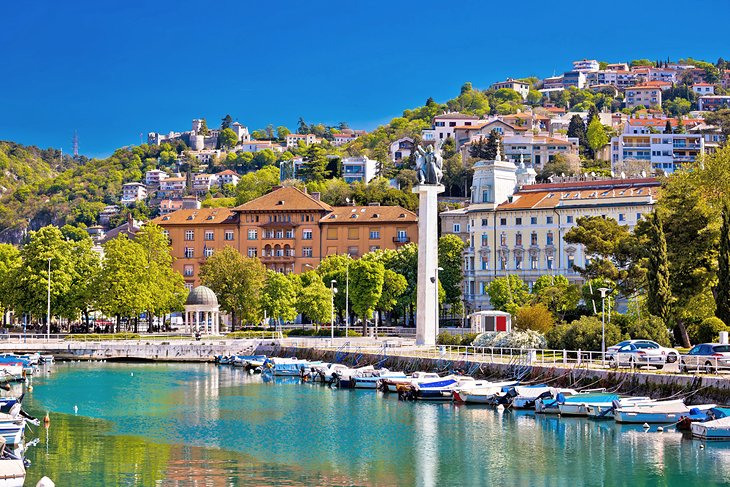
The attractive city of Rijeka, often overlooked by vacationers to the Dalmatian Coast, is well worth adding to your Croatia travel itinerary. In addition to the bonus of having to deal with fewer crowds, this long-important port city offers plenty of attractions and things to do for those who do visit.
Rijeka also served as a home base when I was exploring Croatia's northern coast. I loved Rijeka for its easy access from Zagreb and it was the perfect jumping-off point from which to explore Istria.
But Rijeka itself is a destination worth exploring, particularly its Old Town. Highlights include exploring the well-preserved cobbled streets and lanes, each lined with splendid examples of townhomes and dwellings – as well as old shops and places of trade – that were built in the 1700s.
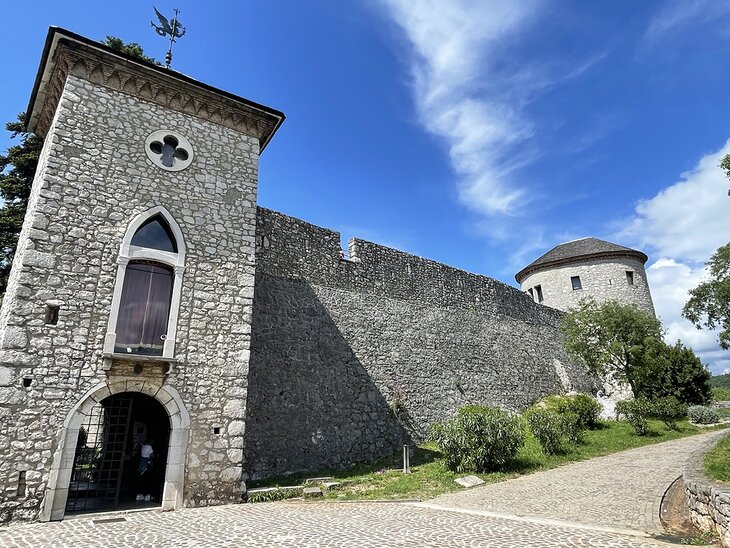
Be sure to visit the magnificent Trsat Castle (Gradina Trsat), built above the town in the 13th century and accessible via a lovely pathway that also leads to the nearby Church of Our Lady of Trsat (Gospa Trsat). Add to this a mix of great art galleries and museums, Croatia's largest carnival, and the nearby Risnjak National Park, and there's no end of good excuses to visit this charming town.
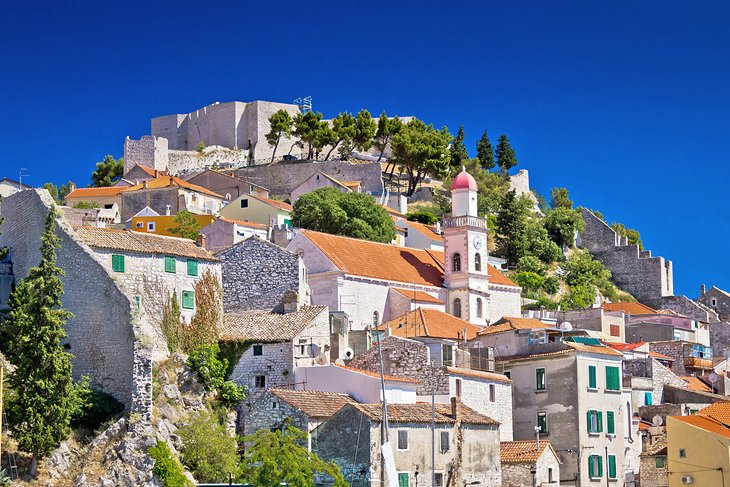
Boasting a rich history that can be traced back as far as the 11 th century, the attractive Dalmatian city of Sibenik has much to offer tourists to Croatia. While not always as busy as other popular destinations within this beautiful country, there's no shortage of great things to do here.
Start by exploring the perfectly-preserved historic Old Town center. Here, you'll find elegant 15 th - and 16 th -century architecture, along with numerous attractions worth visiting. Visit the 15th-century Cathedral of St. James (Katedrala Sv Jakova), a UNESCO World Heritage Site and one of the finest churches in all of Croatia.
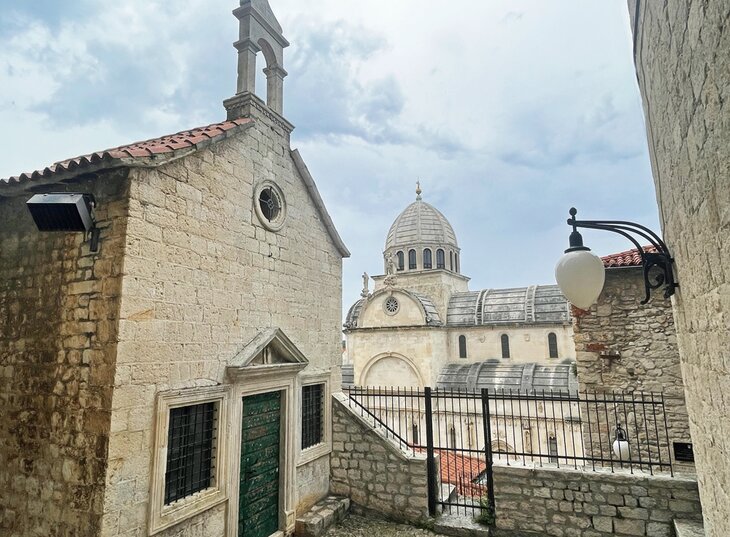
Also worth visiting are the remains of St. John's Fortress, perched high upon a hill overlooking the town and boasting magnificent views over the Adriatic, and the equally important St. Michael's Fortress, popular for the traditional cultural performances hosted on its delightful open-air stage.
What I loved most about Sibenik is that it still feels like a well-kept secret, especially compared to places like Split and Dubrovnik. The charming hilltop city has plenty of narrow alleyways and secret staircases to explore.
Along the waterfront, cafes are lively and full of happy travelers and locals looking for a nice bite to eat. My favorite place to stop for a rest here is Azimut , a river-front cafe, performance space, and gallery.

More on Croatia
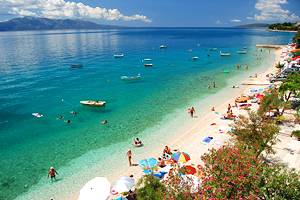
Update April 12, 2024
Information for u.s. citizens in the middle east.
- Travel Advisories |
- Contact Us |
- MyTravelGov |
Find U.S. Embassies & Consulates
Travel.state.gov, congressional liaison, special issuance agency, u.s. passports, international travel, intercountry adoption, international parental child abduction, records and authentications, popular links, travel advisories, mytravelgov, stay connected, legal resources, legal information, info for u.s. law enforcement, replace or certify documents.
Before You Go
Learn About Your Destination
While Abroad
Emergencies
Share this page:
Travel Advisory July 26, 2023
Croatia - level 1: exercise normal precautions.
Reissued with obsolete COVID-19 page links removed.
Exercise normal precautions in Croatia.
Read the country information page for additional information on travel to Croatia.
If you decide to travel to Croatia:
- Enroll in the Smart Traveler Enrollment Program ( STEP ) to receive Alerts and make it easier to locate you in an emergency.
- Follow the Department of State on Facebook and Twitter .
- Review the Country Security Report for Croatia.
- Visit the CDC page for the latest Travel Health Information related to your travel.
- Prepare a contingency plan for emergency situations. Review the Traveler’s Checklist .
Embassy Messages
View Alerts and Messages Archive
Quick Facts
Three months after the planned date of departure
One page is required for an entry stamp
Up to 10,000 euros
Embassies and Consulates
U.s. embassy zagreb.
Ulica Thomasa Jeffersona 2 10010 Zagreb, Croatia Telephone: +(385) (1) 661-2200 Emergency After-Hours Telephone: +(385) (1) 661-2200 Fax: +(385) (1) 665-8933 Email: [email protected]
Destination Description
Learn about the U.S. relationship to countries around the world.
Entry, Exit and Visa Requirements
You need a valid U.S. passport to enter Croatia. EU regulations require that U.S. passport holders have no less than three months’ validity when they depart Croatia. U.S. passport holders with less than three months may be denied entry. The U.S. Embassy strongly suggests that you have at least six months of validity to avoid problems when you travel.
Croatia is a member of the Schengen area. Land border controls between Croatia, Slovenia, and Hungary and the sea border with Italy ceased in 2023. The land borders with Serbia, Bosnia and Herzegovina, and Montenegro continue to have police and customs checks in place, as these countries are outside of the Schengen area. Airport controls for flights between Croatia and other countries within the Schengen area ceased in 2023. Visit the Embassy of Croatia website for the most current visa information.
- U.S. passport holders do not need a visa if they are traveling to Croatia for tourism or business for less than 90 days within a 180-day period.
- For entry, residence, and work requirements in Croatia, please visit the Croatian Ministry of Interior’s website . The U.S. Embassy is not able to intervene in the issuance of a Croatian residence permit.
- You must register at a local police station within three days of arrival in Croatia. If you are staying at a hotel, hostel, or vacation rental, you will be registered by the property owner.
- Foreign documents submitted for residence in Croatia must be translated into Croatian and have an apostille stamp. The U.S. Embassy cannot authenticate documents. For information on applying for apostille and authentication services, please see the Department of State’s Office of Authentications website.
The U.S. Department of State is unaware of any HIV/AIDS entry restrictions for visitors to, or foreign residents of, Croatia.
Find information on dual nationality , prevention of international child abduction , and customs regulations on our websites.
Military/Status of Forces Agreement (SOFA) Travelers : While active-duty U.S. military personnel may enter Croatia under the SOFA with proper Department of Defense (DOD) identification and travel orders, all SOFA family members, civilian employees, and contractors must have valid passports. Active-duty military personnel should obtain a tourist passport before leaving the United States to accommodate off-duty travel. DOD travelers should consult with their unit for clearance before leaving the United States
Safety and Security
Terrorism : Terrorist groups and those inspired by such organizations are intent on attacking soft targets and are increasingly using less sophisticated methods of attack – including knives, firearms, rudimentary IEDs and vehicles – to target crowds more effectively. Frequently, their aim is unprotected or vulnerable targets, such as:
- High-profile public events (sporting contests, political rallies, demonstrations, holiday events, celebratory gatherings, etc.)
- Hotels, clubs, and restaurants frequented by tourists
- Places of worship
- Shopping malls and markets
- Public transportation systems (including subways, buses, trains, and scheduled commercial flights)
For more information, see our Terrorism page.
Land Mines: Armed conflict ended in all parts of Croatia in 1995; however, de-mining of areas along former confrontation lines continues. Known mined areas are well marked with Croatian-language warning signs using the international symbol for mines: a skull and crossbones inside a red, upside-down triangle. Drivers in former conflict areas should stay on paved roads to reduce the risk of encountering unmarked mines and unexploded ordnance.
- For more information about mine-affected areas in Croatia, please visit the Croatian Mine Action Center's website
Crime: Violent crime is rare but isolated attacks targeting specific persons or property can occur and may be racially motivated or prompted by lingering ethnic tensions from Croatia's war for independence.
- Safeguard your belongings , especially when using public transport. Report incidents of theft to the local police. File a police report if your passport is stolen.
- Don’t display outward signs of wealth . It may make you a target for thieves.
- Avoid "gentlemen's clubs." In the past, such establishments have presented foreign customers with inflated bills and threatened those who refuse to pay.
U.S. business entities are encouraged to read the most recent Overseas Security Advisory Council (OSAC) Annual Crime and Safety Report for Croatia .
Demonstrations : While civil disorder is rare, U.S. citizens should monitor local media coverage, review their personal security practices, and be always aware of their surroundings. Even peaceful demonstrations can turn violent with little or no notice. Security messages about demonstrations can be found here on the U.S. Embassy in Croatia’s website. Some soccer matches result in violent clashes of fans from rival teams. These clashes often cause disruptions in traffic in the affected area. High profile matches are often accompanied by heavy police presence.
International Financial Scams: See the Department of State and the FBI pages for information on scams.
Victims of Crime : Local authorities are responsible for investigating and prosecuting crimes. Report crimes to the local police by dialing 112. U.S. citizen victims of sexual assault may contact the U.S. Embassy at +385 (1) 661-2200 and check the information on local resources for victims of sexual assault on the U.S. Embassy in Croatia’s website. See our webpage on help for U.S. victims of crime overseas .
- help you find appropriate medical care
- assist you in reporting a crime to the police
- contact relatives or friends with your written consent
- explain the local criminal justice process in general terms
- provide a list of local attorneys
- provide our information on victim’s compensation programs in the United States
- provide information about local resources for victims of crime
- provide an emergency loan for repatriation to the United States and/or limited medical support in cases of destitution
- help you find accommodation and arrange flights home if you are destitute
- replace a stolen or lost passport
Domestic Violence : U.S. citizen victims of domestic violence may contact the U.S. Embassy in Croatia for assistance. You can find additional local resources for victims of domestic violence on the U.S. Embassy’s website.
Tourism: The tourism industry in Croatia is regulated and rules generally enforced regarding safety inspections. Hazardous areas/activities are identified with appropriate signage and professional staff is typically on hand in support of organized activities. In the event of an injury, appropriate medical treatment is widely available throughout the country. Outside of a major metropolitan center, it may take more time for first responders and medical professionals to reach a patient and provide assistance. U.S. citizens are encouraged to purchase medical evacuation insurance .

Local Laws & Special Circumstances
Criminal Penalties : You are subject to local laws. If you violate local laws, even unknowingly, you may be arrested, imprisoned, or deported.
Furthermore, some crimes are also prosecutable in the United States, regardless of local law. For examples, see our website on crimes against minors abroad and the Department of Justice website.
Arrest Notification : If you are arrested or detained, ask police to notify the U.S. Embassy immediately. See our webpage for further information.
Recreational Drugs : Some recreational drugs may be illegal in Croatia. The Government of Croatia maintains a List of Narcotic Drugs, Psychotropic Substances and Plants Which Can Be Used for Preparation of Narcotic Drugs , which lists illegal substances.
Counterfeit and Pirated Goods : Although counterfeit and pirated goods are prevalent in many countries, they may still be illegal according to local laws. You may also pay fines or have to give them up if you bring them back to the United States. See the U.S. Department of Justice website for more information.
Real estate : U.S. citizens should exercise due diligence when considering purchasing real estate in Croatia. Consult with an attorney before undertaking a real estate purchase and be careful to fully understand the implications of all parts of a real estate contract. Working with a translator can help ensure your rights are protected. The U.S. Embassy cannot assist U.S. citizens with legal disputes. Be prepared to take your case to the local courts. Please review the U.S. Embassy’s website for additional information on buying real estate in Croatia .
Travelers checks, or personal checks are no longer accepted in Croatia . ATMs are common, and credit cards are generally accepted. Facilities are available for wiring or transferring money.
Recreational Boating: The Croatian government requires all recreational captains chartering Croatian-flagged vessels to have a certificate of competence.
- Croatia recognizes certain certificates issued by the U.S. Sailing Association and licenses issued by the national authorities of other countries.
- Details on classes of licenses recognized by country can be found on the Ministry of the Sea, Transport, and Infrastructure ’s webpage.
- Tourists in Croatia can be certified by passing a test at harbormasters' offices in Pula, Rijeka, Senj, Zadar, Sibenik, Split, Ploce, Dubrovnik, or at the Ministry in Zagreb.
- Travelers arriving by private marine craft should refer to the Ministry’s website for information on nautical regulations.
Climbing and Hiking: If you intend to hike or climb in the mountains, seek local guides’ expert advice. For emergencies, call 112. Rock climbers in Paklenica National Park should consult a local guide or contact Paklenica National Park prior to their visit.
Faith-Based Travelers: See our following webpages for details:
- Faith-Based Travel Information
- International Religious Freedom Report – see country reports
- Human Rights Report – see country reports
- Hajj Fact Sheet for Travelers
- Best Practices for Volunteering Abroad
LGBTQI+ Travelers: There are no legal restrictions regarding same-sex sexual relations or the organization of LGBTQI+ events in Croatia. Although LGBTQI+ individuals are afforded full rights in Croatia, same-sex couples may face legal challenges in the areas of adoption and next-of-kin determinations. In 2014, Croatia enacted the Law on Life Partnership of Same Sex Couples allowing for formal registration of same sex unions. The LGBTQI+ community is protected by anti-discrimination laws, and there are no legal or governmental impediments to the organization of LGBTQI+ events. However, there have been incidents against LGBTQI+ groups, notably during annual pride events, both in Zagreb and Split. Individual cases of attacks on members of the LGBTQI+ community have also been reported.
See our LGBTQI+ Travel Information page and section six of our Human Rights Report for further information.
Travelers With Disabilities or Who May Require Accessibility . Accessibility and accommodation in Croatia are different from those in the United States. Croatian law prohibits discrimination against persons with disabilities. It also mandates access to transportation, communication, and public buildings for persons with disabilities; however, there is a marked difference in new construction compared to old construction, where access can still be limited. Croatia’s geography is hilly and often steep, particularly along the coast, and it presents challenges to some persons with disabilities. Access to public transportation may not always be available. Outside urban areas, accessibility worsens significantly.
Many cities in Croatia are making access improvement for travelers with disabilities.
Students: See our Students Abroad page and FBI travel tips .
Women Travelers: See our travel tips for Women Travelers .
Adequate medical care is readily available in Croatia, but facilities may not be comparable to U.S. standards. Travelers to Croatia may obtain a list of English-speaking physicians on the U.S. Embassy’s website. We do not endorse or recommend any specific medical provider or clinic. You may need a prescription to get some medications that you can purchase over the counter in the United States.
For emergency services in Croatia, dial 194 or 112.
Ambulance services are:
- not widely available, and training and availability of emergency responders may be below U.S. standards.
- not equipped with state-of-the-art medical equipment.
Health facilities in general:
- Adequate health facilities are available in major cities but health care in rural areas may be below U.S. standards.
- Public medical clinics may lack advanced resources and specialized medical supplies.
- Credit card payment is not always available. Some hospitals and medical professionals require cash payment.
- Private hospitals may require advance payment or proof of adequate insurance before admitting a patient.
- Travelers should make efforts to obtain complete information on billing, pricing, and proposed medical procedures before agreeing to any medical care.
- Medical staff may speak little or no English.
- Public hospitals are minimally staffed overnight in non-emergency wards.
- Patients bear all costs for transfer to or between hospitals.
- Psychological and psychiatric services are limited, even in the larger cities, with hospital-based care only available through government institutions.
- There are shortages of medical staff (nurses, doctors) throughout the country that may delay exams, imaging, surgeries, etc. at public healthcare centers. Occasionally shortages of special medications may occur.
We do not pay medical bills. U.S. Medicare does not apply overseas.
Medical Insurance: Make sure your health insurance plan provides coverage overseas. Most care providers in Croatia accept cash or credit card payments. See our webpage for more information on insurance coverage overseas.
We strongly recommend supplemental insurance to cover medical evacuation.
Pharmaceuticals
- Prescription medication: If traveling with prescription medication, please check with the government of Croatia and its Customs Administration to make sure the medication is legal in Croatia. Always carry your prescription medication in original packaging with your doctor’s prescription. Visit the U.S. Embassy’s website for information on bringing medical drugs for personal use when traveling to Croatia . Note that Croatian law prohibits the importation of drugs via postal mail.
- Exercise caution when purchasing medication overseas. Medication should be purchased in consultation with a medical professional and from reputable establishments.
- U.S. Customs and Border Protection and the Food and Drug Administration are responsible for rules governing the transport of medication back to the United States. Medication purchased abroad must meet their requirements to be legally brought back into the United States. Medication should be for personal use and must be approved for usage in the United States. Please visit the U.S. Customs and Border Protection and the Food and Drug Administration websites for more information.
Vaccinations : Be up-to-date on all vaccinations recommended by the U.S. Centers for Disease Control and Prevention.
- If you will be in Croatia for more than three months, especially if you anticipate hiking, camping, or other outdoor activities in forested areas, you may wish to get a tick-borne encephalitis (TBE) vaccine. According to the CDC, the TBE vaccine is now available in the United States, but is carried only in larger travel clinics.
If you are in Croatia, it is available from local doctors. Use insect repellent and inspect your body for ticks after spending time outdoors.
- Influenza is prevalent during the winter season.
- HIV/AIDS: There is a low prevalence of HIV/AIDS in Croatia. HIV/AIDS treatment and medication are available in Croatia.
Visit the U.S. Centers for Disease Control and Prevention website for more information about Resources for Travelers regarding specific issues in Croatia.
Medical Tourism and Elective Surgery
Medical tourism is a rapidly growing industry. People seeking health care overseas should understand that medical systems operate differently from those in the United States and are not subject to the same rules and regulations. Anyone interested in traveling for medical purposes should consult with their local physician before traveling and visit the U.S. Centers for Disease Control and Prevention website for more information on medical tourism, the risks of medical tourism, and what you can do to prepare before traveling to Croatia.
- We strongly recommend supplemental insurance to cover medical evacuation in the event of unforeseen medical complications.
- Your legal options in case of malpractice are very limited in Croatia.
- Although Croatia has several elective/cosmetic surgery facilities that are on par with those found in the United States, the quality of care varies widely. If you plan to undergo surgery in Croatia, make sure that emergency medical facilities are available and that professionals are accredited and qualified.
Adventure Travel
Visit Adventure Travel and U.S. Centers for Disease Control and Prevention for more information.
Air Quality : Cities in Croatia have air pollution levels slightly higher than those in major U.S. cities, with higher levels measured in winter. Visit the European Environment Agency’s website for information on air quality in Croatia.
Water Quality
- Croatia has an abundance of fresh water and the public drinking water systems cover around 87% of the population. Water quality is tested daily throughout the country. Tests are performed according to internationally accepted standards. Water in Croatia is of high quality with potable tap water being available in most places. Some rural areas rely on private wells that may not be subject to quality testing standards. Some older buildings in major cities may have led-laced piping leading to increased levels of lead in the drinking water. You can learn more by visiting the Croatian Institute of Public Health website .
Further health information:
- World Health Organization
- U.S. Centers for Disease Control and Prevention (CDC)
Travel and Transportation
Road Conditions and Safety : Road conditions in Croatia may differ significantly from those in the United States. Current information about traffic and road conditions is available in English from the Croatian Automobile Association (HAK) or by calling +385 1 464-0800 (English-speaking operators available 24 hours) or +385 1 661-1999.
- Exercise caution when driving in Croatia. On the highways, be aware of aggressive drivers passing on curves or in oncoming lanes.
- Highway tolls are higher than in the United States and can be paid in cash or by credit card.
- Croatian radio broadcasts programs in foreign languages on several frequencies. From mid-June to mid-September, Channel 2 broadcasts foreign news, traffic information, and important information in English, German and Italian.
- Within Croatia, emergency roadside assistance is available by calling 1987 or, if calling internationally, +385 1 1987. Dial 112 or 192 to speak to the police and dial 194 for an ambulance. Dial 112 for emergency services and they will automatically forward your call to either the police, ambulance, fire department, the Croatian Mountain Rescue Service or all of the above.
Traffic Laws: Vehicles drive on the right side of the road and overtake on the left. Speed limits range from 110 to 130 km/h (68 to 80 mph) on highways and motorways and 50 to 90 km/h (30 to 55 mph) on urban thoroughfares.
- A Croatian driver's license is required for drivers who stay longer than twelve months.
- Don’t drink and drive . The maximum legal blood-alcohol limit for drivers is 0.05 percent (0.00 percent for drivers with less than two years’ experience, drivers under 24 years of age, and truck or bus drivers).
- Police routinely spot-check for drunk driving and administer breath-analyzer tests at the scene of all accidents. Refusal to take a breath test is considered a de facto admission of driving while intoxicated. Penalties may include fines up to 2,500 euros and/or prison sentences.
- For traffic accidents involving a foreign-registered vehicle, the responding police officer must issue a vehicle damage certificate to the owner of the foreign-registered vehicle; this is necessary to cross the border out of Croatia. Upon written request, the police station in the area where the accident occurred will issue a traffic accident investigation record.
- Seat belts for drivers and passengers are mandatory . Infants must travel in child-safety seats. Children shorter than 150cm in height and younger than 3 years may not ride in the front seat.
- No right on red at traffic lights unless allowed by an additional green arrow.
- Pedestrians have the right of way when crossing in designated, white-striped crosswalks. You must stop.
Headlights must be used all winter (from the start of November until the end of March), as well as during fog and other inclement weather.
- It is illegal to talk on a cell phone while driving unless using a hands-free device.
- For specific information concerning Croatian driver's permits, vehicle inspection, road tax, and mandatory insurance, please contact the Croatian National Tourist Board .
Public Transportation : Pay attention to trams (streetcars) in Zagreb, which travel at high speeds through the narrow streets.
See our Road Safety webpage for more information. Visit the websites of the Ministry of the Interior , the Croatian National Tourist Board , and the Croatian Ministry of the Sea, Transport, and Infrastructure , which are responsible for road safety.
Aviation Safety Oversight: The U.S. Federal Aviation Administration (FAA) has assessed the Government of Croatia’s Civil Aviation Authority as being in compliance with International Civil Aviation Organization (ICAO) aviation safety standards for oversight of Croatia’s air carrier operations. Further information may be found on the FAA’s safety assessment page .
For Coastal Countries:
Maritime Travel: Mariners planning travel to Croatia should also check for U.S. maritime advisories and alerts at www.marad.dot.gov/msci . Information may also be posted to the U.S. Coast Guard homeport website and the NGA broadcast warnings website (select “broadcast warnings”).
For additional travel information
- Enroll in the Smart Traveler Enrollment Program (STEP) to receive security messages and make it easier to locate you in an emergency.
- Call us in Washington, D.C. at 1-888-407-4747 (toll-free in the United States and Canada) or 1-202-501-4444 (from all other countries) from 8:00 a.m. to 8:00 p.m., Eastern Standard Time, Monday through Friday (except U.S. federal holidays).
- See the State Department’s travel website for the Worldwide Caution and Travel Advisories .
- Follow us on Twitter and Facebook .
- See traveling safely abroad for useful travel tips.
Review information about International Parental Child Abduction in Croatia . For additional IPCA-related information, please see the International Child Abduction Prevention and Return Act ( ICAPRA ) report.
Travel Advisory Levels
Assistance for u.s. citizens, croatia map, learn about your destination, enroll in step.

Subscribe to get up-to-date safety and security information and help us reach you in an emergency abroad.
Recommended Web Browsers: Microsoft Edge or Google Chrome.
Make two copies of all of your travel documents in case of emergency, and leave one with a trusted friend or relative.
Afghanistan
Antigua and Barbuda
Bonaire, Sint Eustatius, and Saba
Bosnia and Herzegovina
British Virgin Islands
Burkina Faso
Burma (Myanmar)
Cayman Islands
Central African Republic
Cote d Ivoire
Curaçao
Czech Republic
Democratic Republic of the Congo
Dominican Republic
El Salvador
Equatorial Guinea
Eswatini (Swaziland)
Falkland Islands
France (includes Monaco)
French Guiana
French Polynesia
French West Indies
Guadeloupe, Martinique, Saint Martin, and Saint Barthélemy (French West Indies)
Guinea-Bissau
Isle of Man
Israel, The West Bank and Gaza
Liechtenstein
Marshall Islands
Netherlands
New Caledonia
New Zealand
North Korea (Democratic People's Republic of Korea)
Papua New Guinea
Philippines
Republic of North Macedonia
Republic of the Congo
Saint Kitts and Nevis
Saint Lucia
Saint Vincent and the Grenadines
Sao Tome and Principe
Saudi Arabia
Sierra Leone
Sint Maarten
Solomon Islands
South Africa
South Korea
South Sudan
Switzerland
The Bahamas
Timor-Leste
Trinidad and Tobago
Turkmenistan
Turks and Caicos Islands
United Arab Emirates
United Kingdom
Vatican City (Holy See)
External Link
You are about to leave travel.state.gov for an external website that is not maintained by the U.S. Department of State.
Links to external websites are provided as a convenience and should not be construed as an endorsement by the U.S. Department of State of the views or products contained therein. If you wish to remain on travel.state.gov, click the "cancel" message.
You are about to visit:
Tourist Board of Split Official Website
Virtual walk

KAMO S DJECOM U SPLITU? - ZA MJESEC TRAVANJ

APRIL AT YOUTH CENTER

EXHIBITIONS IN APRIL

PLACe MARKET SPLIT

SUDAMJA 2024 - Feast of St. Domnius and the Day of the City of Split

CONCERT HALL HRVATSKI DOM SPLIT: Chiaroscuro - jazz music - concert Oridano Gypsy Jazz Tria

SUDAMJA 2024 - INTERNATIONAL LABOR DAY CELEBRATION ON MARJAN

Creative HUB Prostor - PROGRAM IN MAY

SUDAMJA 2024 - FEAST OF THE HOLY CROSS

SPLIT BEER FEST

13th REGATTA OF ST. DOMNIUS

SUDAMJA 2024 - DAN MARJANA

CONCERT HALL HRVATSKI DOM SPLIT: Cycle 1.618 - classical music - Roman Simović, violin

CELEBRATING THE 100TH ANNIVERSARY OF SALON GALIĆ

CONCERT HALL HRVATSKI DOM SPLIT: 1.618 - classical music - Concert to Celebrate Europe Day

CONCERT HALL HRVATSKI DOM SPLIT: Chiaroscuro - jazz music - Miro Kadoić Quintet

B2RUN SPLIT 2024

CONCERT HALL HRVATSKI DOM SPLIT: Cycle 1.618 - classical music - Jalta, Jalta – musical

MEASURE CAMP SPLIT

CONCERT HALL HRVATSKI DOM SPLIT: Chiaroscuro - jazz music - Bolling in Split

NOTICE - THE CONDUCT OF RESEARCH ON TOURIST ATTITUDES AND EXPENDITURE IN THE CITY OF SPLIT IN 2024

April 28th - May 12th, 2024 @ Split

NOTICE OF BEACH UNAVAILABILITY AT ŽNJAN PLATEAU FOR THE 2024 SEASON

Decision on Public Order and Peace in the area of Split
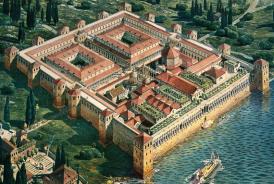
Diocletian Palace
Diocletian's Palace is among the best preserved monuments of the Roman building heritage in the world. Owing to the research ...
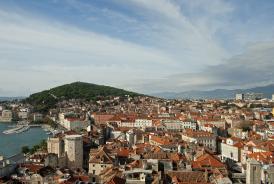
Marjan, the hill that overlooks the city has always been the most impressive part of Split imagery. Such a harmony betwwen ...

The Riva started to look the way it does today two centuries ago, when the French, in time of Napoleon ruled these parts ...

Cathedral of Saint Domnius
Among the European cathedrals the one in Split finds its seat in the oldest building - the Mausoleum of the Roman Emperor ...

About Split
- The history of Split
- Renowned citizens
- Interactive Split map
- How to reach Split
- Accommodation
- Getting around
- Tourist agencies
- Tourist guides
- Attractions
- City of culture
- City of Gastronomy
- City of natural beauty
- Cookie policy
- All activities
- Active tourism
- Rural tourism
- Cultural tourism
- Religious tourism
- Nautical tourism
- Health tourism
- Business tourism
- Gastro & Wine
- Tourist boards
- How to reach a destination
- Useful information
- Official information
- Applications
The Heart of the Adriatic
Summers last longer here. Welcome.
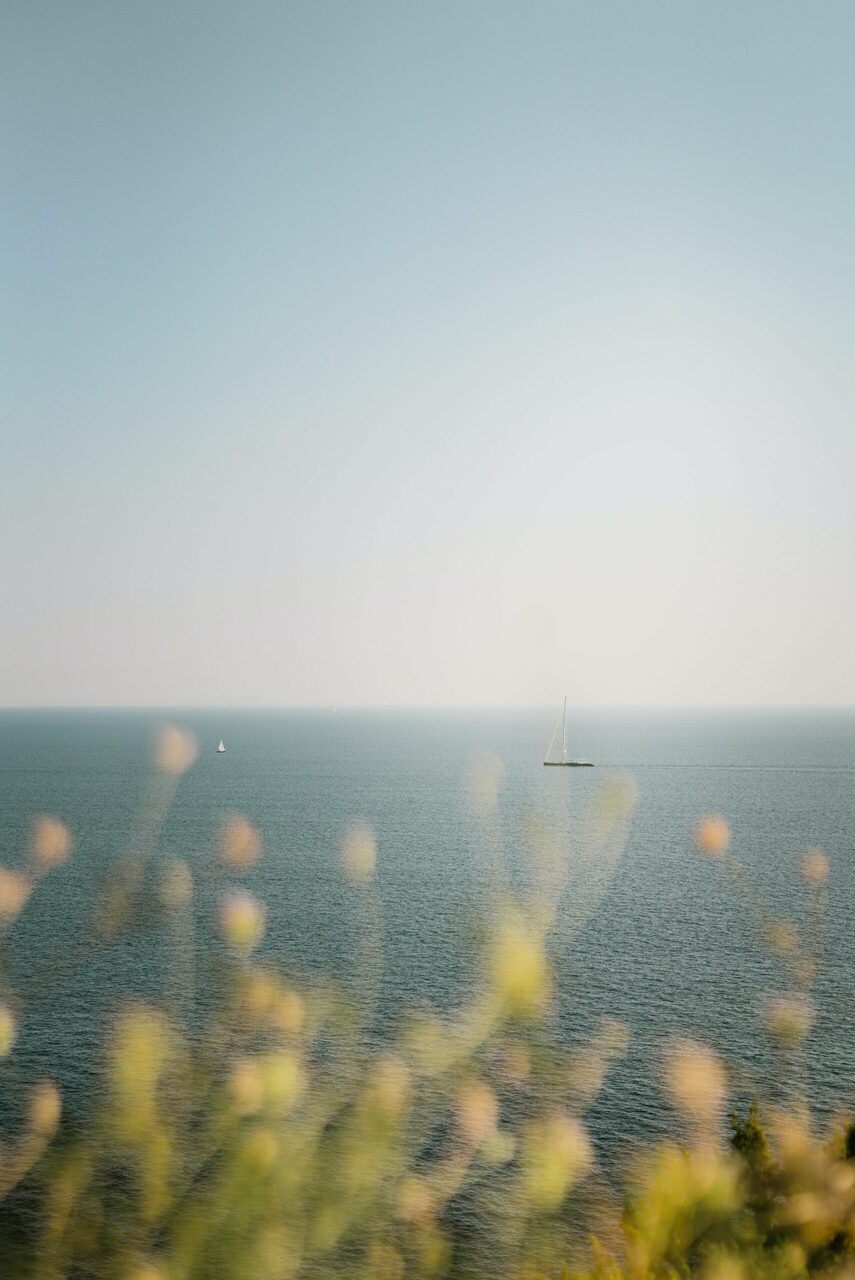
Central Dalmatia is more than just a destination – it’s a vibe. Whichever season you visit Dalmatia in, it will welcome you like royalty.
Nestled along the picturesque Adriatic coast of Croatia, Central Dalmatia beckons travelers with its enchanting blend of stunning beaches, crystal-clear waters, and rich cultural heritage.
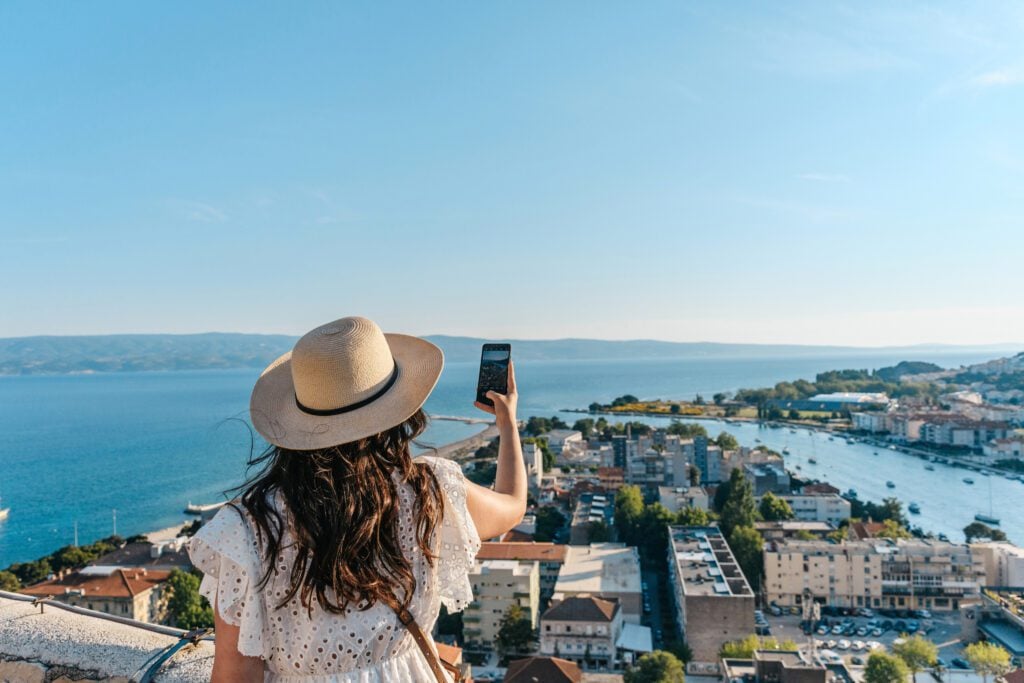
Indulge, explore &
Welcome to the land where Summer starts in April and ends in November. No matter what kind of experience you’re looking for, we have something for everyone

With its irresistible blend of history, nature and Mediterranean charm, a traveler’s paradise that will capture your heart and leave you longing for more.
Islands, islets and reefs
Croatia’s islands are a real treasure waiting to be explored. With over a thousand islands dotting the sparkling blue waters of the Adriatic Sea, each one offers a unique experience
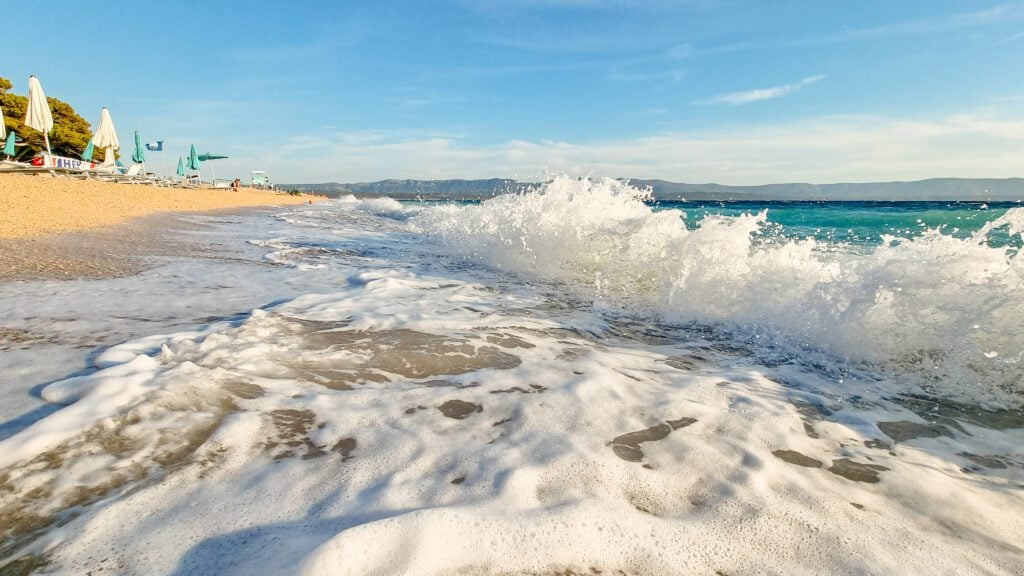
So where will you go first?
Warm and sunny weather makes Central Dalmatia a popular destination for tourists throughout the year
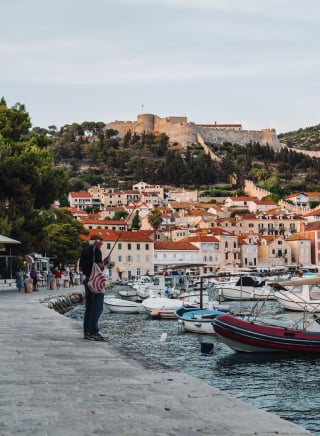
Known for its sunny Mediterranean climate, with over 2,700 hours of sunshine per year, Central Dalmatia is one of the sunniest regions in Europe.
Hours of sunshine
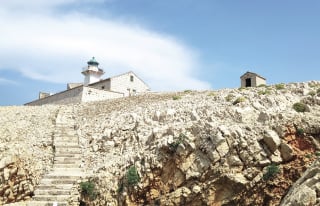
Activities for an unforgettable
In Central Dalmatia everyone will find their own piece of paradise. Peek into the true Mediterranean fairy tale region

Those passionate about heavenly beaches, adventurers who enjoy hiking, as well as those more inclined to a peaceful exploration of historical sites… Dalmatia will capture the heart of every traveller
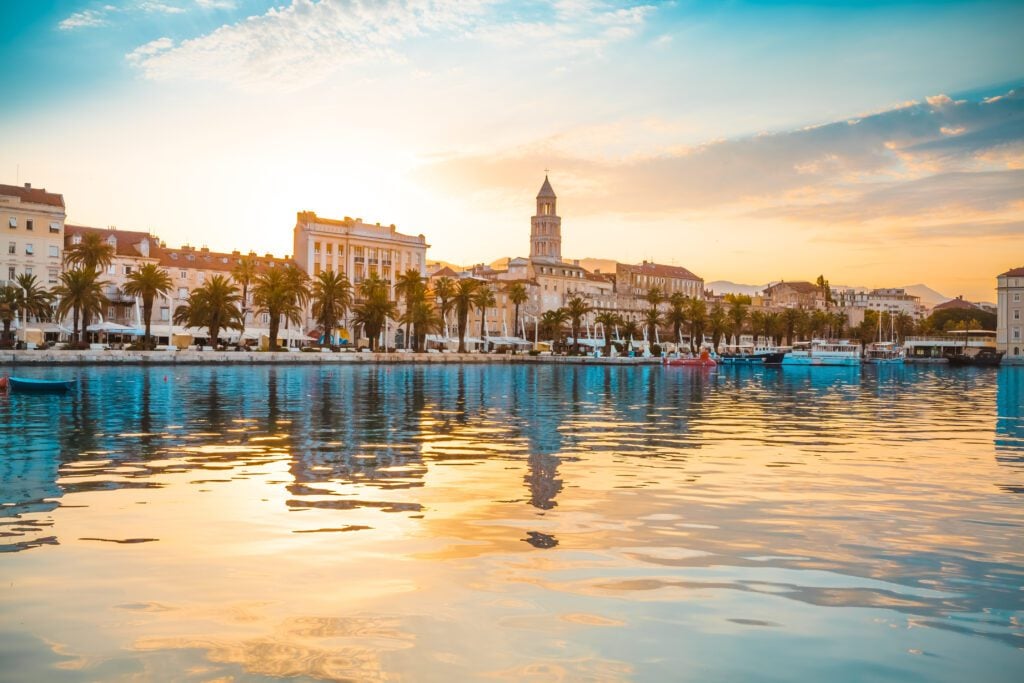
The summer of your dreams
Find out why so many fall in love with the summer vibes of Central Dalmatia.
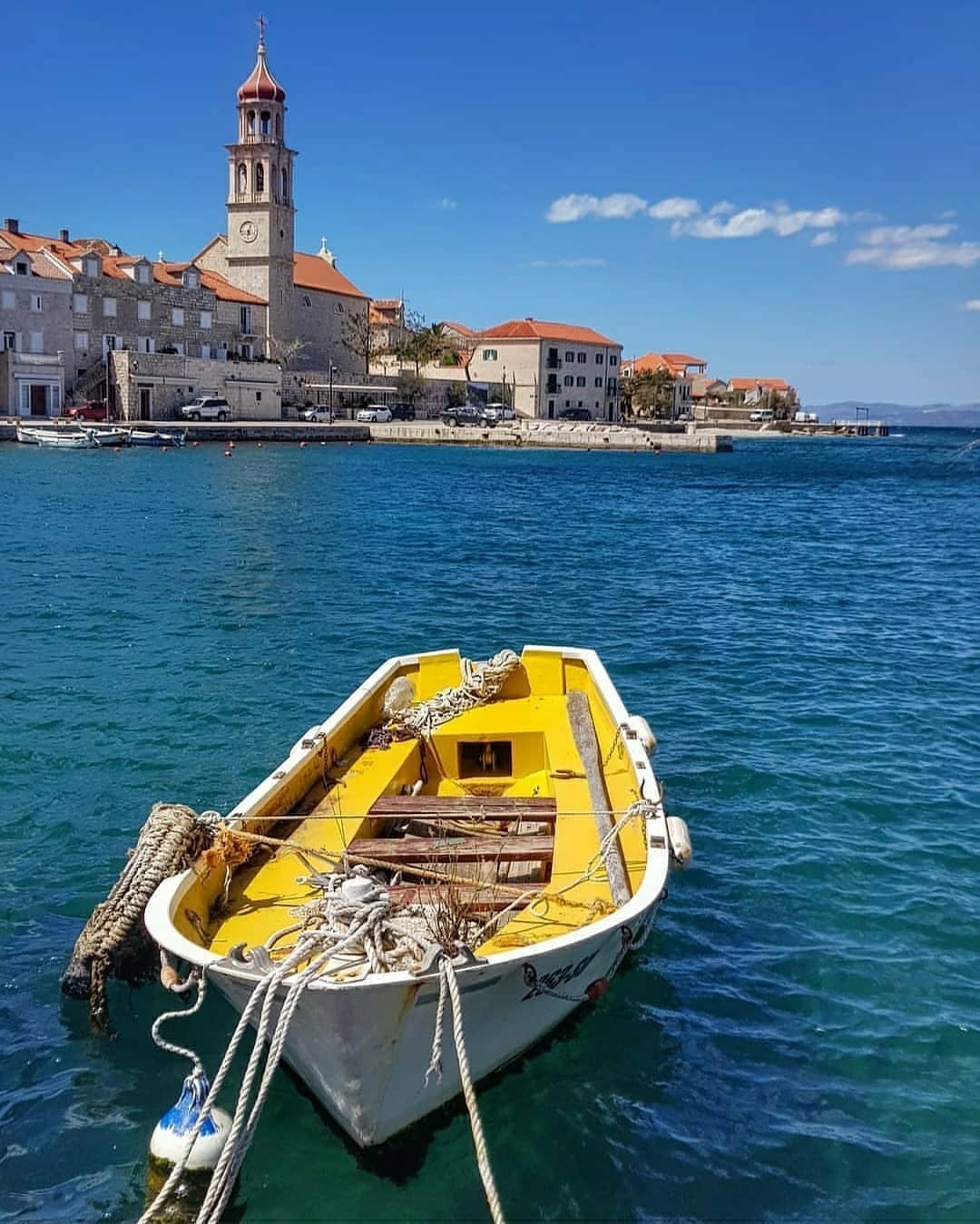
Visit us on instagram

- For accommodation owners
- Competitions
- Webcam Rovinj
- Choose your language:
to the official website of the Tourist Board of Rovinj-Rovigno
Discover Rovinj
Plan your trip
Find accommodation
Discover & Enjoy
Lorem ipsum dolor sit amet, consectetur adipiscing elit. Duis bibendum tellus a justo porttitor, at pretium lectus auctor. Etiam diam ante, tempor eu volutpat at, elementum et nibh. Cras aliquet magna ac justo dictum cursus. Maecenas in lectus sed neque tincidunt vulputate.
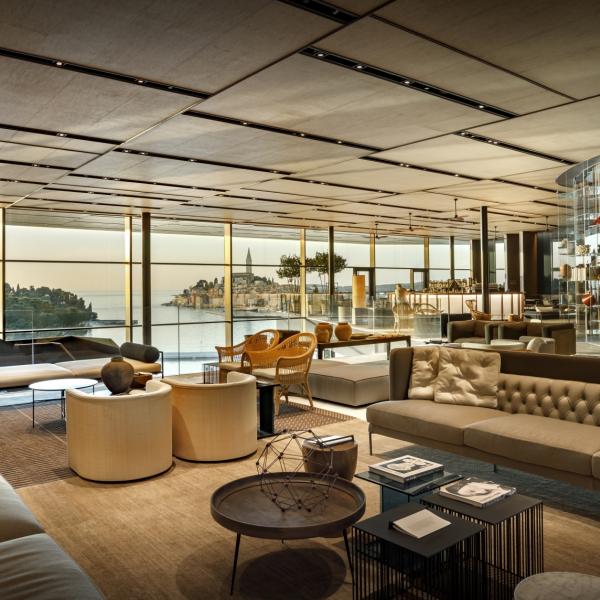
We recommend
The route of the bicycle-pedestrian path Štrika-Ferata stretches along the former railway branch Kanfanar - Rovinj. The Kanfanar-Rovinj...
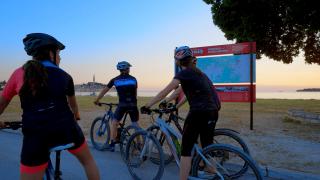
Virtual Interactive walk along...
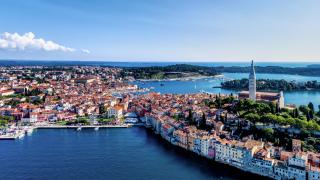
Na lokaciji sjeverna luka San Pelagio postavljen je sustav za praćenje kvalitete zraka – Smart Sense air quality sustav. ...

Do not miss
Join us if you are curious to learn about the history of Rovinj from a local guide! Departure and meeting with the guide are planned in front of the...
In the morning, on the city streets, the Rovinj Brass Band will hold a traditional Labor Day parade. From 12 o'clock, on the meadow in the...

Get your May started with a new skill and try defying gravity in an exciting way. On May 1st, Rovinj's Forest-park Golden Cape awaits you with an...

Spring edition of gourmet event On the paths of Rovinj delicacies
10.4.2024 Experience the gastronomic magic and explore the culinary wealth of Istria at the spring edition of the event On the...

eVisitor - free mobile app
31.1.2024 Ministry of Tourism and Sport has developed eVisitor, a free mobile application. The application enables to register...
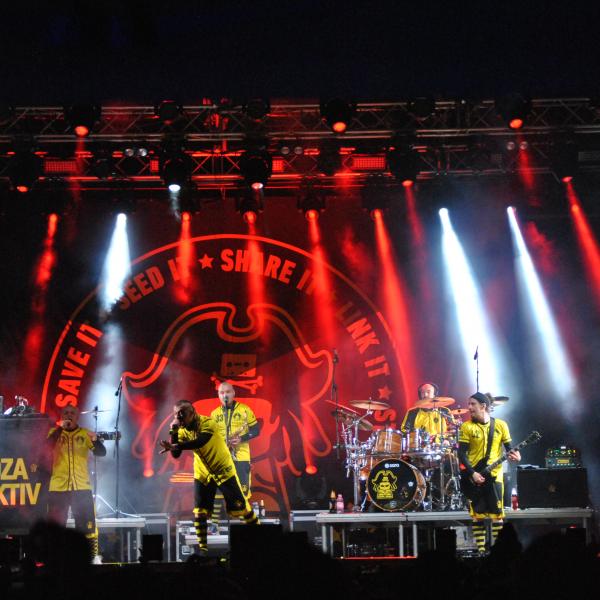
Unforgettable New Year's Eve Celebration in Rovinj
4.1.2024 This year's New Year's Eve celebration for 2024, organized by the Tourist Board of the City of Rovinj-Rovigno, took...

Golden Goat - Capra d'oro Awards 2023
20.12.2023 The grand ceremony for the annual awards of the Tourist Board of Istria for the year 2023 took place in Pula on...
Rovinj All Year Around

Look into ...
Lorem ipsum dolor sit amet, consectetur adipiscing elit. Duis bibendum tellus a justo porttitor, at pretium lectus auctor.
- International edition
- Australia edition
- Europe edition
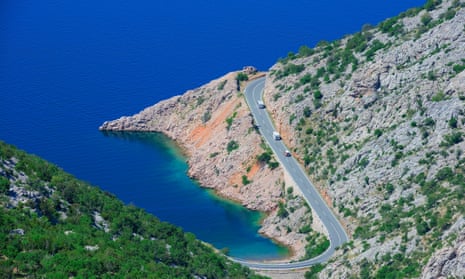
‘Slow travel at its most joyous’: our three-week road trip to Croatia
Rather than bomb down motorways for marathon stretches, the idea was to see new things along the way, such as the great lakes of Germany and a Renaissance town in Italy
H ow far would you go – and how long would you take – to avoid flying and thoroughly embrace the idea of slow travel? In my case, it was 3,167 miles over three weeks. For nearly a decade I had wanted to do a road trip to Croatia, and to get as much out of the journey as the destination itself. Rather than bomb down the motorway for marathon stretches, the idea was to slow down and see new things.
It seemed we had barely rolled off Le Shuttle (the name Eurotunnel reverted to last spring) before my husband and I were out of France and bouncing along Belgium’s bumpy motorways. After a six-hour drive, Germany’s oldest city, Trier, made a pleasant overnight stop, the reconstructed gothic Hauptmarkt square bathed in late afternoon sunlight. Its summer pop-up bar taught me that the Mosel wine region makes some very drinkable rosés.
Germany proved to be one of those places where I couldn’t stop making mental notes on things to come back and explore; and the night we spent in Munich made me wonder why I had never visited before. It wasn’t just handsome Marienplatz and its neo-gothic new town hall; the food shops and stalls on Viktualienmarkt made me seriously hungry.
Rather than stay in the old town, we picked a hotel in Werksviertel, a few S-Bahn stops away. This former industrial area is now full of container bars, sleek hotels (including ours, the Adina , which has a fabulous roof terrace), concert venues and a huge ferris wheel.
Another lovely surprise – the first of many the next day – was Chiemsee, whose waters we glimpsed from the autobahn to Austria. Bavaria’s largest lake shot up my “How on earth have I never heard of this place and can I please come back?” list.
Our entry into Italy’s snappily named Friuli-Venezia-Giulia region coincided nicely with lunchtime. Determined to avoid a dire motorway meal, we found a restaurant in tiny Tarvisio where pizzas came smothered with local San Daniele ham. Later, in Udine, we watched a beautiful Renaissance town wake from its afternoon snooze and come alive with the evening passeggiata . An aperitivo in Piazza Giacomo Matteotti, a wander under Piazza della Libertà’s porticos, and a dinner of spaghetti alle vongole is what you want after a five-hour drive. The next day, when we caught our first glimpse of the Adriatic on our way to Trieste and stopped for lunch surrounded by Habsburg stateliness, I was making more plans to return.
Our Italian interlude was so delightful I was almost sorry to whiz through Slovenia and finally into Croatia. My goal was my parents’ region of Lika, in the west of the country, above Zadar, but for once I wasn’t visiting the inland area where my family came from. When I was writing my Croatia travelogue, My Family and Other Enemies , in 2022, I lamented how – with the exception of Plitvice Lakes national park and its surroundings – much of this beautiful region is being left behind in Croatia’s tourism boom. My intention this time was to explore Lika’s western half, where tourism has more of a foothold.

It’s easy to find a bucolic bolthole in Lika’s karst mountain landscape of forests, rivers and lakes. An online trawl came up with a wooden cottage outside the village of Perušić. Named IV-AN after its genial owner from nearby Gospić, the cottage was backed by forests and fronted by farmland. The only sounds were birdsong, crickets and, come evening, sizzling meats on the barbecue. My new obsession, the Merlin Bird ID app, picked up the calls of nuthatches, nightingales, owls and shrikes.
The lane behind led to Grabovača cave park , whose Samograd cave had been on my must-see list. Unfortunately, I was recovering from a knee injury and couldn’t tackle the slippery steps. The same went for other activities that are turning Lika into a giant adventure playground – rafting and kayaking on the Gacka and Lika Rivers and Lake Krušćica, mountain biking, quad biking and even just plain old hiking. But Lika has other tricks up its sleeve.
One of the most captivating is in the village of Kuterevo, about 45 minutes’ drive from our cottage. Since 2002, the Bear Refuge has been looking after orphaned brown bears whose mothers had been killed, or who had been rescued from illegal zoos, all kept in spacious enclosures. It’s free to enter, but volunteer wardens are happy to take donations. When it’s hot, the bears lurk in the shade, but on this rainy morning they were all ambling about. The most poignant was Bruno, who arrived in 2019 from an illegal zoo, and he still hasn’t lost his captivity habit of pacing back and forth.

Apart from Plitvice, Lika’s other claim to fame is the birthplace of Serbian-American inventor Nikola Tesla, whose village of Smiljan has spawned a mini-industry. At the Memorial Center Nikola Tesla you don’t have to be a science buff to enjoy the demonstration of the Tesla coil, the film about the inventor’s life, or the exhibits in the house where he was born – beside the 1765 church where Tesla’s father was parish priest.
Smiljan is only three miles from Lika’s county seat, Gospić, and its Lika Museum , housed in an attractive 18th-century building. Among the medieval artefacts and Habsburg furniture is a really good art gallery with an exhibition of early 20th-century photographs. Those photos had me spellbound: my paternal grandfather was Gospić’s railway stationmaster briefly, until his untimely death in 1933, and this gave me a glimpse into his world.
after newsletter promotion
Western Lika’s other major town is Otočac, in the Gacka valley, the focus of much of the area’s outdoor pursuits. Most of the River Gacka is below ground, but what can be seen in this broad valley is serenely beautiful, shaded by trees and full of brown trout. If I couldn’t go kayaking, at least I could find a riverside restaurant – Bistro Ribić and Bumerang were particularly good – and we feasted on two whole grilled trout for €12.
Two of the three major sources that feed into the Gacka are only a few miles apart, both wondrous little watery worlds. At Majerovo Vrilo, old restored mill houses (one still milling flour) form a bridge across the mini rapids; behind them the clear water lay still and blue, with reeds and lily pads adding touches of green to match the forested hills behind. A handful of wooden houses overlook this idyllic spot, and I envied their occupants on their waterside terraces. It was a similar sight at Tonkovićevo Vrilo, where more of this sparkling water was burbling under wooden bridges.

In a region that still shows traces of war and continues to lose its young people to emigration, it was pleasing to see hikers, cyclists, anglers and kayakers enjoying this vast landscape. And one young man was there to keep Lika’s spirit flowing, literally. Ivan Vlainić, 31, is bucking the trend for leaving the countryside, having moved from Zagreb to become the fifth generation to run the family brandy business, Stilanova Lika .
“More young people like me have realised that we can make a living here,” he told me during a tasting of his smooth brandies in the restored family house outside Perušić.
Soon, however, we were leaving Lika to meander along the Istrian coast back towards Italy and a last-minute decision to visit Venice. That night, our simple one-star hotel on Italy’s Lake Iseo astonished us with its five-star view of the sun setting on Monte Isola. A few days in the French Alps and a final night in Burgundy rounded off our road trip. My brain was a jumble of languages, my phone overflowing with photos. It was slow travel at its most joyous, and worth the wait.
Travel from Folkestone to Calais was provided by Le Shuttle (crossings from £87 each way). Seven nights’ self-catering at IV-AN cost £ 600 . Adina Apartment hotel in Munich has self-catering apartments from € 152 a night. Hotel Allegria in Udine has doubles from € 139 B&B . Mary Novakovich’s My Family and Other Enemie s: Life and Travels in Croatia’s Hinterland (Bradt Travel Guides, £9.99) is available from guardianbookshop.com
- Croatia holidays
- Europe holidays
- Italy holidays
- Germany holidays
- Green travel
Most viewed

Zadar is the main city in North Dalmatia , with about 75,000 inhabitants. Most famous for its Old Town, set in a peninsula that is completely pedestrianised, the town has numerous Roman and other wonderful sights – some rather modern – and is a delight to visit.
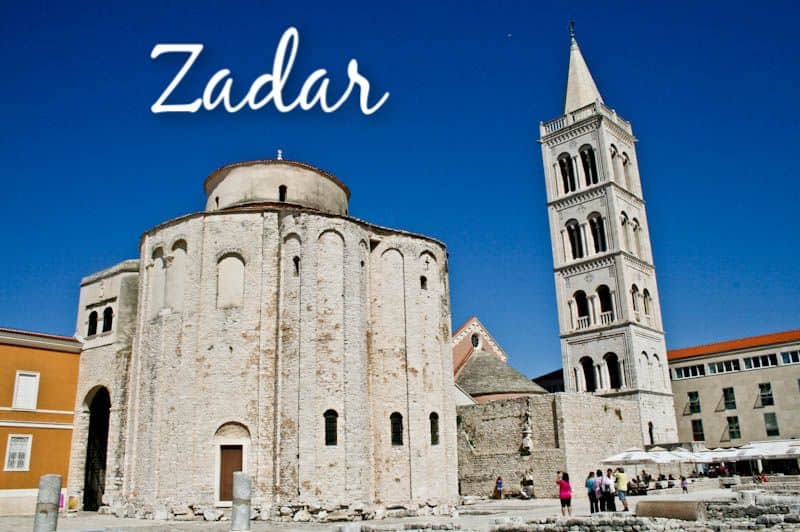
The town is also very easy to reach , whether flying in from elsewhere in Europe (it has its own airport) or by bus from other destinations in Croatia. There are also internal flights to the town’s airport from other places in Croatia.
Zadar is perhaps sometimes overlooked as a place to visit in Croatia, possibly because it is slightly out of the way of the delights further south in Dalmatia. However, it really is a charming town and you won’t regret spending some time here. Why not start your holiday here before heading further down the coast? It’s also a very suitable base for day trips to locations such as Plitvice Lakes , the Kornati islands or Krka National Park .
Read up more on the town, how to get there and what to see in our guide below.
Guide to Zadar
- History What a fascinating history this town has – with rule by the Romans, Venetians and others over the years
- Zadar Airport Advice on how best to travel to and from the airport, car hire, ATMs, money exchange and more
- Getting to Zadar With great transport connections, find out how to get there from other parts of Croatia by bus, train, plane and ferry, as well as details of international flights and ferry services.
- Sightseeing What to see and do in the town
- Eating and Drinking in Zadar Some of the best places for food and fun!
- Day Trips from Zadar Information on where to visit and how – including the National Parks of Plitvice, Krka and Kornati, plus Dugi Otok, Pag island and more
- Two Days in Zadar Follow our itinerary for how best to spend 48 hours in this gorgeous town
- Map of Zadar
- Zadar Photos
Accommodation
Please see our Accommodation in Zadar section for details of hotels and boutique hotels (there’s a wide range), and private accommodation options in the town.
Additional info
- The area code is 023.
- The Tourist Office is at Mihovila Klaića 1 (right by Narodni trg), Tel:+385 (0)23 316 166, Email: [email protected]
- For more information, check out the Tourist Office website , or the official website of the Zadar Riviera
More on Visit Croatia
About Visit Croatia
Contact Visit Croatia
Buy us a coffee!
Cookie Policy
Privacy Policy
Updated daily
New & Updated on Visit Croatia
Bol Porec Two Days in Zagreb Slano Museums in Dubrovnik How to do Croatia on a Budget Two Days in Split Nin Campsites in Croatia Shopping in Zagreb City Break in Croatia Two Days in Pula Family Holidays in Croatia 15 Things You May Not Know About Croatia Two Days in Zadar Koprivnica
Useful information on Croatia
Money in Croatia Visa Requirements for Croatia Buses in Croatia Ferries in Croatia Top Ten Destinations in Croatia Map of Croatia About Croatia
UN Tourism | Bringing the world closer
Share this content.
- Share this article on facebook
- Share this article on twitter
- Share this article on linkedin
UN Tourism and Croatia to Establish Research Centre for Sustainable Tourism
- 12 Apr 2024
UN Tourism is to work with the Government Croatia and the University of Zagreb to establish a research and development centre focused on sustainable tourism.
Croatia currently serves on UN Tourism’s Committee on Tourism and Sustainability, having chaired it between 2019 and 2023. Alongside the Government’s record of promoting responsible and sustainable tourism practices, this clear leadership and support for UN Tourism’s core values make it the ideal location to host a collaborative platform to drive innovation and catalyse positive change in the tourism sector.
Croatia leads by example in growing tourism in a sustainable manner
This landmark centre will engage stakeholders from the public and private sectors, academia, and civil society to will address some of the most critical challenges facing tourism, including:
- Reducing the Environmental Impact of Tourism: The centre will prioritize initiatives to minimize waste generation and plastic usage, thereby mitigating the environmental footprint of tourism activities.
- Increasing Usage of Renewable Energy and Energy Efficiency: By promoting the adoption of renewable energy sources and implementing energy-efficient practices, the centre aims to reduce carbon emissions associated with tourism operations.
- Accelerating Adaptation to Climate Change: Recognizing the urgent need to address climate-related risks, the centre will support adaptation strategies to enhance the resilience of tourism destinations and communities.
- Preserving Social Sustainability and Local Communities: The centre will work to safeguard the cultural heritage and livelihoods of local communities by promoting responsible tourism practices and equitable distribution of benefits.
- Enhancing Evidence-Based Policy Making: Through rigorous research and data analysis, the centre will provide policymakers with the evidence needed to formulate effective policies that balance tourism development with environmental and social considerations.
- Providing Relevant and Updated Research: The centre will serve as a hub for cutting-edge research and knowledge exchange, delivering timely insights and best practices for the sustainable development of tourism.
In Zagreb, the Minister of Tourism and Sport of Croatia Nikolina Brnjac and UN Tourism Secretary-General Zurab Pololikashvili signed a Memorandum of Understanding to create the cutting-edge research institution.
Welcoming the collaboration, Secretary-General Pololikashvili said: “Croatia leads by example in growing tourism in a sustainable manner. The new research centre in Zagreb will contribute to UN Tourism’s commitment to data-driven policymaking at the regional, national and destination level, ensuring tourism grows responsibly and inclusively, for the benefit of communities everywhere.”
Minister of Tourism and Sport of Croatia Nikolina Brnjac adds: “I am proud that UN Tourism, the most relevant tourism organization globally, has recognized our efforts in Croatian tourism management reform and our strong commitment to sustainable tourism and put forward the initiative to create the first UN Tourism Centre for sustainable tourism in Croatia together with the Ministry of Tourism and Sport of the Republic of Croatia. With the University of Zagreb as a partner in the establishment of this Centre, I am convinced that this Centre will be successful and provide very relevant research for future sustainable development of tourism.”
Related Links:
- Download News Release on PDF
- UN Tourism: Regional Department for Europe
- Transforming Tourism for Climate Action
- Sustainable tourism development
Related Content
Un tourism and hotelschool the hague to drive innovatio..., european committee of the regions and un tourism break ..., un tourism launches tourism investment guidelines for a..., un tourism members advance agenda for europe as region ....
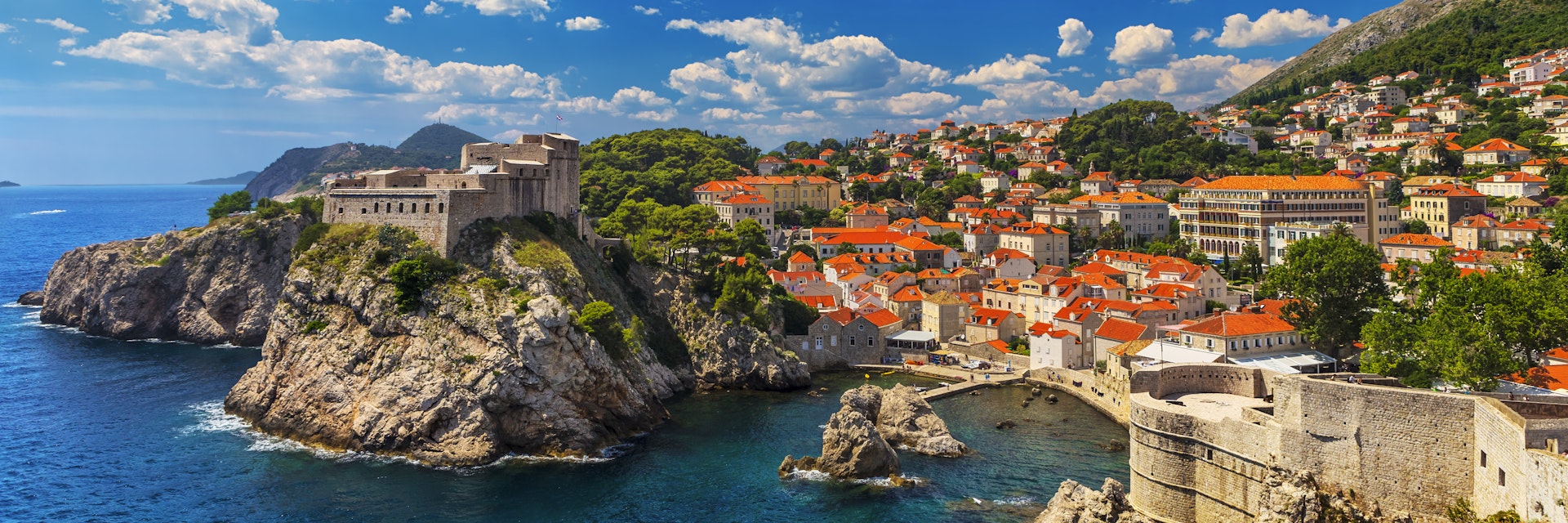
©WitR/Getty Images
A sense of awe will descend when you see the beauty of Dubrovnik's old town, with its ancient city walls, baroque buildings and the shimmer of the Adriatic.
Best Time to Visit
Best things to do, leave the planning to a local expert.
Experience the real Dubrovnik. Let a local expert handle the planning for you.
Attractions
Must-see attractions.
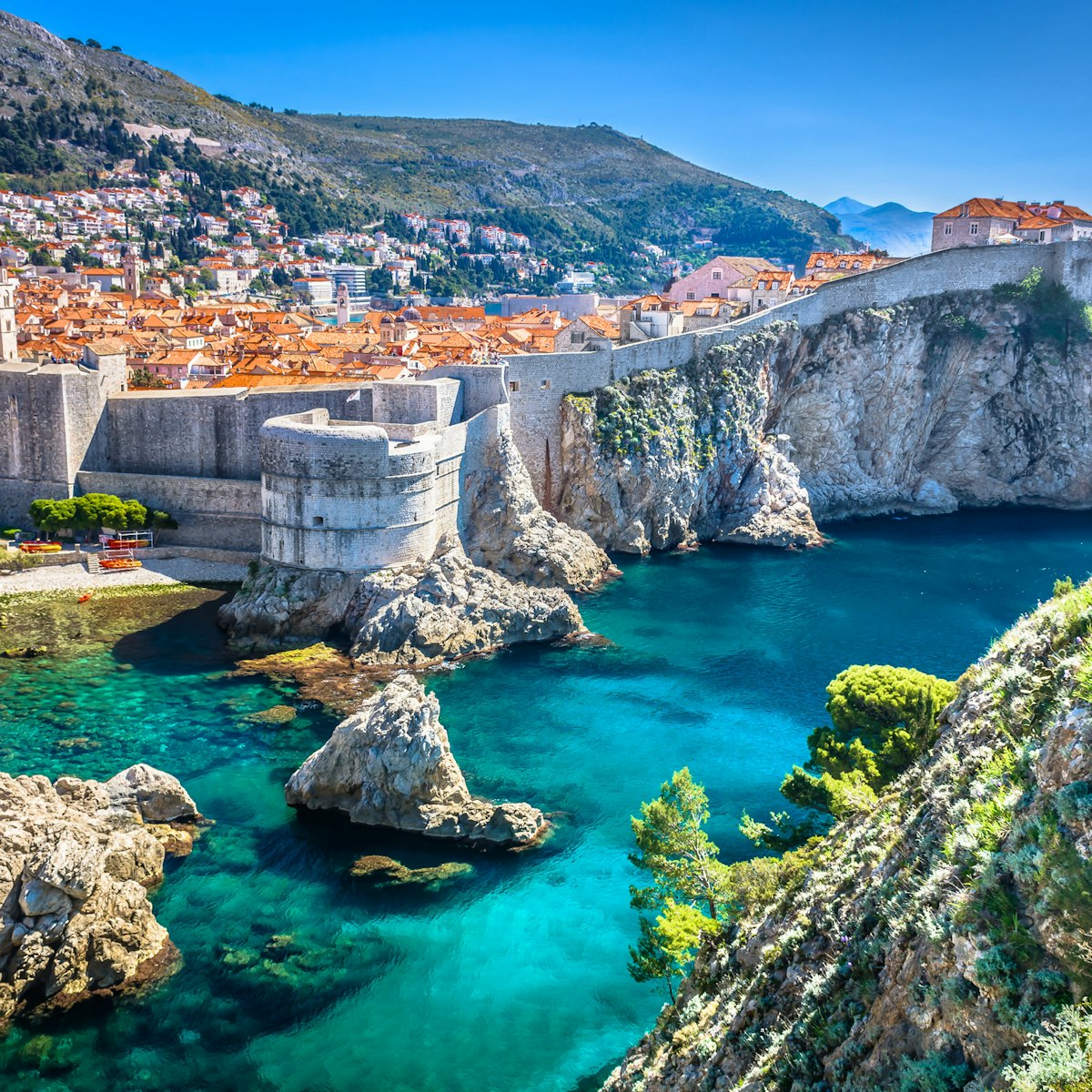
City Walls & Forts
No visit to Dubrovnik is complete without a walk around the spectacular city walls that encircle its historic core. They're among the finest in the world…
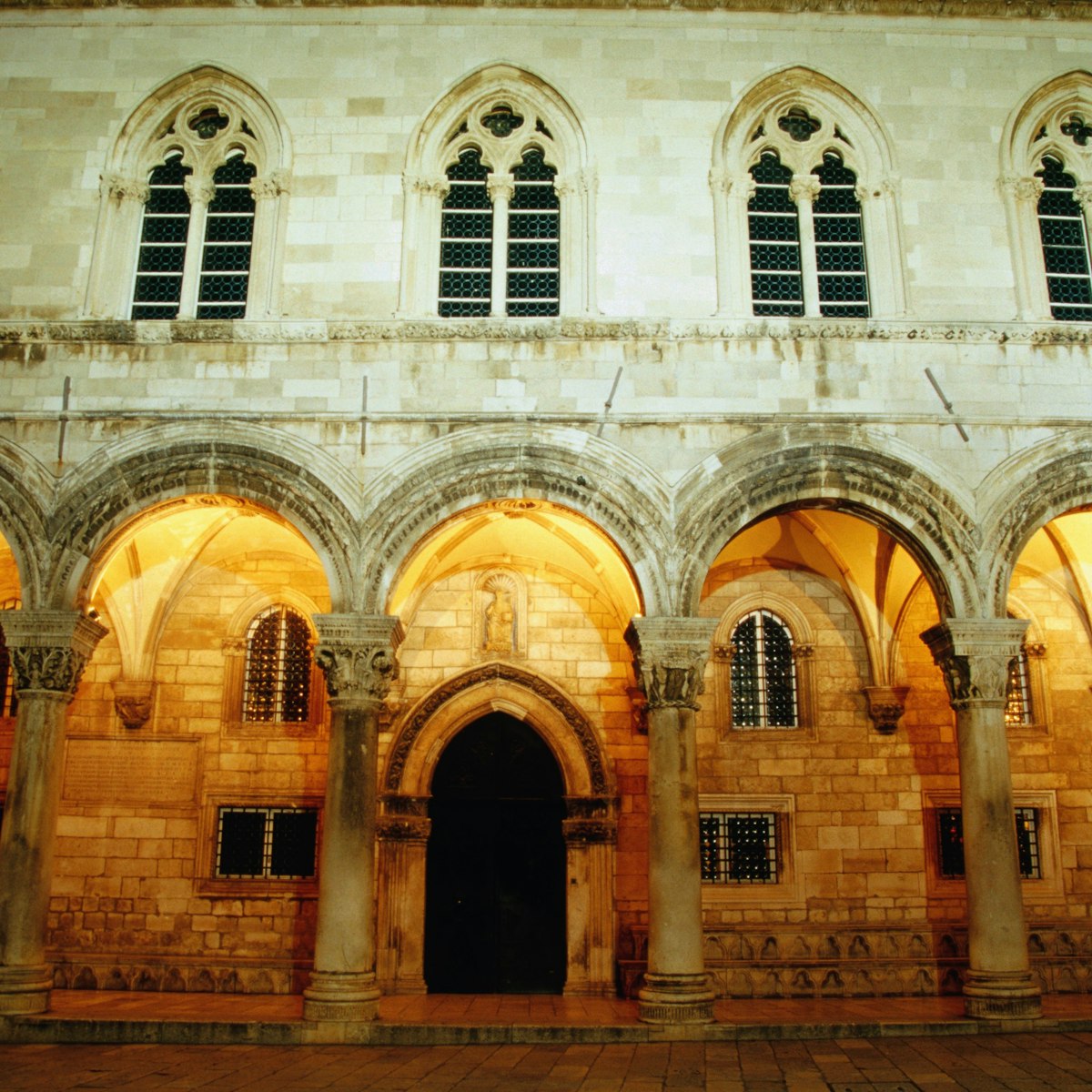
Rector’s Palace
Built in the late 15th century for the elected rector who governed Dubrovnik, this Gothic-Renaissance palace contains the rector’s office and private…

War Photo Limited
An immensely powerful experience, this gallery features compelling exhibitions curated by New Zealand photojournalist Wade Goddard, who worked in the…

From the top of this 412m-high hill, Dubrovnik's old town looks even more surreal than usual – like a scale model of itself or an illustration on a page…
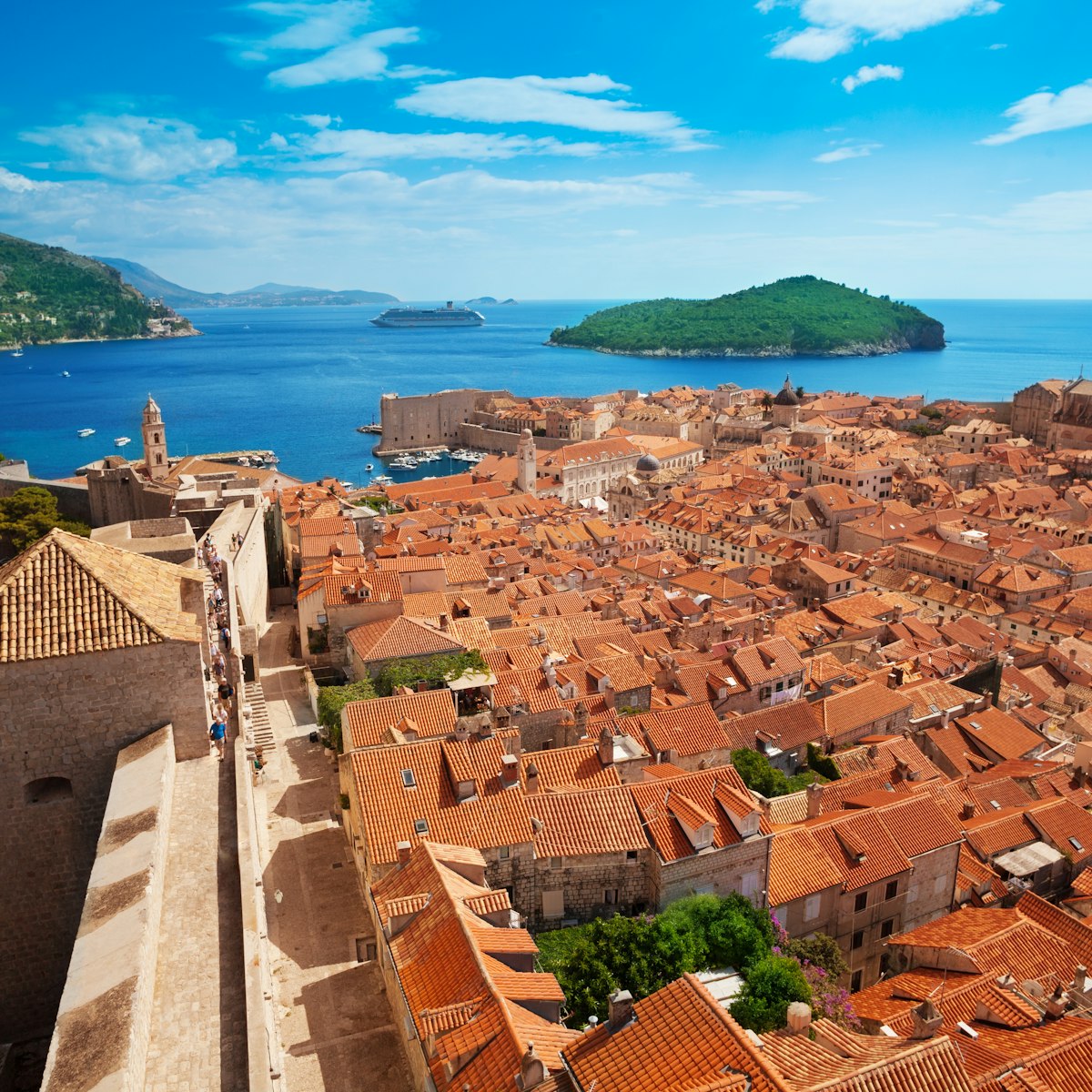
Lush Lokrum is a beautiful, forested island full of holm oaks, black ash, pines and olive trees, only a 10-minute ferry ride from Dubrovnik's Old Harbour…
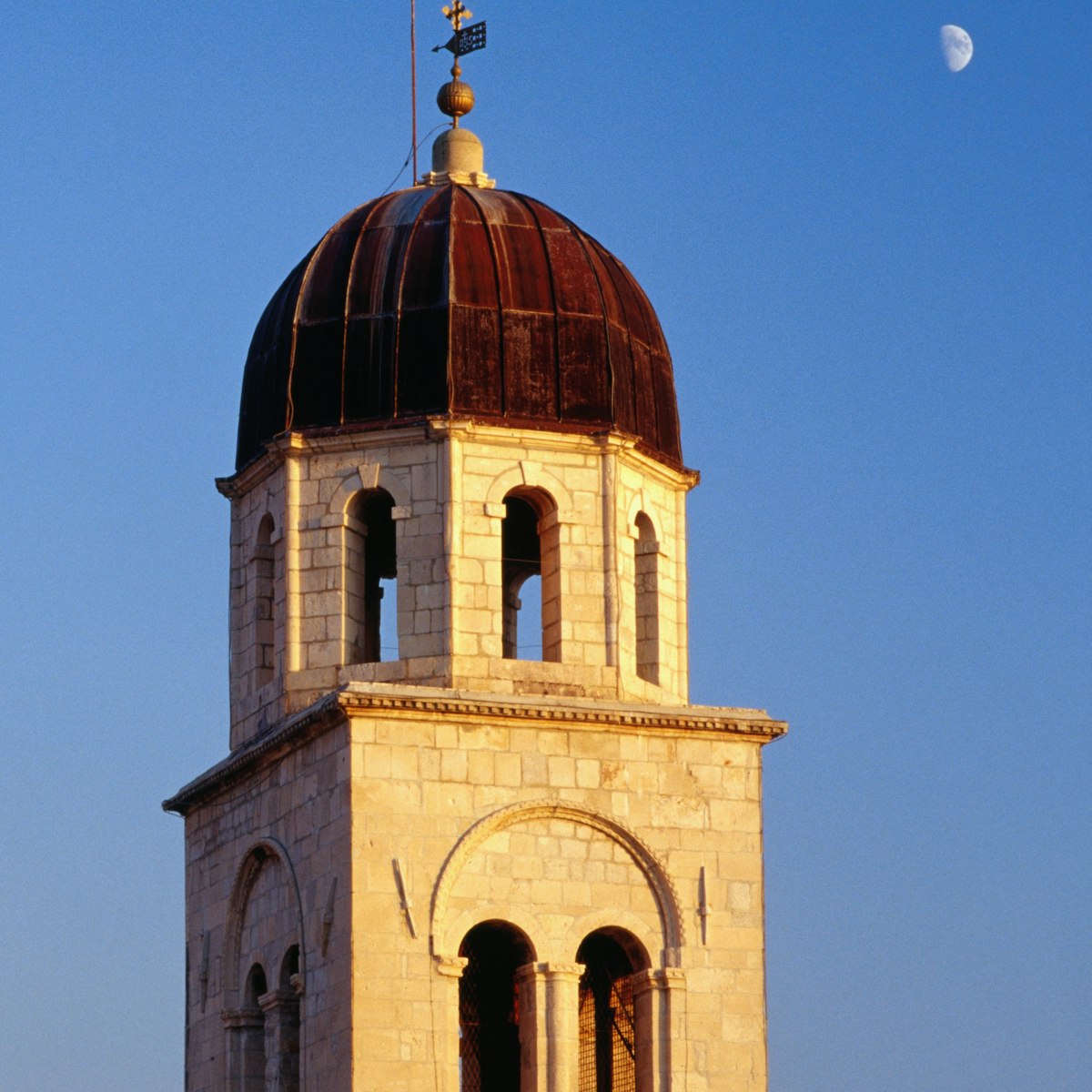
Franciscan Monastery & Museum
Within this monastery's solid stone walls are a gorgeous mid-14th-century cloister, a historic pharmacy and a small museum with a collection of relics and…
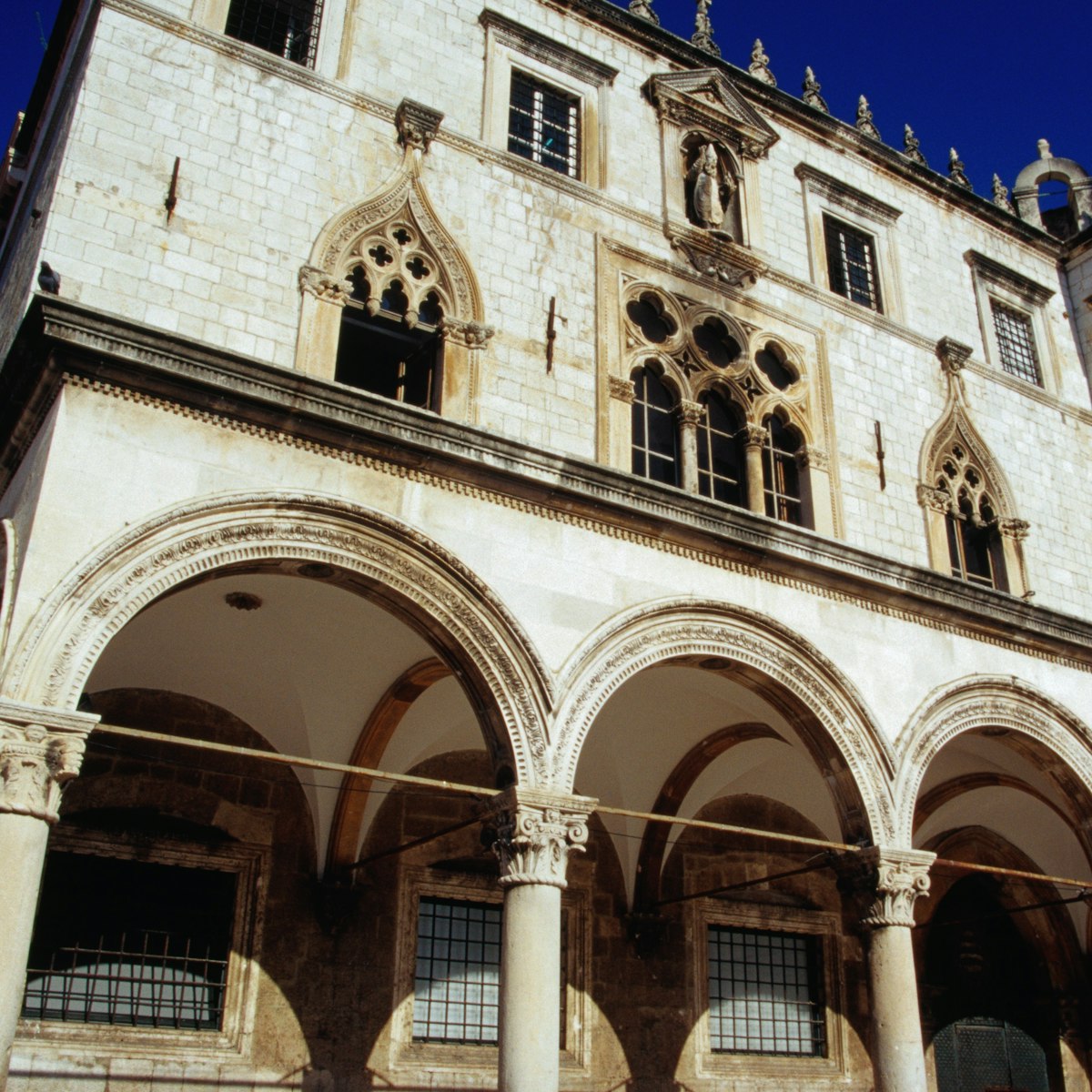
Sponza Palace
One of the few buildings in the old town to survive the 1667 earthquake, the Sponza Palace was built from 1516 to 1522 as a customs house, and it has…
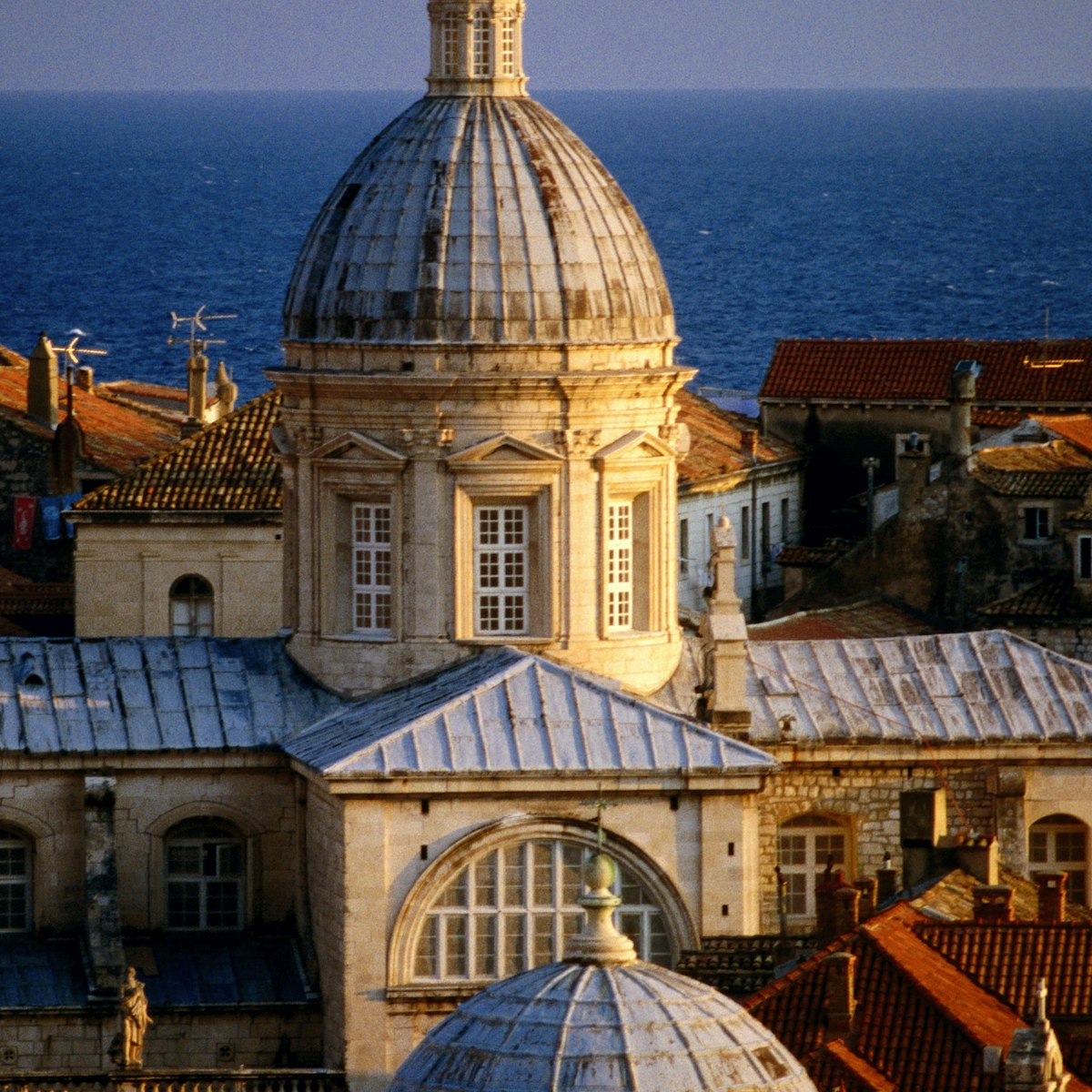
Cathedral of the Assumption
Built on the site of a 7th-century basilica, Dubrovnik's original cathedral was enlarged in the 12th century, supposedly funded by a gift from England’s…
Top picks from our travel experts
The 15 best things to do in dubrovnik.

Gradska kavana Arsenal
Locals come here to gossip about the news of the day or for business meetings, while travellers come for the location and the views. Chandeliers…
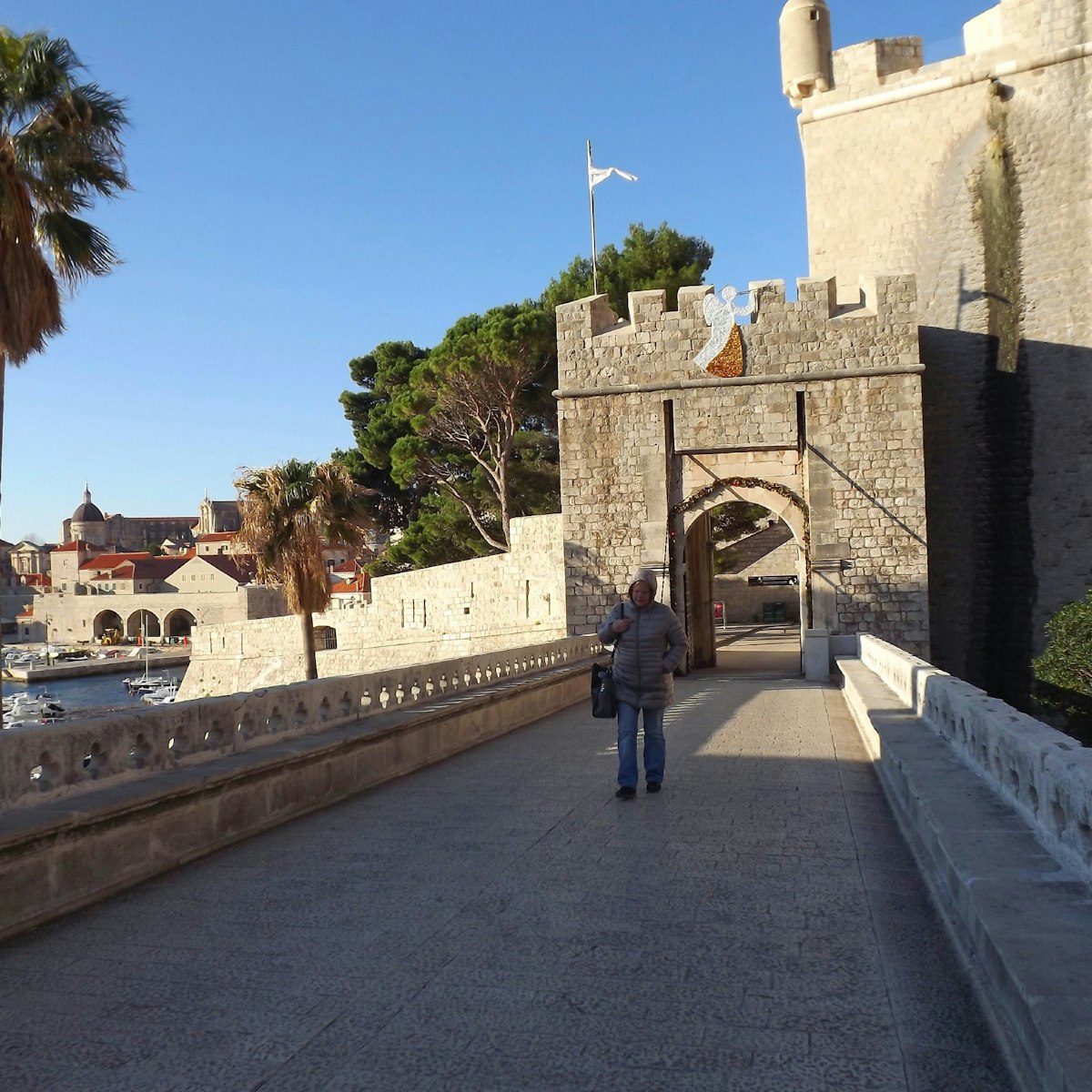
Less ornamented than the Pile Gate at the other side of town, Dubrovnik's eastern entrance is approached by a stone bridge followed by a wooden drawbridge…
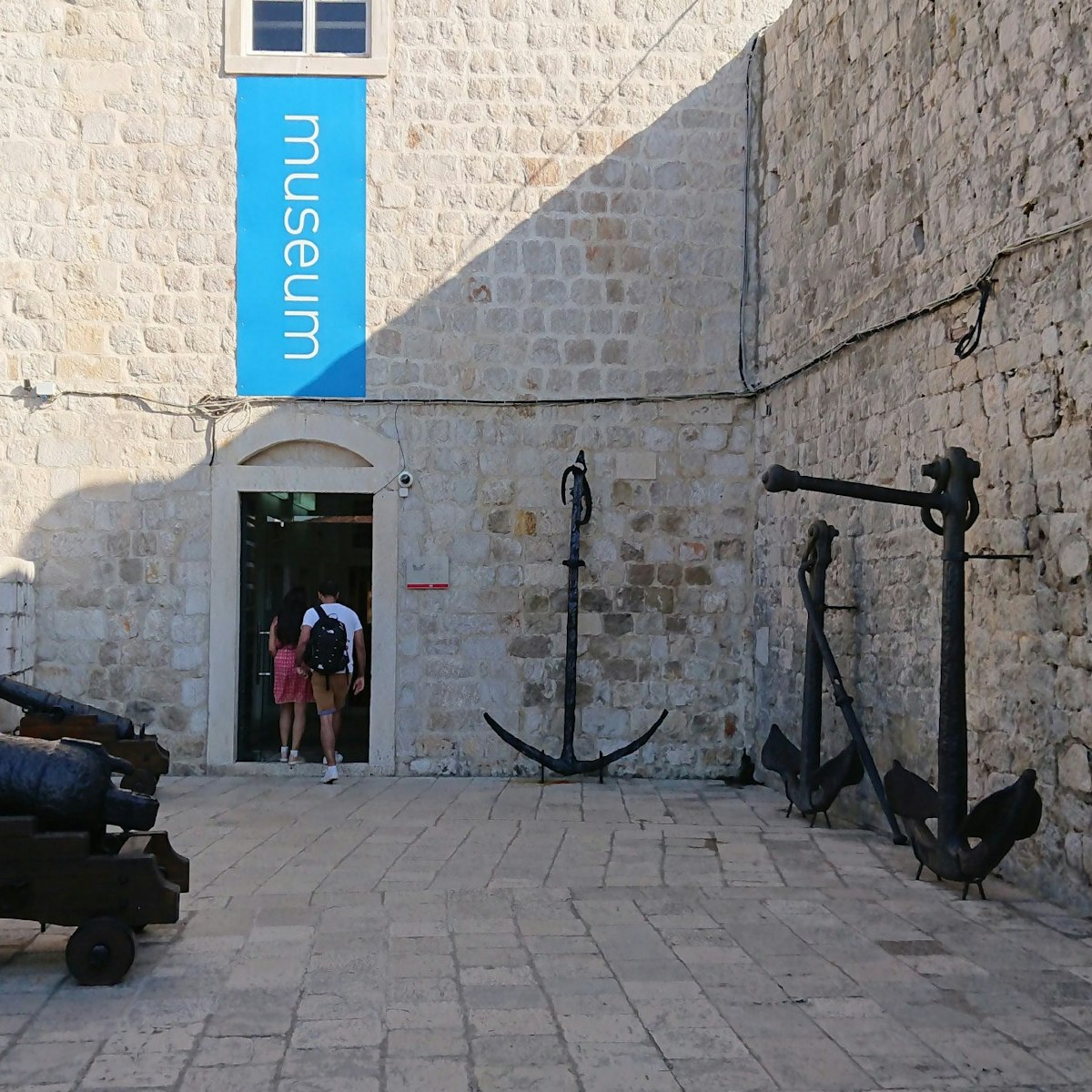
Maritime Museum
Inside the vaulted chambers of Fort St John, this well-presented museum traces the history of navigation in Dubrovnik with ship models, maritime objects…

Finding this ramshackle bar-on-a-cliff feels like a real discovery as you duck and dive around the city walls and finally see the entrance tunnel. However…
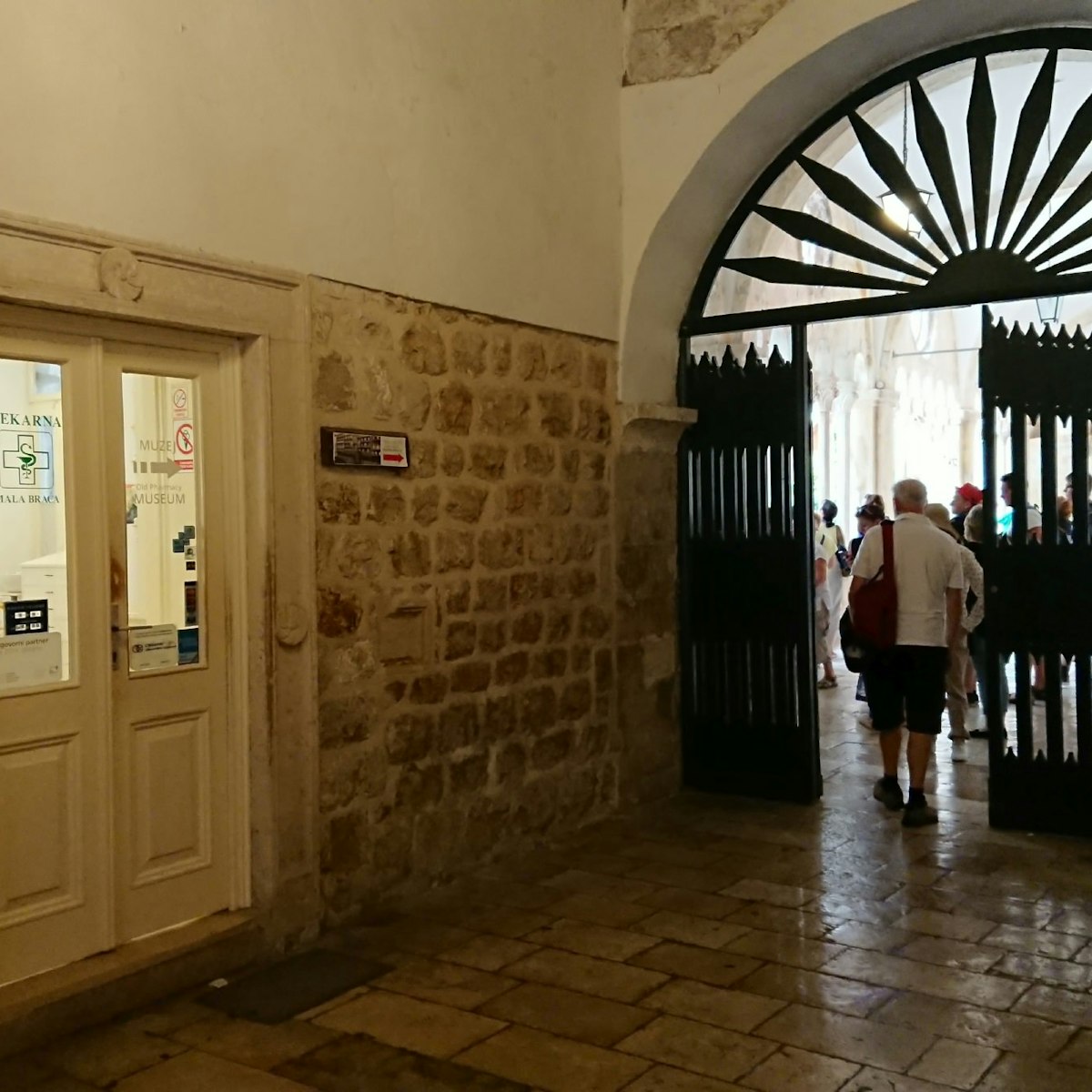
Franciscan Pharmacy
Call into the Franciscan monastery for the novelty of shopping at the third-oldest still-functioning pharmacy in Europe. It's been in business since 1317…
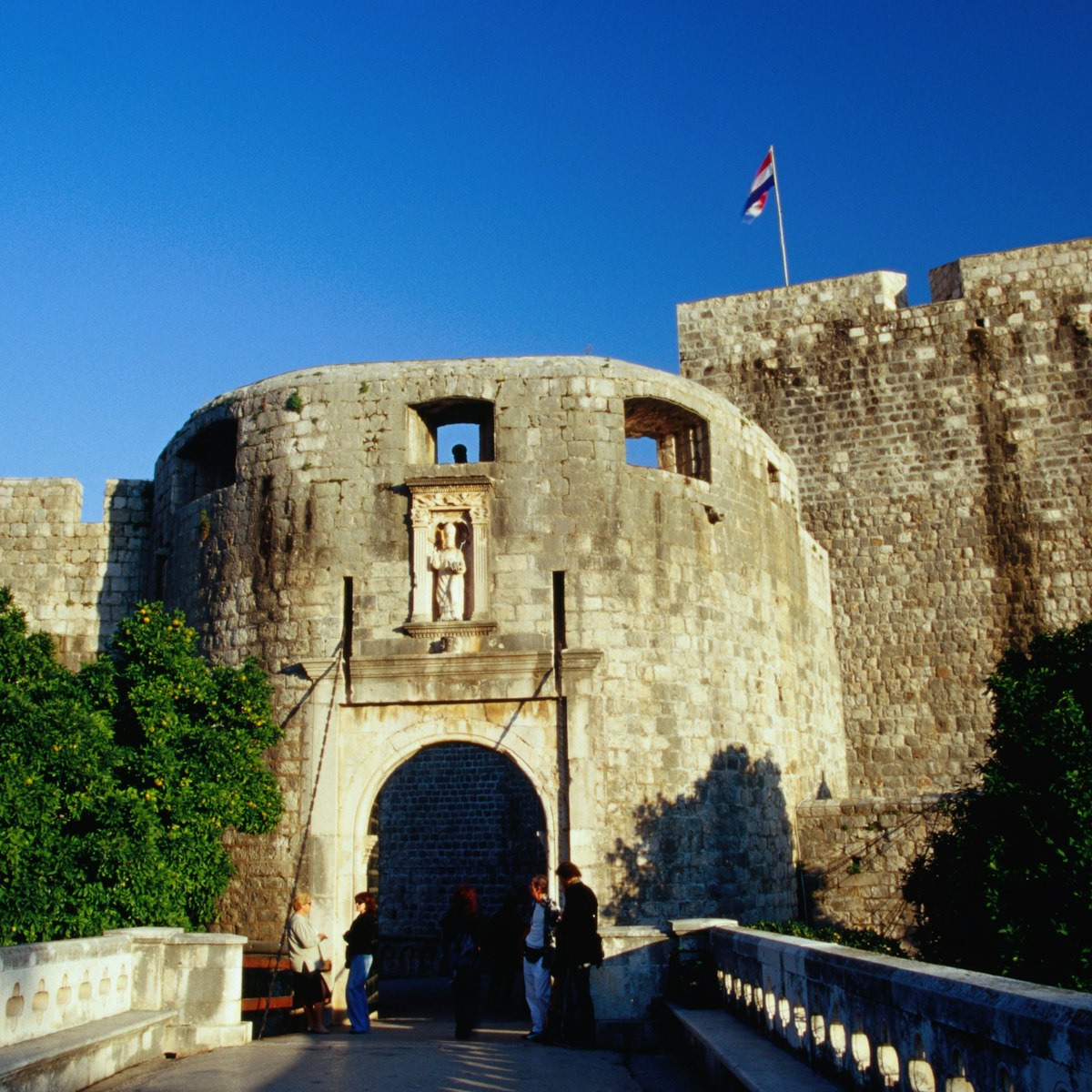
The natural starting point to any visit to Dubrovnik is this imposing city gate, built in 1537. While crossing the drawbridge, imagine that this was once…
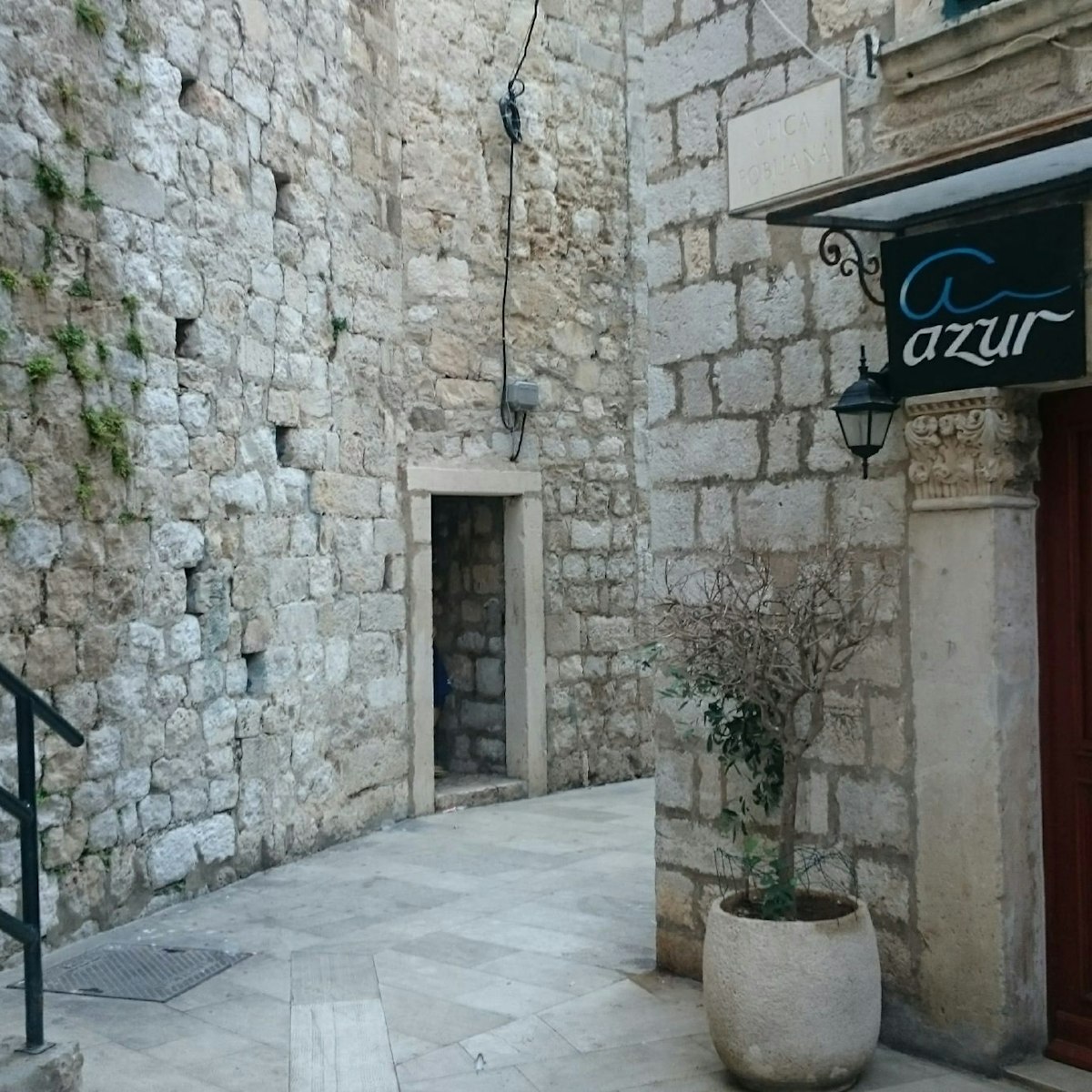
Bard Mala Buža
The more upmarket and slick of two cliff bars pressed up against the seaward side of the city walls. This one is lower on the rocks and has a shaded…

Showcasing flora and fauna of the Adriatic Sea, Dubrovnik's aquarium might be modest in content and overpriced, but set in the cool stone vaults of Fort…
11 of the best free things to do in Dubrovnik
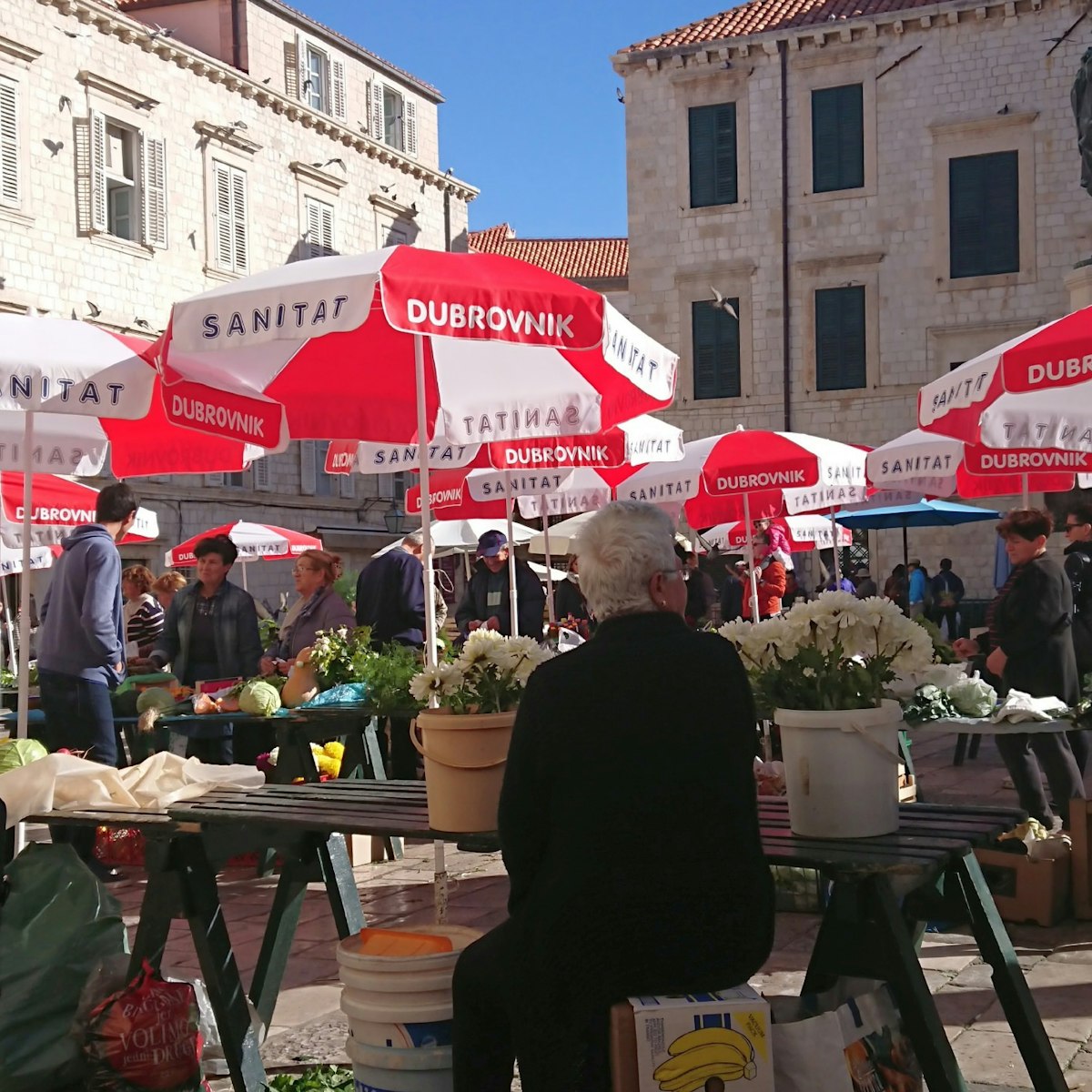
Grad Market
Stallholders sell mainly produce, local artisanal products and crafts at this open-air market. In summer traditional craft sellers stick around until late…

Memorial Room of the Dubrovnik Defenders
Just inside the entrance of the Sponza Palace, this room displays a heartbreaking collection of portraits of young people who perished between 1991 and…
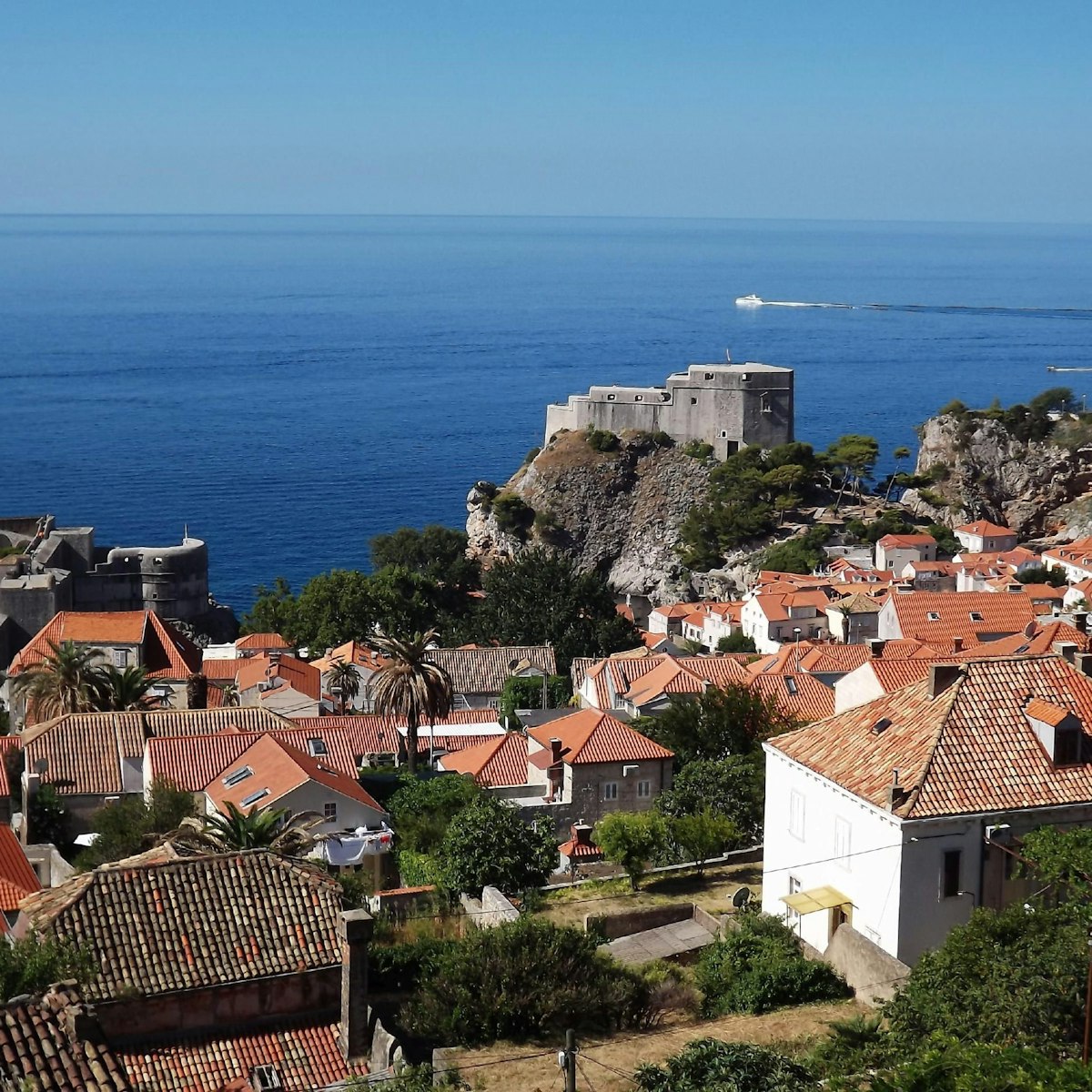
Fort Lawrence
St Blaise gazes down from the walls of this large free-standing fortress, constructed atop a 37m-high promontory adjacent to the old town. Built to guard…

St Ignatius of Loyola Church
Dramatically poised at the top of a broad flight of stairs, this Jesuit church was built in the baroque style between 1699 and 1725. Inside, magnificent…
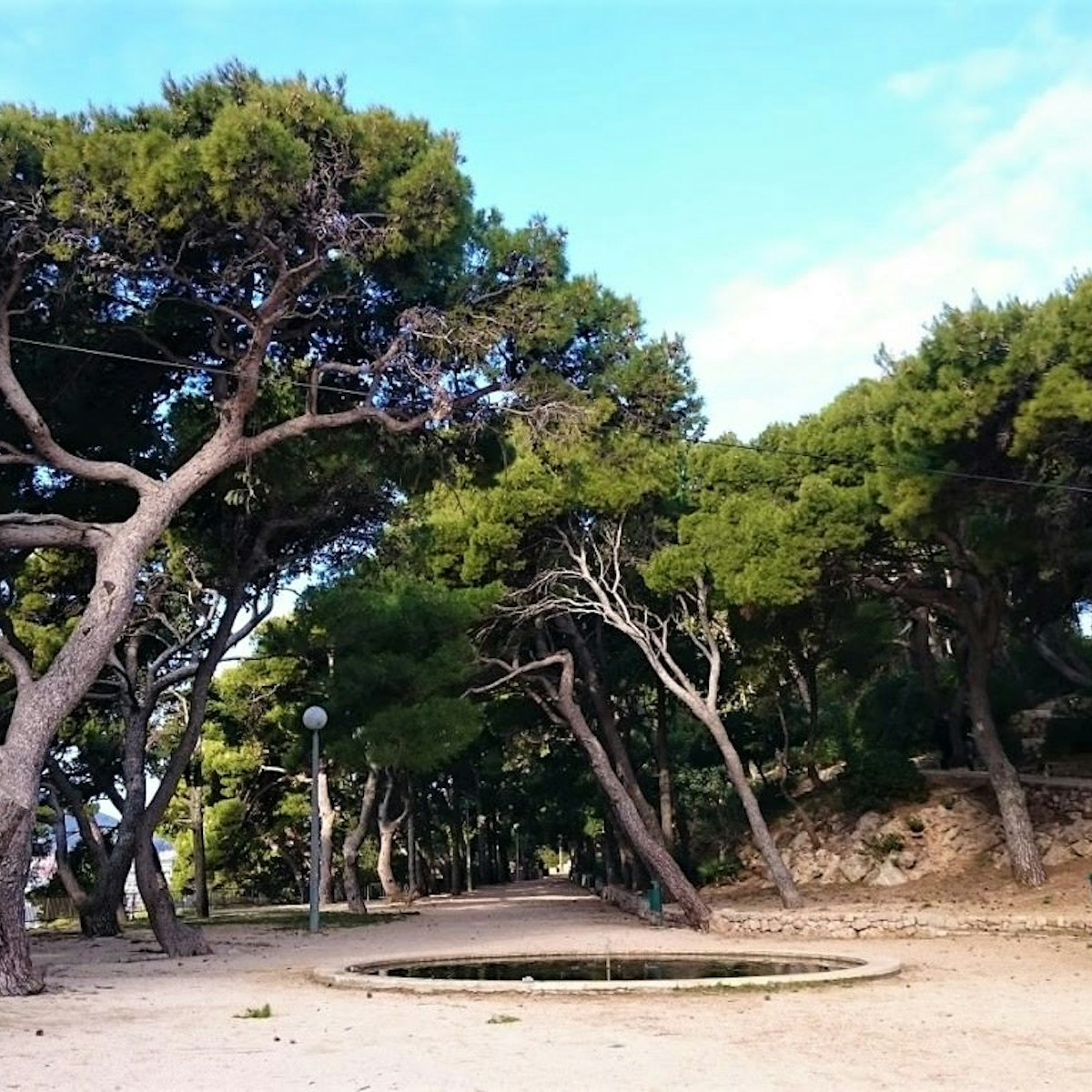
Gradac Park
If the old town gets too busy or too hot, this little hidden park provides shady seclusion. There's rarely more than a handful of locals here, along with…
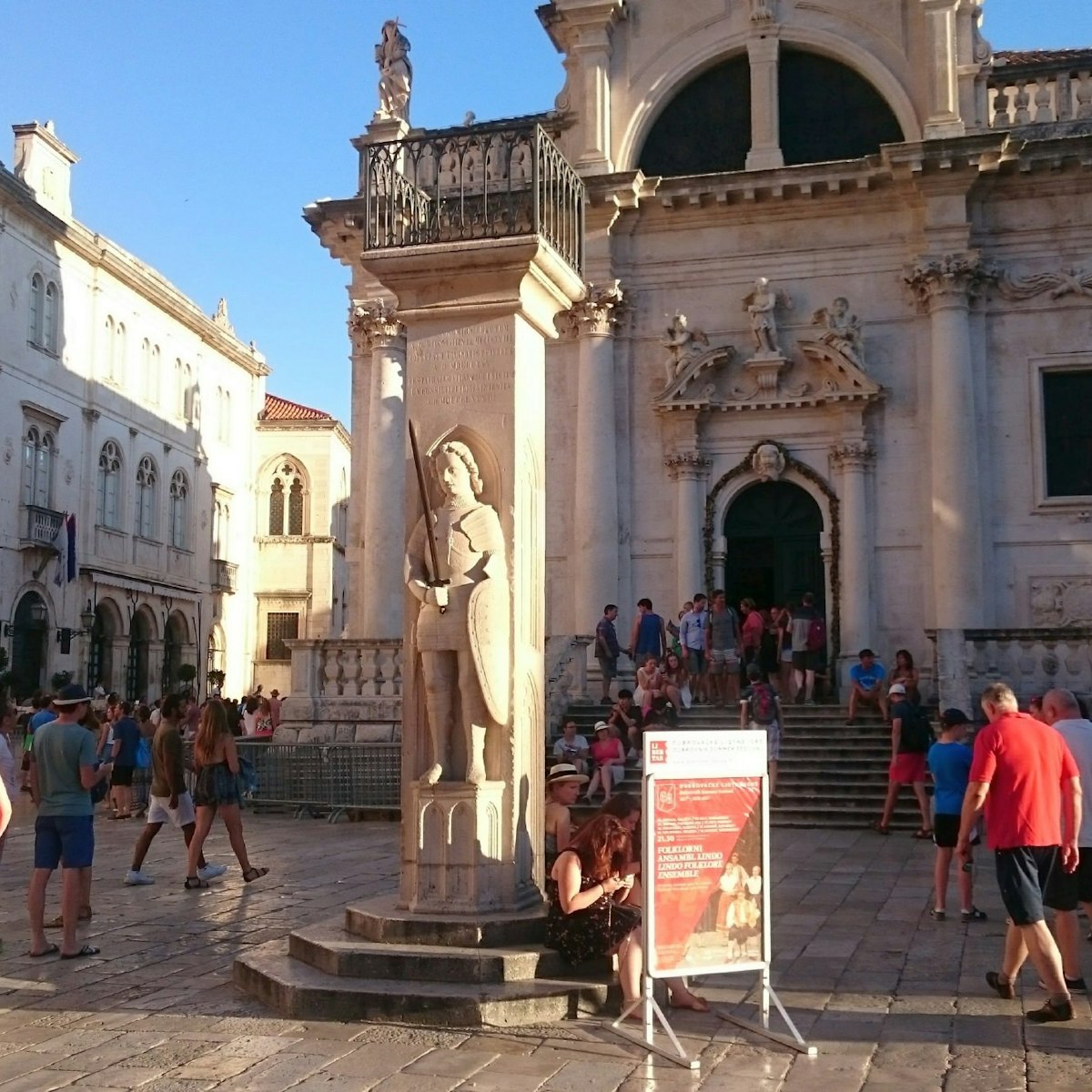
Orlando Column
Luža Sq once served as a marketplace, and this stone column – carved in 1417 and featuring the image of a medieval knight – used to be the spot where…

Clara Stones Jewellery
Split across two spaces facing each other across the lane, Clara Stones is all about appreciation of red Adriatic coral. The bold jewellery designs often…
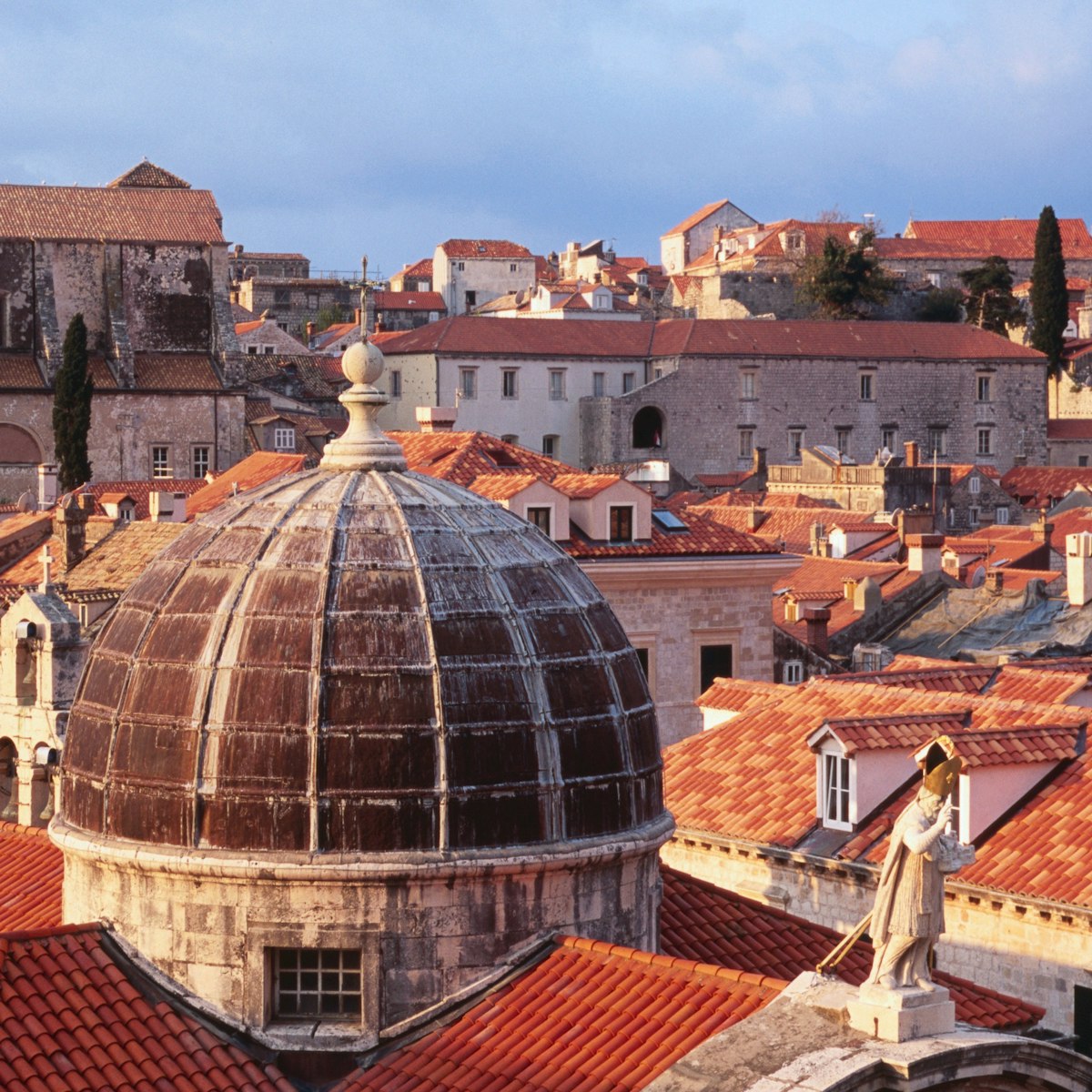
St Blaise’s Church
Dedicated to the city's patron saint, this exceptionally beautiful church was built in 1715 in the ornate baroque style. The interior is notable for its…
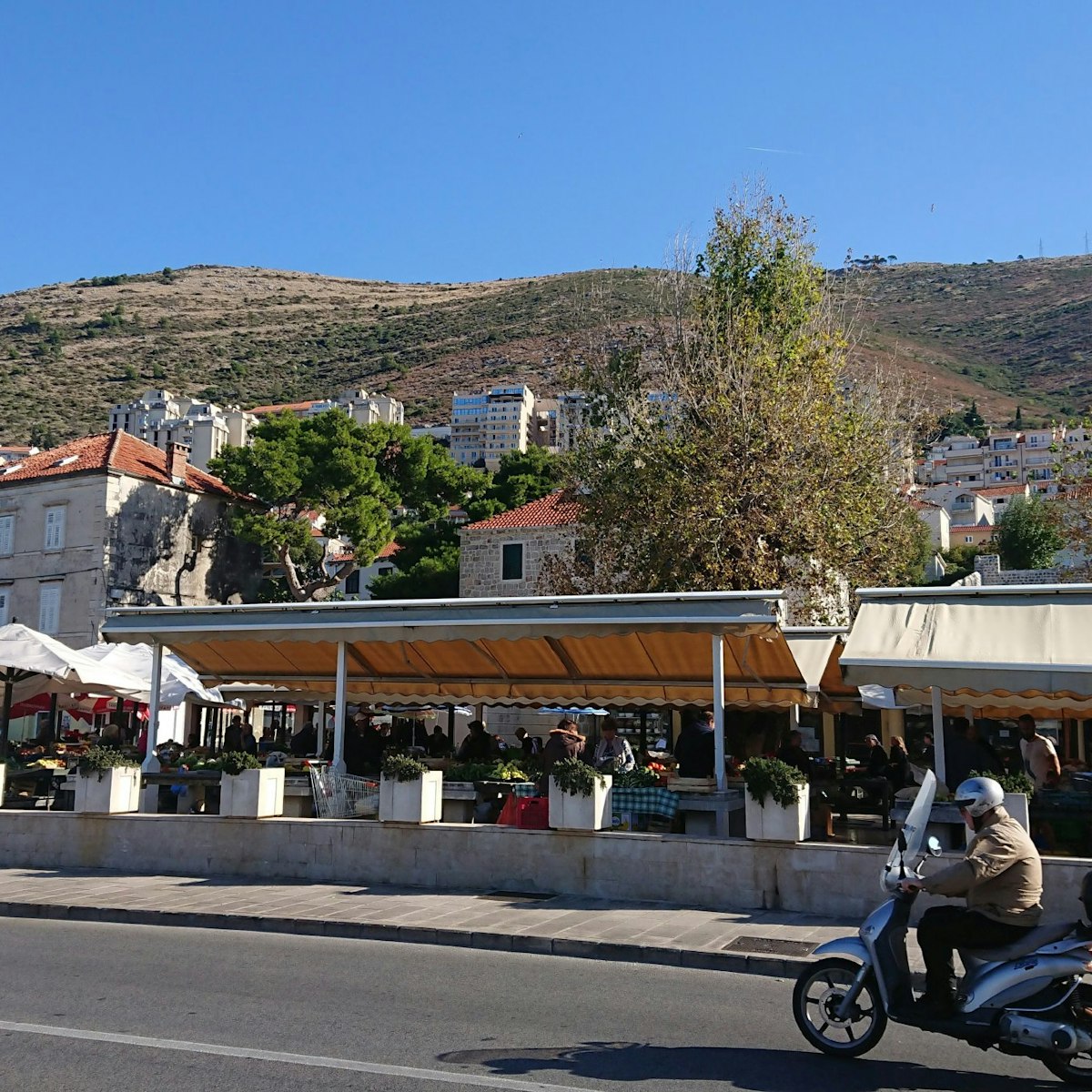
Gruž Market
Dubrovnik's main outdoor produce market sells fruit and vegetables, meat, fish, flowers and potted plants.
Planning Tools
Expert guidance to help you plan your trip.
Things to Know
Don't take your coffee to go, take the bus downtown, and other tips for first-time travelers to Dubrovnik.
Best Neighborhoods
From sightseeing in the Old Town to the modern waterfront hotels of Lapad, these are the 6 best neighborhoods in Dubrovnik to stay, play and explore.
Hang on? You want to leave Dubrovnik? Try one of these amazing day trips.
Money and Costs
Do more. Spend less. How to visit Dubrovnik without going broke.
Transportation
Tucked between Mt Srđ and the sea, Dubrovnik scores highly for its stunning natural setting. Here are the best ways to get around the Pearl of the Adriatic.
Free Things to Do
Some of the best things to do in Dubrovnik are completely free.
Plan with a local
Experience the real Croatia
Let a local expert craft your dream trip.
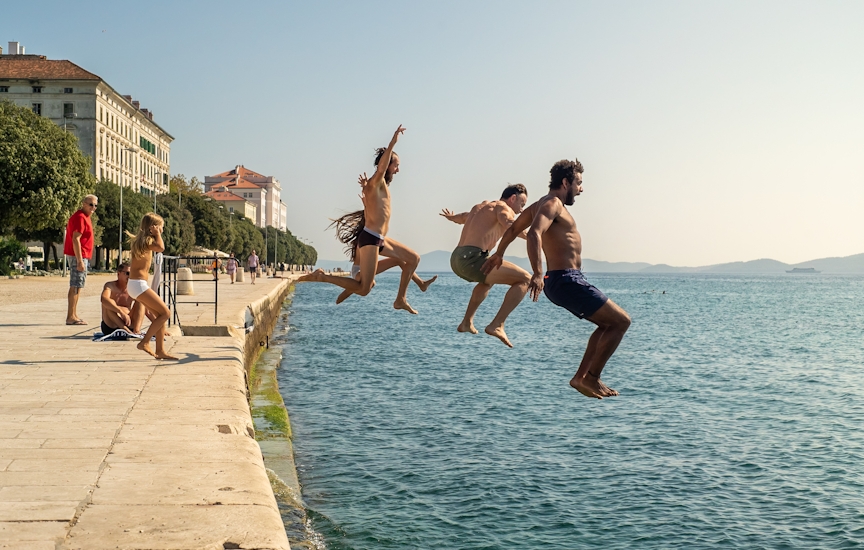
Latest stories from Dubrovnik
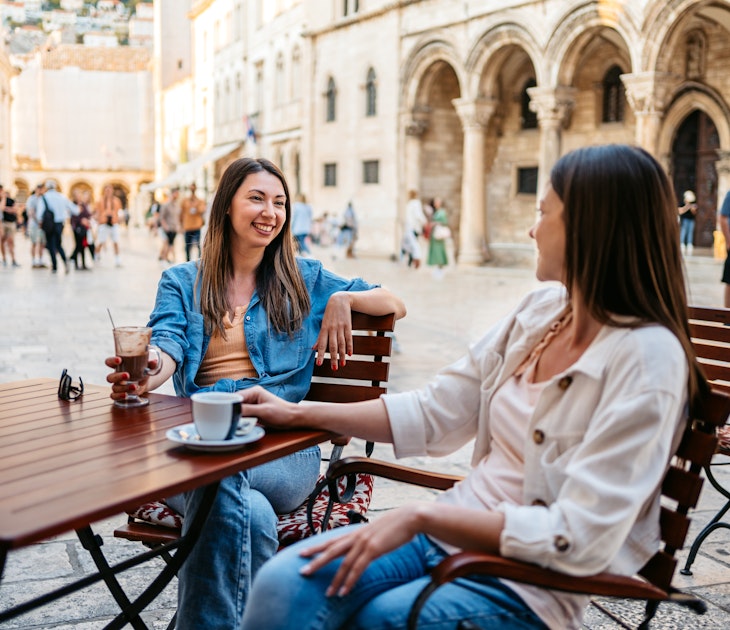
Destination Practicalities
Dec 18, 2023 • 6 min read
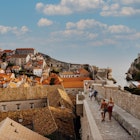
Nov 21, 2023 • 9 min read
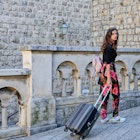
Jun 30, 2023 • 2 min read
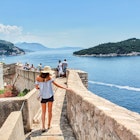
Jun 22, 2023 • 8 min read
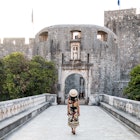
Apr 15, 2023 • 7 min read
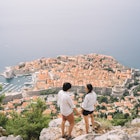
Mar 19, 2023 • 6 min read
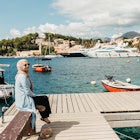
Feb 24, 2023 • 7 min read
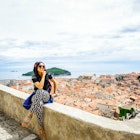
Feb 19, 2023 • 5 min read
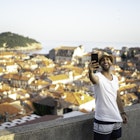
Feb 15, 2023 • 5 min read

Jun 11, 2022 • 6 min read
in partnership with getyourguide
Book popular activities in Dubrovnik
Purchase our award-winning guidebooks.
Get to the heart of Dubrovnik with one of our in-depth, award-winning guidebooks, covering maps, itineraries, and expert guidance.
SAY YES! TO
Sailing & boating, nature & adventure, food & wine, say yes to everything.
Say ”YES” to Zadar region,
The Zadar region has a truly amazing geographical position, located in the centre of the East Adriatic and surrounded by stunning nature of great variety.
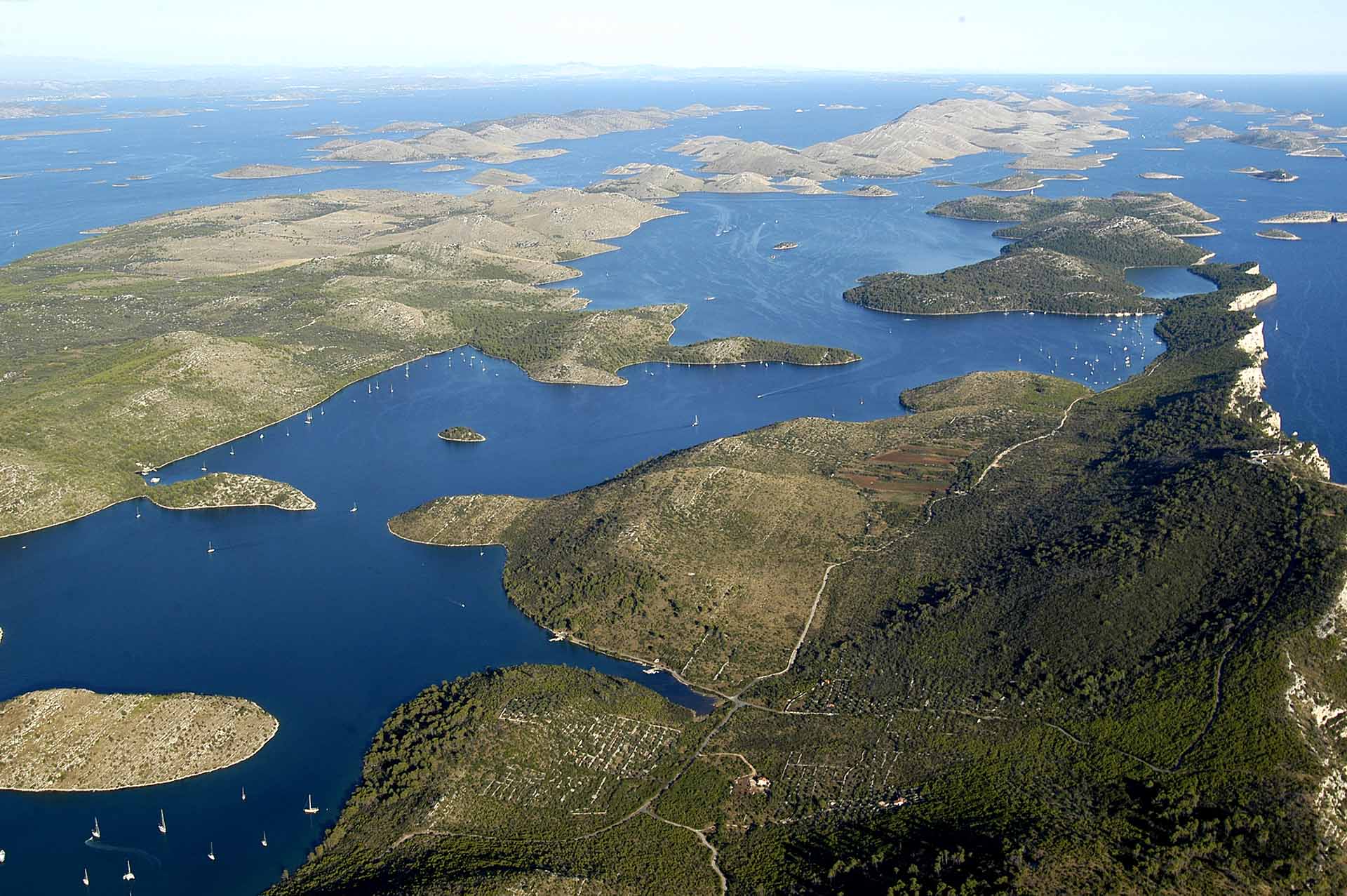
National & Nature Parks , Sailing & Boating
GUIDE TO NATURE PARK TELAŠĆICA
Located in: Islands
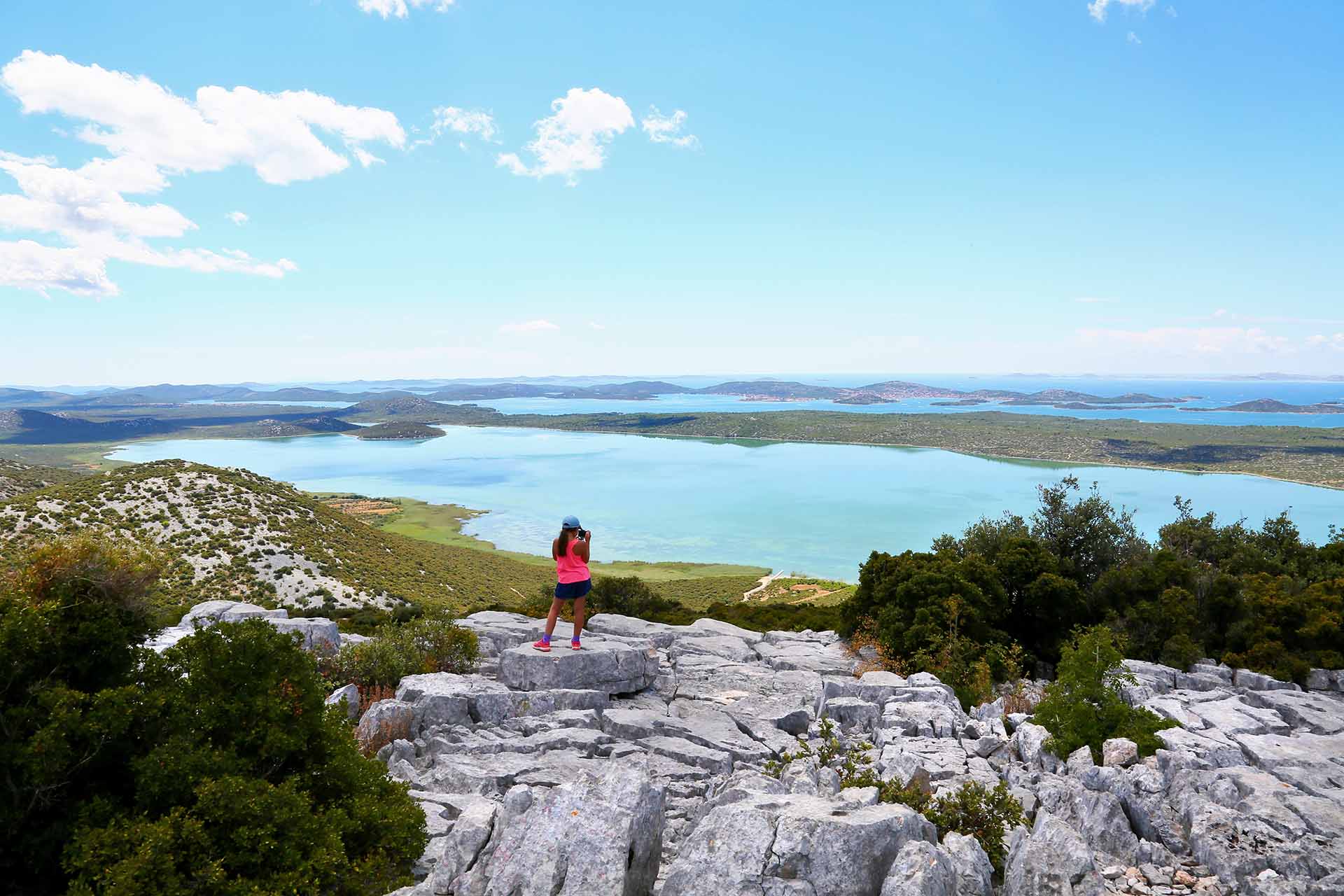
Nature & Adventure , National & Nature Parks
GUIDE TO NATURE PARK VRANSKO LAKE
Located in: Biograd Riviera
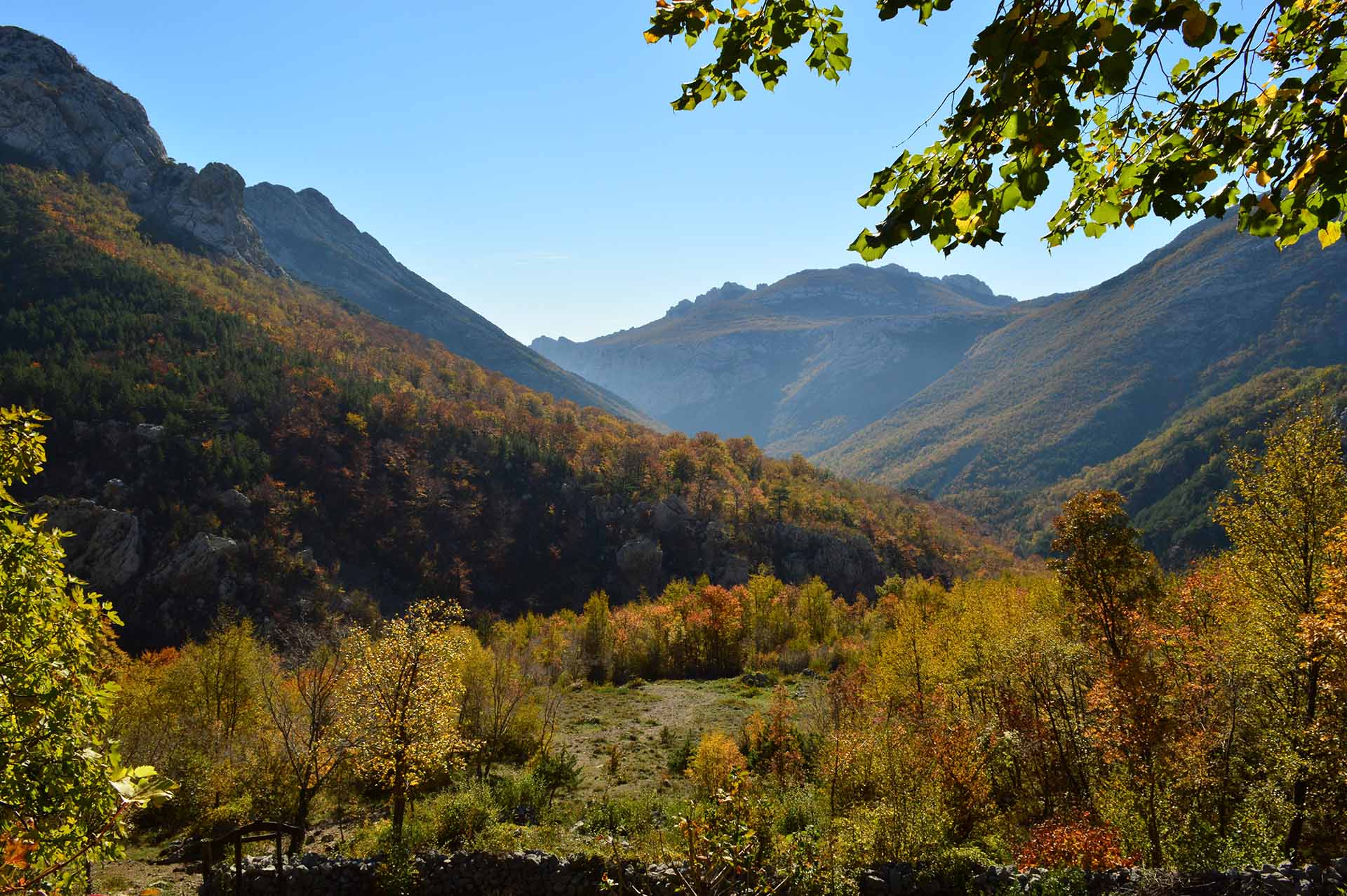
GUIDE TO PAKLENICA NATIONAL PARK
Located in: Paklenica Riviera
Explore Destinations
Nin riviera, biograd riviera, island of pag, paklenica riviera.
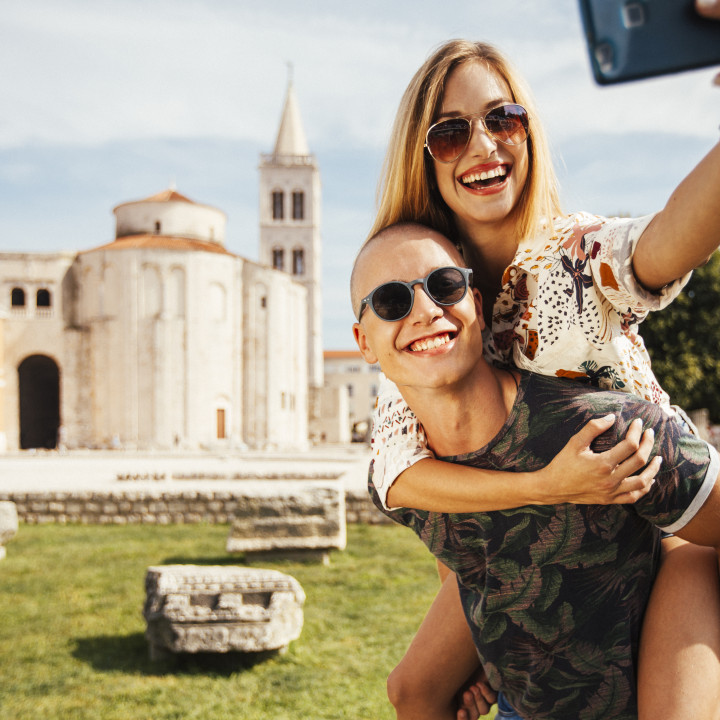
Zadar Street Food Festival - SPRING EDITION
Island pag trail, wings for life world run.
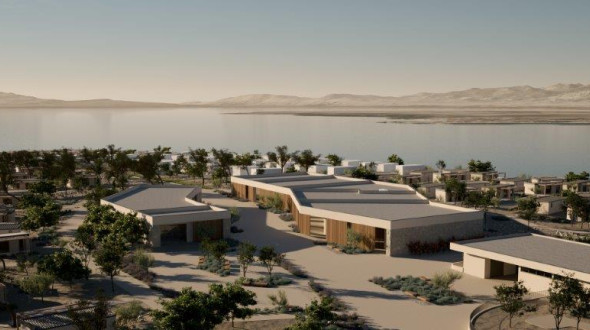
26.02.2024.
The Second 5-star Camp in Zadar Region Will Be Opening Soon – Aminess Avalona Camping Resort on the Island of Pag
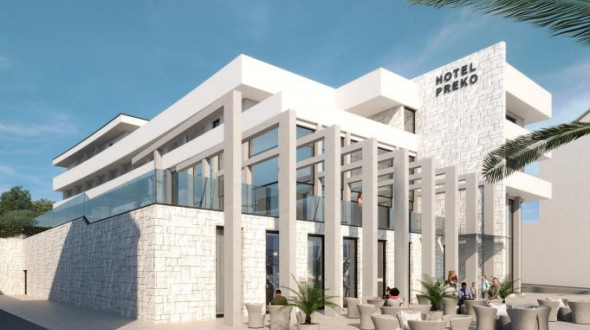
23.01.2024.
New hotel in Preko on the island of Ugljan
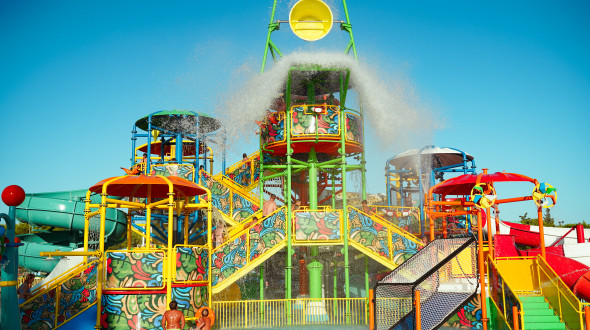
04.09.2023.
DALMALAND - FUN & AQUA PARK IN BIOGRAD NA MORU
#zadar_region.
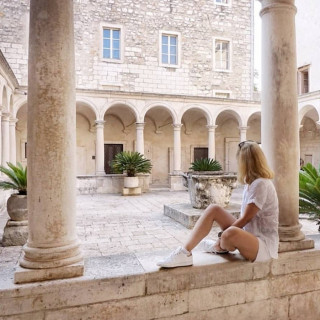

IMAGES
VIDEO
COMMENTS
Explore Croatia with Croatian National Tourist Broad. Unforgettable summer and winter vacations await. Discover, plan, and welcome to a land of memories!
Most are marked with FKK - the German phrase "Frei-Körper-Kultur," meaning free body culture - which isn't surprising as Germans make up some of the biggest numbers of tourists in Croatia. Away from the FKK beaches, topless bathing is quite common. 8. Dodge the crowds in Dubrovnik by timing your visit carefully.
Mar 20, 2024 • 11 min read. Whether you're after sun-drenched beaches or avoiding the crowds and braving the chill, we've got all you need to know about when to visit Croatia. Hiking. The 5 best hikes to do in Croatia. Mar 19, 2024 • 7 min read. Family Travel. Everything you need to know about visiting Croatia with kids. Mar 18, 2024 • 7 ...
Yet since you have to start somewhere, here's our rundown of the very best places to visit in Croatia. 1. Plitvice Lakes National Park. A turquoise ribbon of lakes linked by gushing waterfalls in the forested heart of continental Croatia, UNESCO-listed Plitvice Lakes National Park is an awe-inspiring sight.
Average winter temperatures are around 10°C, with January being the coldest month with daily average temperatures of less than 10°C (50°F). The average sea temperature varies from 12°C (54°F) in winter to 25°C (77°F) in summer. Croatia's interior has a moderate continental climate.
Gorski Kotar. While the country's coast may be one of the best places to visit in Croatia for local residents and visitors alike, general interest in the great outdoors has spiked in recent years ...
Zlatni Rat, located on the island of Brač, is often referred to as the "Golden Horn" due to its distinctive shape and offers a picturesque spot for sunbathing and water sports. For a blend of history and relaxation, Banje Beach in Dubrovnik is an amazing spot, only a 10-minute walk from the Old Town.
The ultimate Croatia travel guide for first-timers - Adventurous Miriam. 284 shares. 225. 59. I've created this complete Croatia travel guide with all the information you need to plan your visit to Croatia for the first time. In the last few years, Croatia has pulled in tourists from around the world for its Game of Thrones filming locations.
Croatia.hr - Croatian Tourist Board. Official travel guide for Your holidays in Croatia provides directions for travel, accommodation, attractions, events, business and more to plan your Mediterranean holiday.
Welcome to the Visit Croatia website! Online since 1998, we're the top resource for all travel-related information on Croatia…and a little bit more besides! If you need assistance with organising a holiday, simply email us and we'd be more than happy to help. Whether you're here to gather some info for your holiday, research areas ...
4. Diocletian's Palace in Split. Split, Croatia's second biggest city after Zagreb, was established within the ancient Roman walls of the huge Diocletian Palace (Dioklecijanova palaca). Situated overlooking the Adriatic Sea, it was built by Roman Emperor Diocletian, who retired here in AD 305.
The Tourist Office is at Svetog Dominika 7, 20000 Dubrovnik, tel: +385 (0)20 312 011, email: [email protected]. Additional info. ... Useful information on Croatia. Money in Croatia Visa Requirements for Croatia Buses in Croatia Ferries in Croatia Top Ten Destinations in Croatia
Call us in Washington, D.C. at 1-888-407-4747 (toll-free in the United States and Canada) or 1-202-501-4444 (from all other countries) from 8:00 a.m. to 8:00 p.m., Eastern Standard Time, Monday through Friday (except U.S. federal holidays). See the State Department's travel website for the Worldwide Caution and Travel Advisories.
Planning tip: Avoid the crowds by turning up first thing in the morning or late in the afternoon. 4. Cycle, hike and swim in Mljet National Park. Often visited as a day trip from Dubrovnik or Korčula, lusciously green Mljet is worth a more leisurely exploration, especially its national park.
The Riva. The Riva started to look the way it does today two centuries ago, when the French, in time of Napoleon ruled these parts ... More. Welcome to the official website of the Tourist Board of Split, Croatia.
Central Dalmatia is more than just a destination - it's a vibe. Whichever season you visit Dalmatia in, it will welcome you like royalty. Nestled along the picturesque Adriatic coast of Croatia, Central Dalmatia beckons travelers with its enchanting blend of stunning beaches, crystal-clear waters, and rich cultural heritage.
13th April 2024. Cavtat is the most southerly Croatian resort of all, located around 20 km south of Dubrovnik and only 22 km from the border with Montenegro. Cavtat is an exceedingly pretty town and is a great place to base yourself in if you're after all the sights and culture of Dubrovnik but don't want the hustle and bustle.
Official web site of the City of Rovinj Tourist Board, exhaustive information on hotels, camps, private accommodations
10. Nurse your espresso and steer clear of to-go cups. Croatians take drinking coffee seriously. This is a favorite local pastime and social ritual, so if you're invited for coffee, try not to pass. Whether you take an espresso or bijela kava (latte), sip it slowly and never take it in a to-go cup. 11.
It was slow travel at its most joyous, and worth the wait. Travel from Folkestone to Calais was provided by Le Shuttle (crossings from £87 each way). Seven nights' self-catering at IV-AN cost ...
3rd April 2024. Zadar is the main city in North Dalmatia, with about 75,000 inhabitants. Most famous for its Old Town, set in a peninsula that is completely pedestrianised, the town has numerous Roman and other wonderful sights - some rather modern - and is a delight to visit. A classic view of Zadar - St Donatus Church and the Belltower.
Croatia currently serves on UN Tourism's Committee on Tourism and Sustainability, having chaired it between 2019 and 2023. Alongside the Government's record of promoting responsible and sustainable tourism practices, this clear leadership and support for UN Tourism's core values make it the ideal location to host a collaborative platform ...
Dubrovnik. Croatia, Europe. A sense of awe will descend when you see the beauty of Dubrovnik's old town, with its ancient city walls, baroque buildings and the shimmer of the Adriatic. Best Time to Visit.
Nin Riviera. Nin is the oldest royal Croatian town and the place where the Croatian state was born. Today, Nin Riviera is a modern-day tourist destination that offers all types of activities for individuals and families alike: exquisite sandy beaches and intimate lovely coves as well as utterly entertaining resorts of the highest quality.